- Central African Republic
- Democratic Republic Of Congo
- Indian Ocean
- Republic Of Congo
- South Africa
- Latin America
- Galapagos Islands
- North America
- Polar regions
- Arctic Canada
- Australasia
- Gorilla Tracking
- Grizzly Bears
- Polar Bears
- Puma Tracking
- Snow Leopards
- Blue Whales
- Bengal Tigers
- Siberian Tigers
- African Lions
- Spirit Bears
- Lowland Gorillas
- Experiences
- Jungle Holidays
- Bush and Beach Combinations
- Conservation Travel
- Natural World Heroes
- Work with Us
- Consumer Protection Overview
- Privacy Policy
- Press and Awards
- Client Reviews
- Expedition Leaders
- Specialist Leaders
- Expeditions for Change
- Journey to Natures Edge
- Country: Settings: Country:
- Currency: Currency:
- Call Us (619) 975-8082
- Destinations
- Gorilla Trekking
- EXPERIENCES
- In the Press
- Journey to Nature's Edge

Gabon Wildlife
Celebrated as ‘Africa’s Last Living Eden’, Gabon offers an unrivalled wealth of some of Africa’s most spectacular biodiversity and supports an exceptional abundance of undiscovered wildlife experiences.
Unapologetically wild and enchanting, you can find forest elephants, forest buffalos, chimpanzees, gorillas, and hope to see breaching humpback whale at the same spot. Loango National Park is famous for its beachcomber forest elephants and surfing hippos that roam its wild coastline, the national park is also brimming mangrove forests, mirrored waterways, speckled tidal lagoons and a vast track of savannah. Here large herds of forest elephant, forest buffalo, monkeys, chimpanzee, red river hogs, hippo, sitatunga, duiker, crocodile and over 420 bird species cover the landscape.
Gorilla trekking is popular at Loango with one main habituated group of western lowland gorillas for guests to spend time with in one of the world’s most intact primate habitats.
Chimpanzees
Gabon is also home to a number of chimpanzees, which can be found in the forests of the national parks. The Mikongo Conservation Center in Lopé National Park is a great place to learn about and see chimpanzees in their natural habitat. Chimpanzees are great apes that are found in several African countries, including Gabon. Gabon is home to a number of different subspecies of chimpanzees, including the central chimpanzee and the Nigeria-Cameroon chimpanzee. Chimpanzees are highly intelligent and social animals, with a complex social hierarchy and communication system. They are known to use tools in the wild, such as sticks to fish for termites or rocks to crack open nuts. They are omnivorous and feed on a variety of foods, including fruits, leaves, insects, and small animals.
Read about Encounters with Primates

Safaris & Planning

Gabon Jungle & Beach Explorer Safari
Unparalleled beauty ranges across Gabon's varying landscapes, with unexplored wilderness as far as the eye can see. Rolling savannahs and impenetrable rainforests shelter large gatherings of colobus, chimpanzee, and lowland gorillas, whilst a labyrinth of entangled mangroves frame the glistening coast forming a hotspot for migrating sea turtles, humpback whales, and hippos surfing the waves. This unforgettable expedition showcases some of the best of equatorial Africa, a surreal experience plummeting you into a lost world of idyllic wilderness. Gabon is, without a doubt, a must-see destination for everyone with a spirited interest in the natural world.

Mandrills (Mandrillus sphinx) are Old World monkeys that are found in the rainforests of central and West Africa, including Gabon. Gabon is home to one of the largest populations of mandrills in the world, with an estimated 15,000 individuals living in the country's rainforests. Mandrills are easily recognized by their striking coloration, which includes blue and red markings on their faces and brightly colored rumps. They are the largest species of monkey in the world, with males weighing up to 120 pounds. Mandrills are primarily arboreal and spend much of their time in trees, although they will also come down to the ground to forage for food. They are omnivorous and feed on a variety of fruits, seeds, insects, and small animals.
Where to Go
A guide of where to go in gabon.

What to expect from a trip to Gabon

Gabon is home to a population of forest elephants (Loxodonta cyclotis), which are a subspecies of African elephants adapted to living in dense rainforest habitats. The forest elephants in Gabon are an important part of the country's biodiversity, and play a key role in maintaining the health and diversity of forest ecosystems. Forest elephants are smaller than their savanna elephant counterparts, with rounder ears and straighter tusks. They are highly social and form tight-knit family groups led by a matriarchal elder female. They communicate through a variety of vocalizations, and use low-frequency rumbling sounds that can travel long distances through the forest.
Forest Buffalo
The forest buffalo, also known as the dwarf buffalo or the Gabonese forest buffalo, is a subspecies of the African buffalo that is found in the rainforests of central and West Africa, including Gabon. In Gabon, forest buffalo populations are found in a number of protected areas, including Loango National Park, Moukalaba-Doudou National Park, and Ivindo National Park. These buffalo are adapted to living in dense forests, where they feed on a variety of plant material, including leaves, bark, and fruits. The forest buffalo is smaller in size compared to the savanna buffalo, and has a reddish-brown coat with a shaggy appearance. They have shorter and curved horns compared to their savanna counterparts. They are social animals and can form herds of up to 40 individuals, which are typically led by a dominant male. The forest buffalo is an important species in the ecosystems of Gabon's rainforests, playing a role in seed dispersal and maintaining vegetation.
Gabon aims to become Africa's off-the-beaten-path safari destination in 2023
Mar 27, 2023 • 5 min read
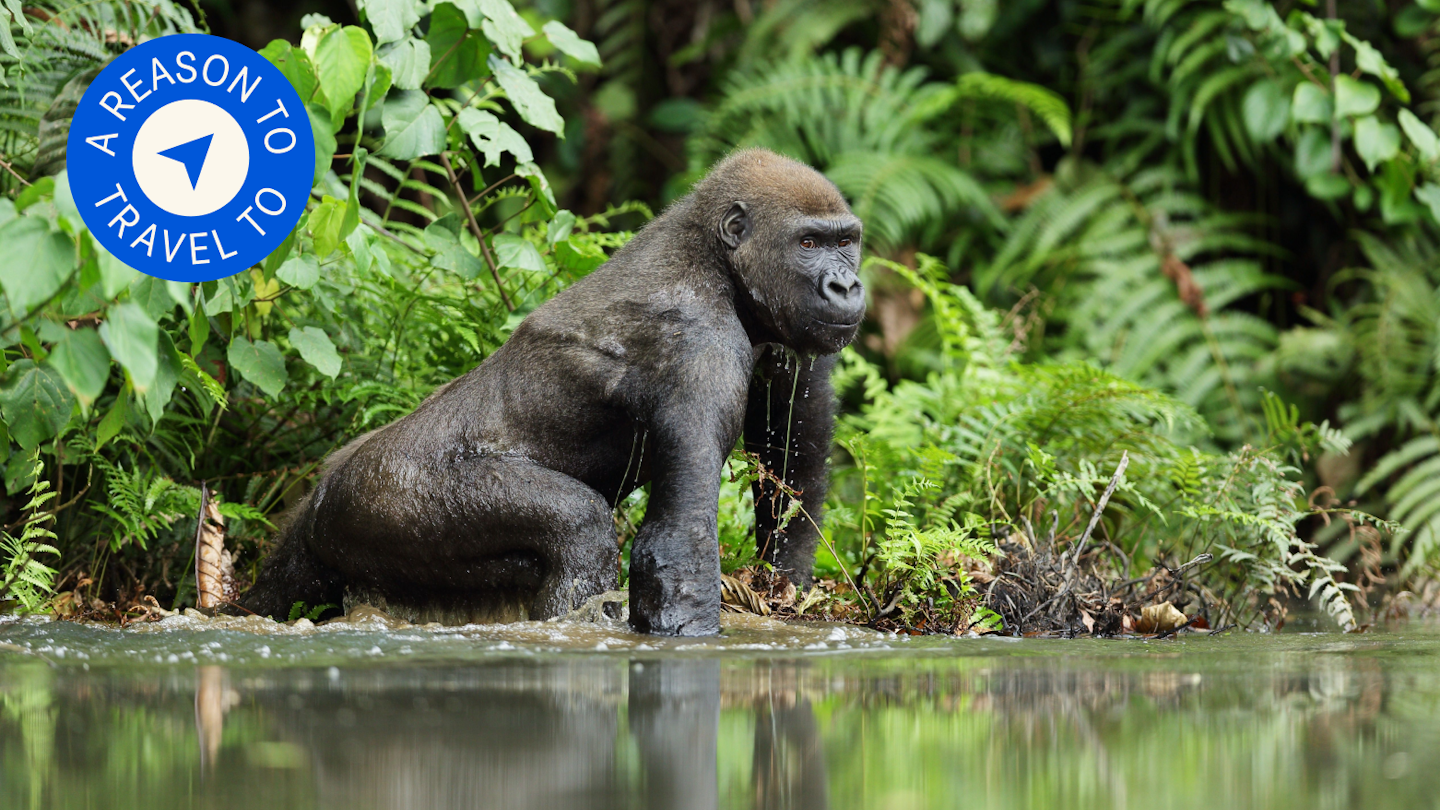
Gorillas are among the wondrous wildlife you can spot on a safari in Gabon © Michal Jirous / Shutterstock
Two buffalo saunter along white sands to splash in the Atlantic Ocean before disappearing into a thick forest stretching down to the beaches of Pongara National Park . In a country where an estimated 88% of the land is still primary forest, wildlife encounters like this soon become all too commonplace.
Welcome to little-known Gabon , the African country that’s home to two million people, 95,000 elephants and thousands of lowland gorillas and chimpanzees – and which is attempting to position itself as an alternative safari destination in 2023. Launching itself to the world in January as “ The Last Eden ,” Gabon is where the lush forests of equatorial Africa collide with the crashing surf of the Atlantic.
Look at a map of West Africa and you can pick out the large land mass of Gabon (which has some 100,000 square miles of rainforest, mountains and coastline) between Equatorial Guinea , Cameroon and the Republic of Congo . This former French colony is one of the most biodiverse destinations in the region, with 13 national parks protecting 11 per cent of the country’s nature and wildlife.
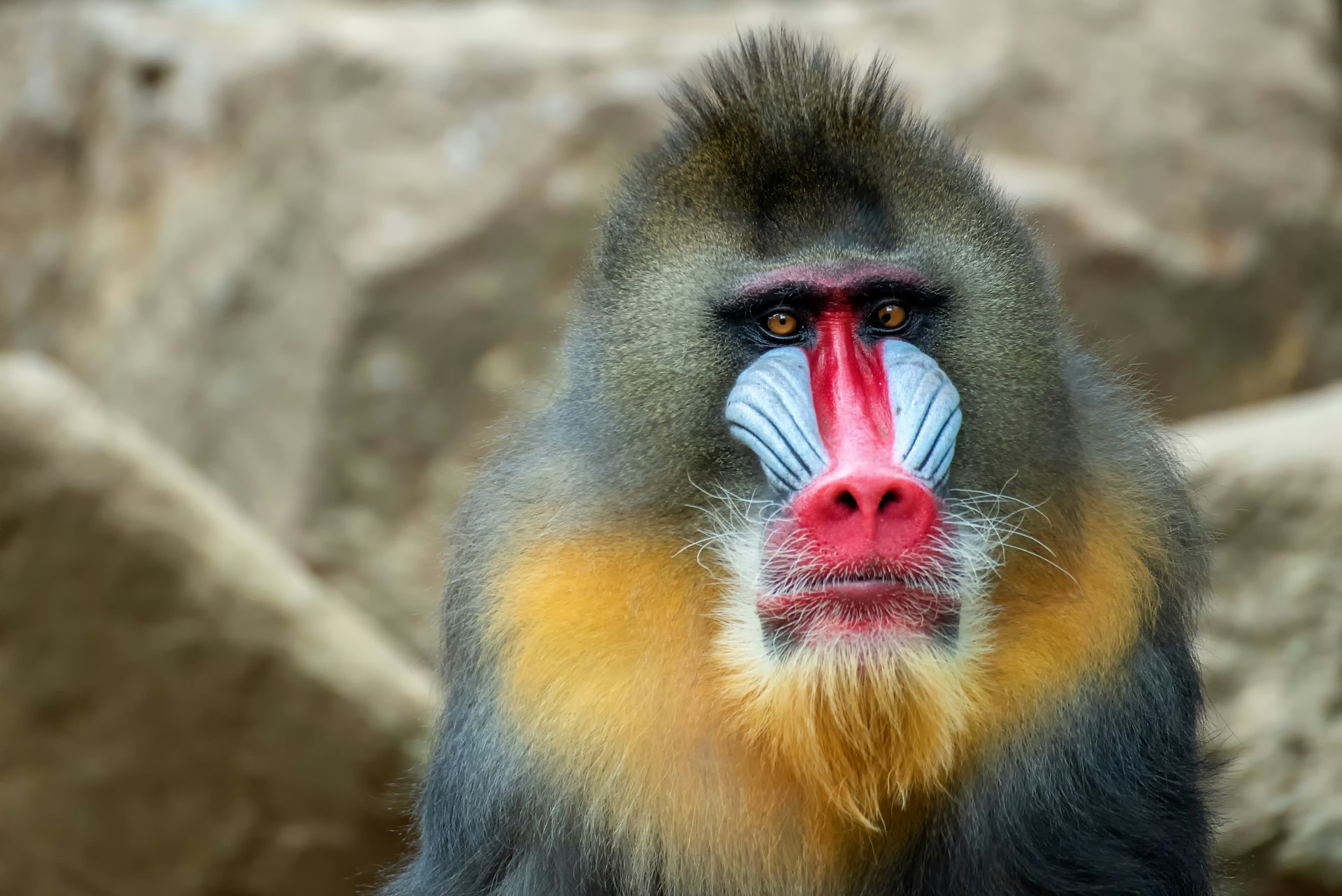
For the adventurous traveler looking to get off the well-trod safari circuit, Gabon delivers extraordinary wildlife to spot. Gorilla trekking is possible in Loango National Park (where permits, at around $900, cost less than in Rwanda or Uganda ). Large troupes of mandrills (the world’s largest species of monkey) are found in Lopé National Park , while Gabon’s unusual “surfing hippos” can be spotted on the Atlantic Coast. (The creatures quite literally…run into the ocean’s surf.)
Forest elephants and buffalo are everywhere, and they’re easily spotted in Pongara National Park. Just a 30-minute boat ride away from Libreville , the capital city, Pongara also offers unique opportunities for a coastal safari, where buffalo can be seen on the white sand beaches and hippos spotted among the dense mangroves. Whales can be spotted off the same beaches between July and September, while leatherback turtles nest here in December and January.
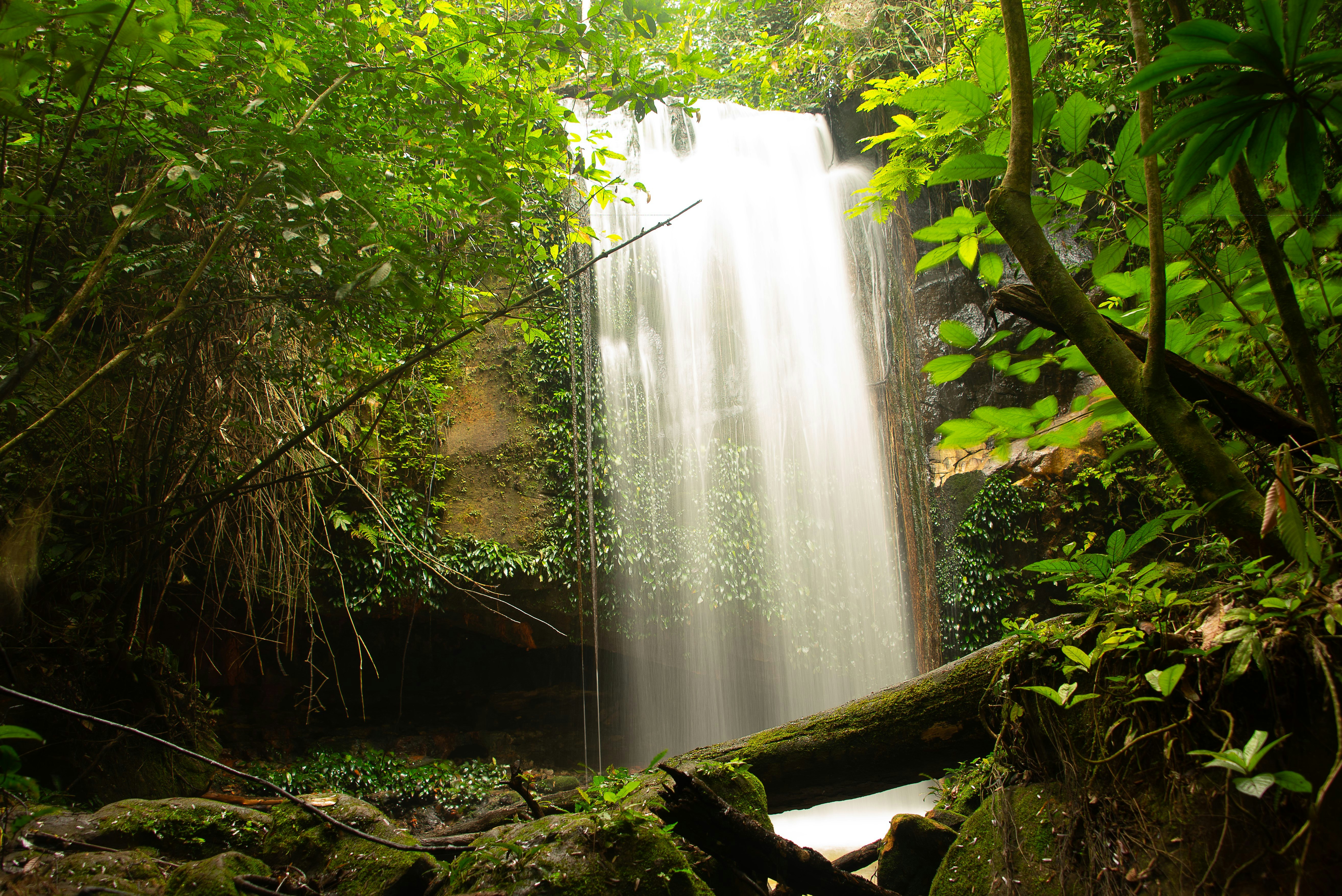
Visit Gabon in 2023 and you’ll be seeing the nation in a raw state. Historically, Gabon hasn't pushed for tourism due to its economic reliance on fossil fuels like oil and gas. Today, the government is seeking to move away from extractive industries and betting that ecotourism can not only fill a looming economic void but help to protect one of the world’s few carbon-negative countries. On paper, Gabon’s green credentials are excellent, with innovative conservation programs using AI cameras to track wildlife and catch poachers , Meanwhile, authorities hope to raise conservation funds by selling “carbon credits” to richer countries.
Yet tourism is a new concept in Gabon, and infrastructure and facilities for ecotourism are limited outside of the well-established safari lodges and resorts in Pongara National Park. There’s often a disconnect between Gabon’s grand ecotourism plans and the reality on the ground. Space in safari lodges is limited, gorilla-trekking permits are difficult to secure given that there’s currently only one habituated family of gorillas in Loango National Park, and NGOs struggle to raise funds to rehabilitate trafficked gorillas and other animals. Human-wildlife conflicts are common, too: the country has installed an extensive network of electric fences to stop elephants from encroaching on villages.
For the intrepid safari goer, however, this all adds to the destination’s intrigue. Just remember that Gabon is very much an emerging tourism destination, and that not everything will go to plan. If you’re prepared to be waylaid by tropical rains and aren’t scared by early morning run-ins with elephants on bush hikes, then the country’s potential as an alternative safari destination is an irresistible reason to visit Gabon in 2023.
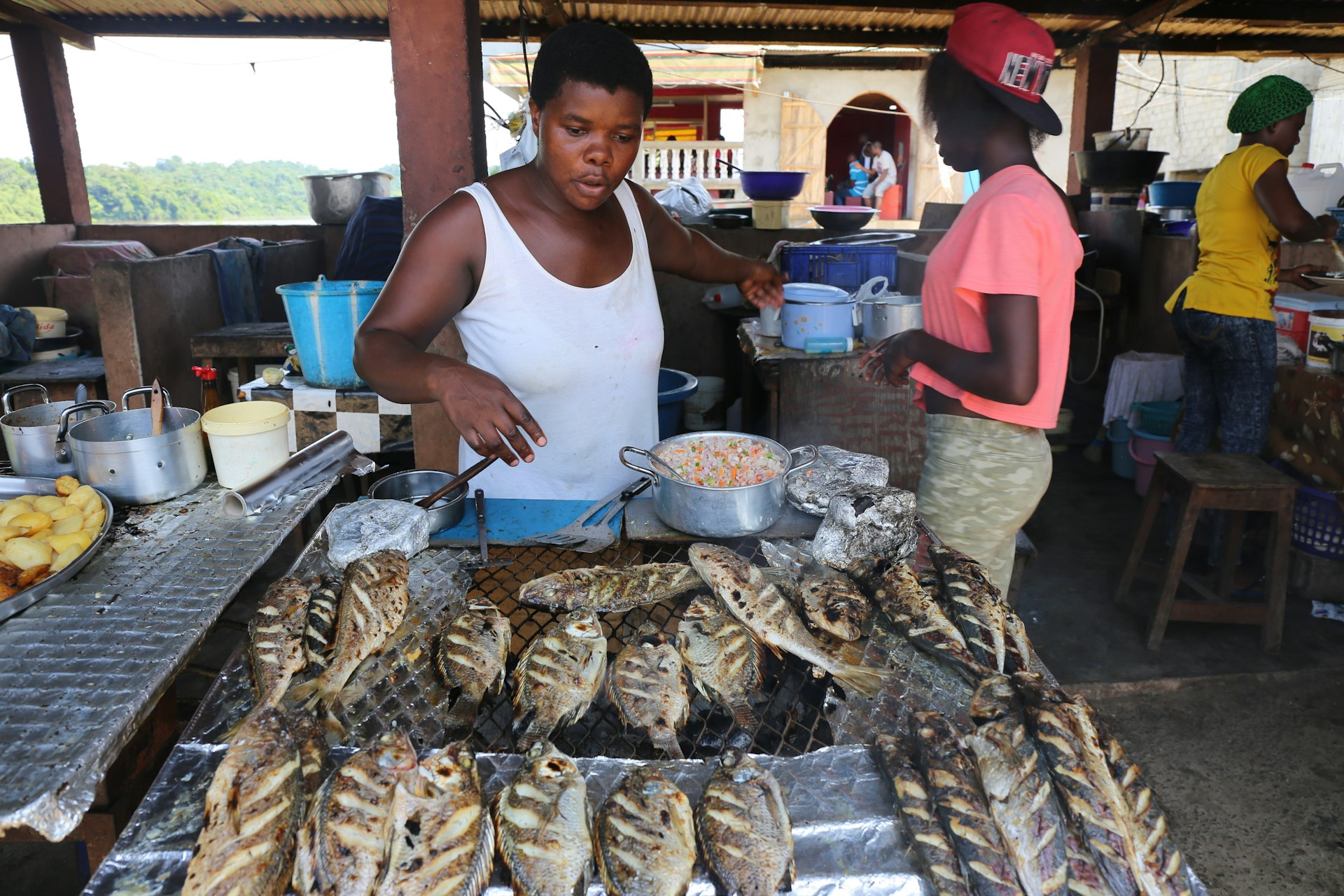
Where to eat in Gabon
You’ll want to fuel up for a day on safari, and baguettes, pastries and omelets make for a wholesome French-inspired breakfast. Barbecued prawns ( gambas ) and grilled chicken are a feature of tantalizing post-safari beach buffets, as you enjoy fresh seafood, meat and vegetables as the sun sets over the Atlantic Ocean.
Gabonese cooking provides a sublime blend of West African spices and French cooking techniques (a culinary holdover from the colonial period). Brochette (skewered, barbecued fish and meat) is a favorite at resorts like Pongara Lodge , while plantains and cassava are often followed by chocolate mousse and crème brûlée. The nation’s favorite dish is nyembwe chicken, a stewed delicacy prepared with palm butter, onions and garlic.
Where to drink in Gabon
If you’re dining in Libreville’s fanciest restaurants (try Roma for upmarket Mediterranean cuisine with West African flair), then don’t be surprised by the eclectic wine menus. Yet the availability of Bordeaux wines in remote safari lodges across Gabon might surprise you. For the more casual traveler, Libreville’s beaches are the place to wind down with a beachside beer at a restaurant or bar overlooking the water. The local beer of choice is Regab, which should only ever be served ice-cold.
Where to stay in Gabon
Located on the beaches just north of Libreville’s airport, Hotel La Sablière is a luxurious place to start your Gabonese journey. In the city center to the south, you can take your pick of the Park Inn by Radisson , Hôtel le Cristal and many other hotels in the capital. The real adventure begins in the national parks. Pongara National Park, just a quick boat ride away from Libreville, is home to the relative luxury of Pongara Lodge and River Lodge Resort, where you can enjoy scenic surroundings just steps away from the forest and beaches. In Loango National Park (where you can see gorillas and hippos), Luxury Green Resorts operates three luxury glamping camps in remote locations.
Explore related stories
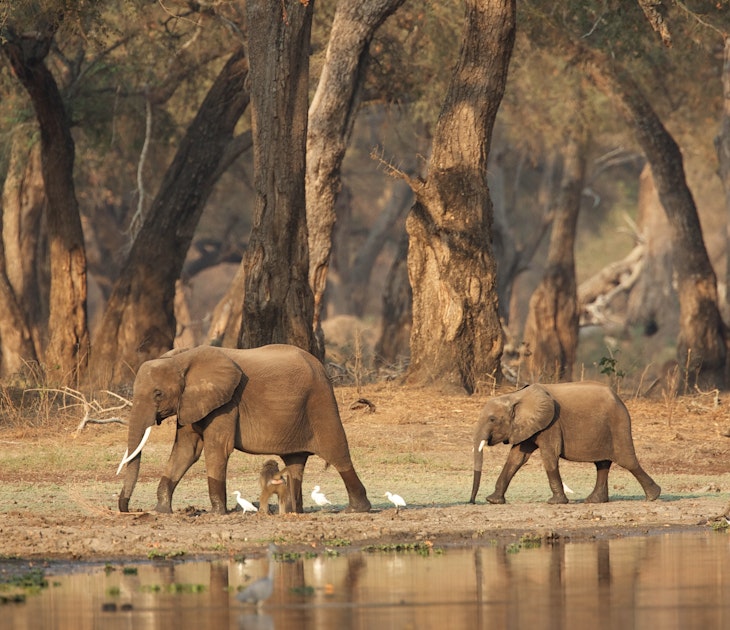
National Parks
Apr 25, 2024 • 7 min read
The African elephant is perhaps the most enduring symbol of nature’s grace and fragility. Here’s where to spot one (or many) in the wild.

Nov 30, 2023 • 5 min read
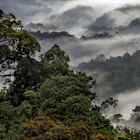
Nov 30, 2023 • 6 min read
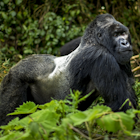
Nov 30, 2023 • 7 min read
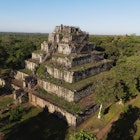
Sep 28, 2023 • 6 min read
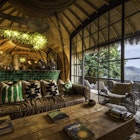
Jan 12, 2023 • 9 min read
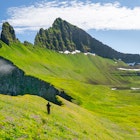
Dec 6, 2022 • 10 min read
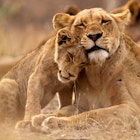
Sep 8, 2022 • 7 min read

Feb 2, 2022 • 6 min read
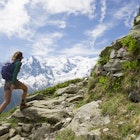
Jan 19, 2021 • 10 min read
Nature Travel Expeditions
Unique Wildlife, Nature and Conservation experiences (Guided Group- & affordable Private tours)
Gabon Wildlife Expedition
Explore gabon and the beautiful lopé and loango national parks..

Join us on an incredible journey exploring remote and beautiful Gabon. Our nine-night safari focuses on the Lopé and Loango National Parks . We will hike, kayak, and boat our way through some of the region’s most beautiful and biologically diverse landscapes. Wildlife highlights include a wilderness coastline visited by forest mammals, hippos surfing in the waves, gallery forests home to rare and endemic primates, abundant birdlife, gorilla tracking, and the chance of encountering some of the continent’s most enigmatic species.

** ALL OUR SAFARIS ARE FULLY CUSTOMIZABLE TO FIT YOUR REQUIREMENTS AND SUIT YOUR TRAVEL DATES
Highlights:
• Lopé National Park – First protected area in Gabon – UNESCO World Heritage Site. Important refuge to over 1400 endangered Mandrills • Loango National Park – Most unique wildlife watching spots on the planet • Mandrill Expedition
Day to Day Itinerary
DAY 1: Libreville – Upon arrival at the Leon Mba International Airport in Libreville, the capital city of Gabon. You will be welcomed by our ground personnel and transferred to your hotel for your night’s accommodation. With some time to relax and get use to the tropical climate of Gabon you can enjoy a late afternoon stroll on the beach or a sundowner on the hotel’s terrace. Libreville is set along the coast of the Central African country of Gabon, Libreville is the largest city and capital of the nation. This laid back yet vibrant and bustling port city features a palm-lined sea front boulevard dotted with parks and 20-foot Gabonese sculptures overlooking the gleaming coastline.
DAY 2: Libreville – Lopé National Park – After a lovely morning at leisure, you will depart in the afternoon to Owendo Station (Setrag) – Boarding at 17h00pm on the train Omnibus or Express on route to Lope National Park. We will arrival in Lope around 01h30am. You will be picked up from the train station and transferred to Lope Hotel where you will overnight.
DAY 3-4: Lopé National Park – This morning after breakfast we will enjoy doing some hikes in the area and visit some of the archaeological sites while exploring Lopé National Park. Lopé National Park’s vast wilderness covers 5,360km2 of virgin forest and intersects pockets of misty savannahs in its northern boundary. The first protected area in Gabon which was established in 1946, this UNESCO World Heritage-listed Park nurtures one of Africa’s most important prehistoric sites and ecologically significant reserves for primates.
Keeping company with large herds of Forest Elephants, Forest Buffalo and a variety of smaller mammals are Leopard, Golden Cat, Red River Hog, Sitatunga, Yellow Backed Duiker and various species of monkeys and apes — 4000 Western Lowland Gorillas, Chimpanzee and Sun-Tailed Guenon. An endemic species to Gabon, this long tailed monkey was only discovered just over three decades ago and lives within the hidden forests of the northern end of the park. On our next day you will get the opportunity to go on a tracking expedition in search of the Mandrills. Although some individuals are fitted with radio and GPS collars, it may still require a bit of a hike. Depending on their location, the visit should last about 3 – 4 hours. You will be back to Lope for lunch after this extraordinary experience. In the afternoon, you will enjoy kayaking on the Ogooué river. You will be back at the hotel around 17h30pm. Where you will enjoy your last dinner in Lopé.
DAY 5: Lope National Park – Lambaréné – After breakfast we will make our way to Lambaréné town. The drive to Lambaréné through Lope’s beautiful scenery takes up to 5 hours. You will stop for lunch in the colourful meal market of Ndjole town before continuing towards Lambaréné. At Lambaréné you will visit the Albert Schweitzer Hospital Museum and overnight in the town. The Albert Schweitzer Hospital, situated on the bank of the Ogoouée River in a tropical rain forest in Western Gabon, has served as the primary source of healthcare for the surrounding region since Doctor Schweitzer founded it in 1913. Today, an international staff of Gabonese and expatriate professionals provide skilled care for over 35,000 outpatient visits and more than 6,000 hospitalisations annually for patients from all parts of Gabon. Two surgeons and their teams carry out close to 2,200 operations annually. Most of the 160 members of the staff live in the hospital compound, which gives the hospital the feel of a village. Through support from the Gabonese government and Schweitzer organizations around the world, patients today find a modern medical facility that includes two operating rooms, a dental clinic, an inpatient ward for paediatric, adult medicine, surgical, and obstetrical patients.
DAY 6: Lambaréné – Loango National Park – After breakfast this morning, you will travel down the mighty Ogooué river to the lagoon village of Omboué. This boat ride will last around 6 hours. Once we reach Omboué, you will be transferred in a 4×4 vehicle for the last 50 km leading to Loango National Park on a laterite road for 40 km, before joining a small bush track for the last 10 km to “Loango’s park board offices”. This drive takes up to 1hr30 minutes. After registering at the parks board offices, you will start your journey by crossing the Iguela lagoon by boat to Loango Camps, where you can settle in your tent and enjoy the camp hospitality. After lunch you will go on your safari adventure inside the park then back to the camp in time to freshen up and be ready for dinner.
Loango National Park is the jewel in the crown of Gabon’s 13 parks and offers one the world’s most exhilarating safari experiences: thanks to its combination of scenery and wildlife. It is indeed magical Forest Elephants can be seen on the beach during the rainy season from November to April each year. If lucky during safari activities, you stand a chance to see Forest Elephants as mentioned above, surfing Hippos; Buffalos, Red River hog Monkeys, Chimpanzees, Gorillas, the three types of Crocodiles (Nile, Slender-snouted and Dwarf) and many rare bird species such as Rosy Bee-eaters and the River Martin while enjoying a sunset game drive or walking safaris along the beach.
DAY 7-9: Loango National Park – Today you will be up early enjoying breakfast at 06h00am and departure at 07h00am to Yatouga by boat Via Point Sitatunga. You will visit the Gorilla de Loango project. This project is the result of years and years of investment and hard work, which resulted in the first, properly habituated, lowland gorilla group in Gabon which first opened to tourist in 2016. You will meet up with the research team and be given a briefing about the visit. After the briefing you will depart by boat and then enter the forest on foot following a team of Pygmy master trackers whose daily task it is to track Kamaya, the western lowland gorilla silverback, and his family, including two youngsters.
Once contact is made with the gorilla group, you will have the chance to observe them from close-up (often 10 – 15 meters). It is an incredible experience watching these great apes in their natural habitat doing what gorillas do for a living. You will enjoy lunch at Yatouga, and then an afternoon safari activity on your way back to the camp. This morning after breakfast you will get the opportunity to discover another part of Africa’s last great coastal wilderness. During your days in Loango National Park, you shall experience a combination of morning and afternoon 4×4, boat and walking safaris. In addition, a night safari is sometimes offered depending on the season. Every day, you will return to the camp just before sunset to be able to freshen up before dinner and a night under canvas in a true nature paradise.
DAY 10: Loango National Park – Port Gentil – Libreville – Departure – Your last morning you will have a choice to either rest in camp or enjoy a safari of your choice. After lunch you will depart at 12h30pm for Port Gentil International Airport arriving in time for your domestic flight to Libreville and then onwards for your international flight back home. Depending on flight times we can arrange an extra night’s accommodation in Libreville if needed.
- whatsapp/ Call Us On:
- Africa: +256 706 422669
- Overseas: +61 427413130
- [email protected]

Gabon Safari Tours & Holidays
Gabon, a country along the Atlantic coast of Central Africa, has significant areas of protected parkland. The forested coastal terrain of its famed Loango National Park shelters a diversity of wildlife, from gorillas and hippos to whales. Lopé National Park consists of mostly rain forest. Akanda National Park is known for its mangroves and tidal beaches.
Gabon is also noted for efforts to preserve the natural environment. In 2002, President Omar Bongo Ondimba designated roughly 10% of the nation’s territory to be part of its national park system (with 13 parks in total), one of the largest proportions of natural parkland in the world.
Africa last living Eden Gabon, Gabon is unapologetically wild and beguiling — a time traveller’s rapture. Coined as ‘Africa’s Last Living Eden,’ each of the 13 designated national parks that fan across Gabon not only offers some of equatorial Africa’s most remarkable biodiversity but also a wealth of undiscovered wildlife experiences and unforgettable eco-adventures like no other.
How to get to Gabon
The quickest route to Gabon from the UK or the USA is with Air France (www.airfrance.com) via Paris. Other options include flights with Ethiopian Airlines (www.ethiopianairlines.com) via Addis Ababa, Royal Air Maroc (www.royalairmaroc.com) via Casablanca, and Turkish Airlines (www.turkishairlines.com) via Istanbul.
Passport, Visa and Entry requirements for Gabon
With exception to Gabonese and South African nationals, all international visitors and other African passport holders to Gabon will require appropriate ID, a passport that has been valid for six months, a valid visa and proof of travel insurance
The health sector of Gabon
The Gabonese health system is comprised of three sectors: public (civilian and military), Para public (a network of providers of the National Social Security Fund, and private (for-profit, non-profit, and traditional medicine).siting in the Equatorial region travellers are advised to take health precaution while travelling to Gabon and that includes purchasing health insurance while travelling to Gabon.
Malaria and Yellow fever vaccination for Gabon
A valid Yellow Fever Vaccination Certificate is required upon arrival in Gabon and the Risk of Malaria is very high throughout the whole of Gabon . If visiting this country you will require one of the prescription anti-malarial, of either Atovaquone and Proguanil Generic Malarone, Malarone, Doxycycline or Lariam.
Currency of Gabon
The Central African CFA franc (French: franc CFA or simply franc, ISO 4217 code: XAF) is the currency of six independent states in Central Africa: Cameroon, Central African Republic, Chad, Republic of the Congo, Equatorial Guinea and Gabon.
Official Language of Gabon
French is the country’s sole official language. It is estimated that 80% of Gabon’s population can speak French and that 30% of Libreville residents are native speakers of the language. Nationally, 32% of the Gabonese people speak the Fang language as a mother tongue.
Best time to travel to Gabon
The best time to visit Gabon is during the drier season of May to September, with June, July and August being the driest months, although ‘dry’ is relative here – Gabon experiences around 2.5m of rainfall a year.
What to wear in Gabon
As Gabon is hot and humid, you’ll need light, loose clothing. Make sure you have long-sleeved shirts and long pants for early mornings and evenings to avoid mosquito bites. Good walking boots are essential for visiting the national parks, as is a light waterproof jacket, even in the dry season.
What to bring while travelling to Gabon
The weight and size of your luggage are limited; whether you’re travelling in a 4 x 4 wheel drive, by aircraft or by train. The most important thing is to travel with soft-sided bags without wheels and ‘go light.’
- Use a lightweight duffel [waterproof] or soft-sided bag for clothing
- Pack in your carry-on bag only essential items such as spare clothing, your travel documents, light toiletries, camera and medications
- Carry a light, waterproof back-pack for trekking as it will help protect any electronic items from the elements of weather [dust, mud and rain]
- Choose a bag that provides you with side pockets and internal sections, so you can easily locate the item you’re searching for
- Keep your documentation and passport safe at all times
- Leave any plastic bags at home. Go “green” in Gabon and use material bags where possible
Car hire and driving in Gabon
Self-drive from both Libreville and Port Gentil but self-drive 4×4 rentals happen to be even more expensive than car rentals with driver in Gabon. However, Libreville is quite hard to get through once you get to Libreville and drive out of the city you will appreciate why Gabon remains a very expensive travel destination. But for full experience hire a driver along.
Accommodation in Gabon
Libreville , city and capital of Gabon, located on the north shore of the Gabon Estuary, which empties into the Gulf of Guinea and you can find decent accommodation but remotely there are limited places to stay though you may find cheap Auberges and local hotels
Local food of Gabon
Nyembwe chicken
In Gabon, the sauce is usually called Nyembwe from the Myene word for palm oil. The most important dish using Nyembwe is Nyembwe chicken which is considered a national dish of Gabon.
Tipping while Travelling in Gabon
Although in general around 10% is considered fair, there are no strict rules for tipping. Tipping for an expensive meal is perfectly acceptable, and generally, there is no need to tip for inexpensive meals or drinks on a night out.
Further information for Gabon
Gabon is a country in west-central Africa. It shares borders with Cameroon to the north, the Republic of the Congo to the east and south, and Equatorial Guinea to the northwest. To the west is the Gulf of Guinea. Gabon’s small population and natural resources have made it one of the region’s most prosperous countries.
Safety of Gabon
Petty crime, including pickpocketing, bag snatching, and vehicle break-ins, is common in Gabon. Keep your valuables out of sight. Violent crime, including robberies and armed attacks, occurs, especially in Libreville and Port Gentil so travellers are advised to take extra caution and re-frame from walking at Night.
NATIONAL PARKS
Fauna & flora, popular safaris, other tourists attractions, safari tours and holidays.

REQUEST ABOUT A TRIP QUOTE NOW
Fill out the form bellow and remember to be precise and detailed in the enquiry entry.
Your Nationality
Travel Date
No. Of Days
No. Of Persons
Accommodation —Please choose an option— Budget Standard Luxury
Phone Number
Interests (more options possible) Wildlife Viewing Bird Watching Gorilla Trekking Chimpanzee Tracking Cultural Tour
Additional Information (optional)
Important By submitting your data in this form you accept our data collection privacy policy . Make sure you read and understood the contents
- Skip to primary navigation
- Skip to main content
- Skip to footer

Chalo Africa
The Only Journey is the One Within
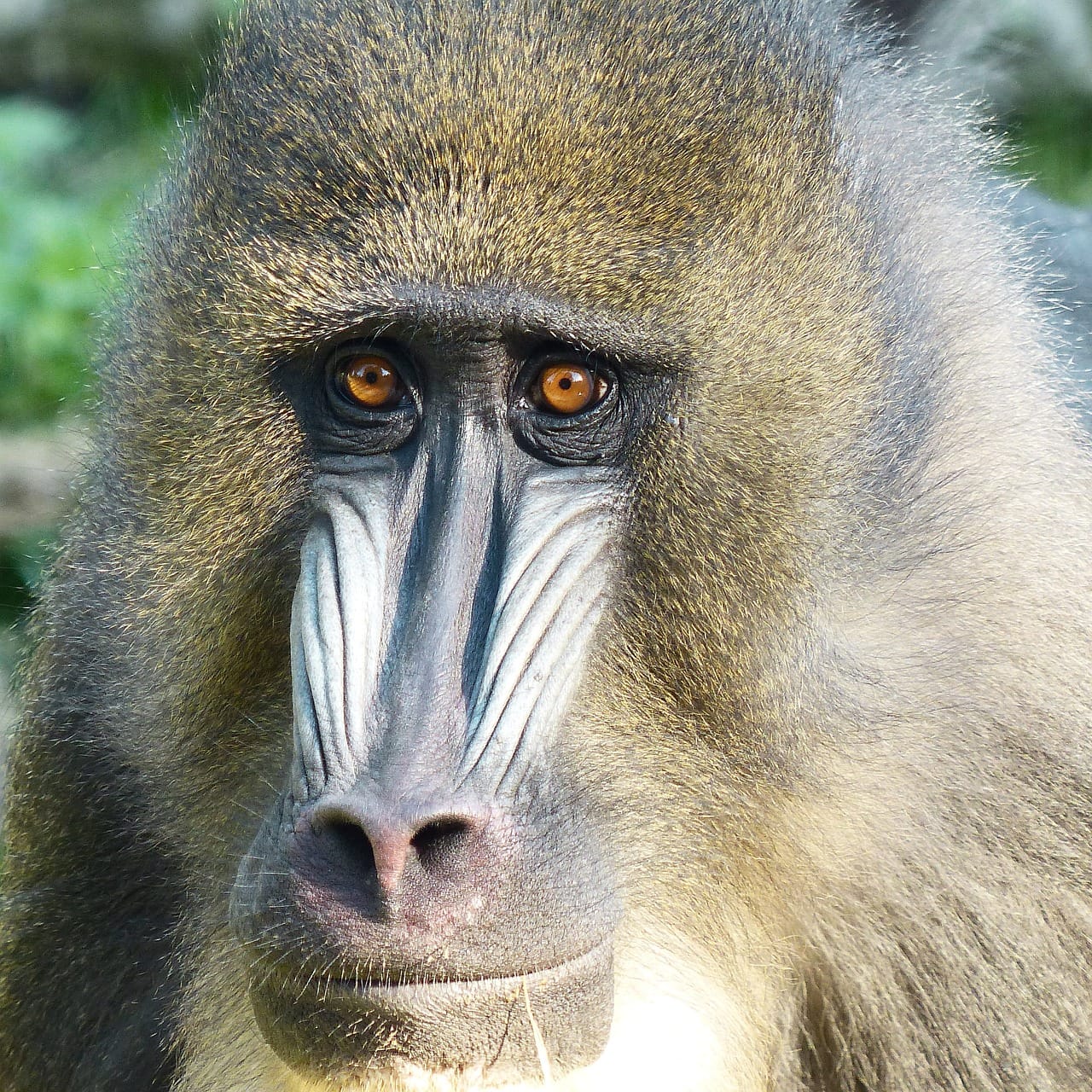
Gabon Safari Tours – 2024 / 2025
Travel to gabon: ivindo, lopé, loango & beyond.
Let your Gabon safari dreams begin here! Gabon is known as the Eden of Africa – an undiscovered wonderland not to be missed. A remote country of great rainforests, coastal lagoons, and seemingly endless beaches, it is a haven for iconic African wildlife, including forest elephants, mandrills, chimpanzees, and lowland gorillas.
With an impressive 11.25% of the country proclaimed as national parkland, this little-visited country is perfect for experienced African travelers and those in search of a true wilderness experience. Gabon is the region’s most progressive and traveller-friendly destination, although tourism remains extremely DIY.
Gabon Safari Highlights
- Search for forest elephants amongst the lagoons, forests and shorelines of Loango National park or the forest clearing of Langoué Bai and encounter the forest elephants of Ivindo National Park. Gabon has one of the largest populations of Forest Elephant in Central Africa.
- Search for several species of monkey in the forests of Lope and Loango National Parks, including Black Colobus and Red-capped Mangabey.
- Track large groups of Mandrills at Ledeki and Lope National Park and visit the sanctuary for gorillas and chimpanzees.
- Observe the world’s largest population of leatherback turtles nesting on Gabon’s beaches.
- Observe some of Africa’s and the world’s most spectacular birds including African Fish Eagle, Goliath Heron, Hamerkop, Grey Parrot, Pel’s Fishing Owl and Great Blue Turaco. Other impressive birds to be found include Long-tailed Hawk, Grey-necked Picathartes, Vermiculated Fishing Owl, and Black-headed and Rosy Bee-eater.
- Explore Gabon’s coastal lagoons, with hippos, manatees, crocodiles, and tarpon all found within the protected waterways.
- Learn about the UNESCO World Heritage Site of Lopé National Park, known for its wildlife and anthropological value. Inhabited almost continuously for 400,000 years, Lopé includes artifacts of hunter-gatherer settlements, representing the oldest concentration of archaeological relics in central Africa.
- Travel deep into the forests of Ivindo National Park and discover Gabon’s waterfalls. These are some of the largest and most impressive in central Africa.
- Best time to visit Gabon
- Gabon visa information
- Gabon vaccination and health information
Browse our Favourite Gabon Safari Tours for 2024 – 2025
Looking for the Best Gabon Safari Tours & Packages? While some of the itineraries mentioned here are for scheduled group trips, please know that it is possible to customise a private safari to Gabon as well.

#SafarisWithSangeeta
• Visiting Lekedi Park for its habituated mandrill troupes; • Walking, quad-biking, game driving in Pongara NP for its nesting and hatching leatherback turtles; • In search of forest elephants, red river hogs, chimps, African grey parrots, Central African buffalo and sitatunga on the beaches of Loango; • Habituated gorilla tracking with the gorilla project in Loango National Park;

• Wending down the Ogooue, and Akaka rivers in a boat;
• Visiting Lopé National Park, Langoué Baï (made famous by Mike Fay on his extraordinary mega-transect) in Ivindo National Park, and Akaka and Iguela Lagoons in Loango National Park;
• Walking, quad-biking, game driving and boating in rainforests, savannas and mangroves;
• In search of forest elephants, mandrills, red river hogs, chimps, African grey parrots, African finfoots, slender snouted and dwarf crocodiles, anomalures and more;
• Habituated gorilla tracking at Akaka in Loango National Park;
• Venturing out to sea for a gathering of humpback whales;
Chat with a Specialist!

Our safari specialists have travelled the length and breadth of Africa over the last 35 years. We’d love to help plan your safari. Get in touch with us here »
Chalo Africa provides luxury African safari tours and holidays from the United States (Washington DC), United Arab Emirates (Dubai) and India.
We plan safaris to Kenya , Tanzania , Botswana , South Africa , Namibia , Zambia , Zimbabwe , Madagascar , Uganda , Rwanda , Gabon , Chad , Ethiopia and elsewhere. Useful Links: About Us | Our Team | Diary (Blog) | FAQs | Press | Kenya - Tanzania Wildebeest Migration Update
We are not liable for any errors or omissions. All pricing is indicative and subject to exchange rate fluctuations. You can view our Terms and Conditions and Privacy Policy here.

About Gabon
Bordered by the forest and the sea, Gabon is a jewel of nature where elephants roam, whales swim in the ocean and hippos swim off sandy beaches. One of the most biodiverse nations on earth, and the most carbon positive, this central African state is a sanctuary for wildlife. With a coastline stretching for almost 1,000km, come and relax by the sea, live life in the forest - or dance the night away in Gabon's capital Libreville.
Explore our National Parks

Monts de Crystal
Moukalaba-doudou, plateaux batéké, welcome to gabon, experience our cities, the richness of our cultures, go on unique adventures, getting you there, invest in gabon.
Gabon enjoys an excellent business climate. Under the leadership of the President of the Republic, Gabon has made it much easier to start a business, to welcome foreign investment and to facilitate public-private partnerships.
highest GDP/capita in Africa $ 8,635 in 2021
World’s largest producer of high-grade manganese, largest iron ore deposit in africa estimated at 1,000 million tonnes, largest producer of wooden veneer sheeting in the world, hydroelectric potential, sub-saharan african oil producer, discover. experience. explore.
Leatherback sea turtles
Bird species
Mammal species
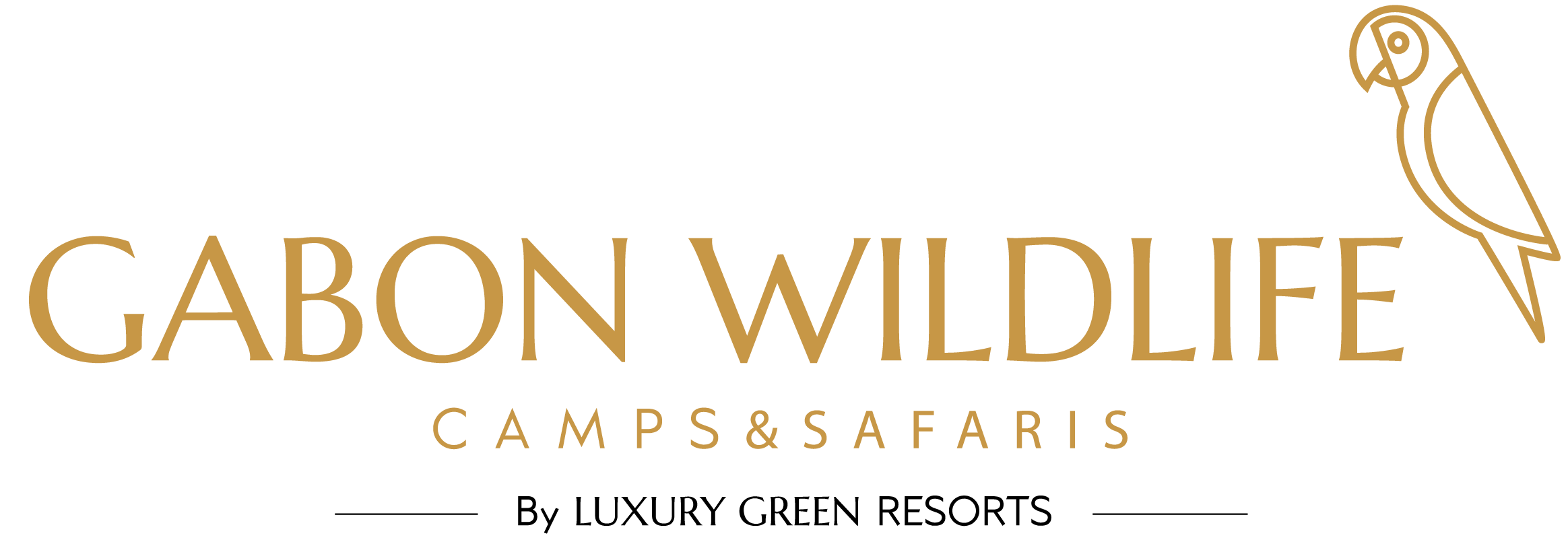
Gabon Wildlife Camps & Safaris | GABON
Gabon Wildlife Camps & Safaris is Gabon's premier national park concessioner. We operate and manage four major national parks within Parcs Gabon's network and offer exclusive and low-impact safaris and accommodations within each park along with exceptional wildlife encounters and conservation programs with western lowland gorillas, forest elephants, mandrills and chimpanzees.
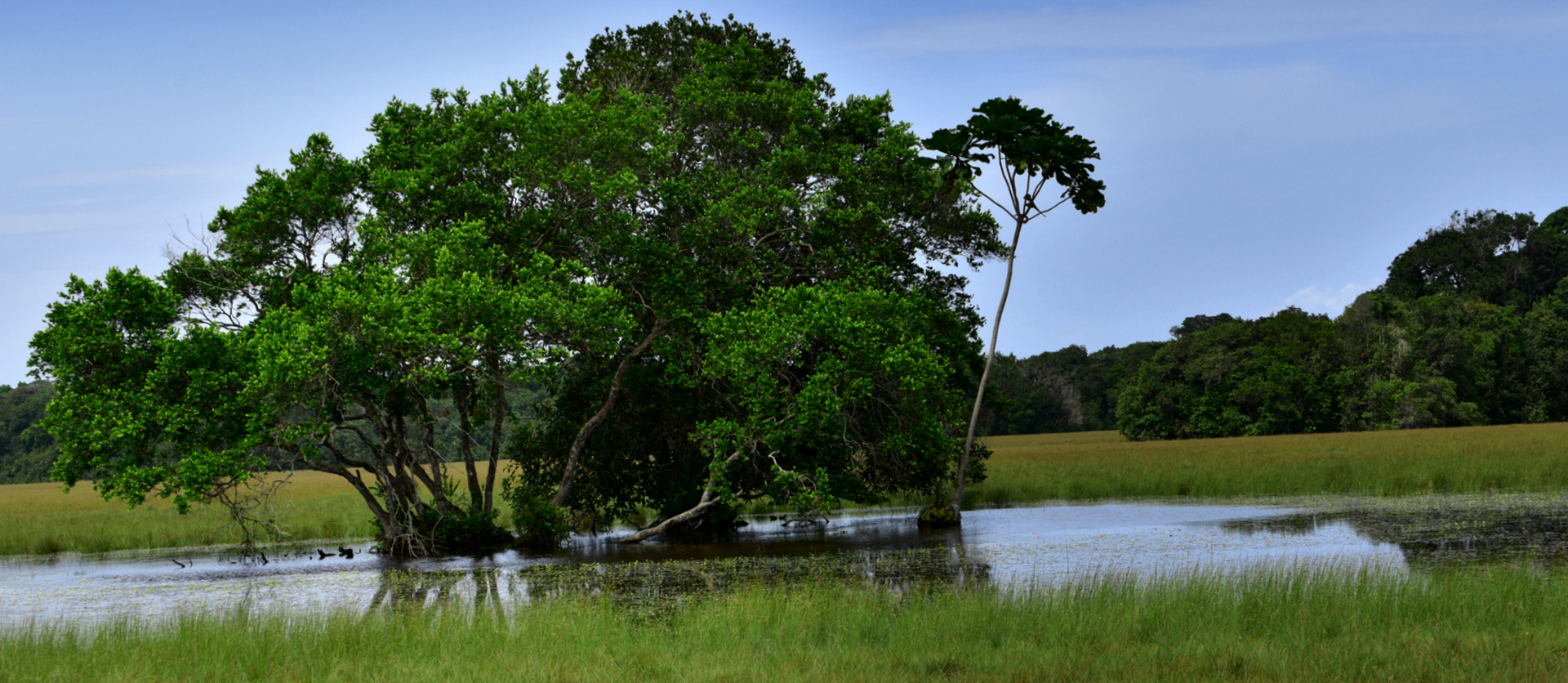
Conservation of Green Gabon
As Gabon’s national park concessioner, Gabon Wildlife Camps & Safaris’ mission is to create a unified and sustainable tourism development model for the preservation and protection of Gabon’s rich biodiversity. This includes working with leading conservation organisations, research institutes and local trackers who educate guests on the environmental effects of human impact and the significant ecosystems that are vital to the survival of all wildlife.
In the same way, our low-impact tented camps, bungalows and nature lodges serve as a benchmark in creating the most authentic ‘green safari’ experiences — from the way we source and use natural building materials, conserve water and implement the effective use of waste treatment and disposal, to the way we create sustainable menus and leave a soft footprint on all nature trails.
Our vision is to share Gabon’s most pristine assets not only with our guests but leave the park’s natural habitats in their wild, beautiful state for future generations.

[Above]: Unique eco-sytems that nurture sequestered worlds; in the trees, along the waterways and beneath the leaves on the forest floors. Minimal disturbances are not only vital in the ecological sustainability of the national parks but also serve as the foundation of our low-impact safaris.
Parcs Gabon | Gabon’s Agence Nationale des Parcs Nationaux [ANPN] is the governing authority in charge of policing, maintaining and protecting the national park’s network of resources and biodiversity and is the largest contributor in the support of research and conservations programs.
Lopé National Park | The Station d’Etudes des gorilles et chimpanzés was established over 30 years ago to study the ecology of Lopé’s key primates. Now under the management of the ANPN, its research work underscores important conservation policies in Gabon.
Ivindo National Park | Ipassa Research Station at Ipassa Makokou Biosphere Reserve managed by Institute for Research for Tropical Ecology [IRET] — also the field base for Duke University’s study on Gabon’s pristine ecosystems and part of the World Network of Biosphere Reserves.
Loango National Park | Max Planck Institute of Evolutionary Anthropology was established in the park to habituate western lowland gorillas and chimpanzees for The Loango Gorilla Project, a program tailored for eco-tourism and ongoing research.
Pongara National Park | Aventures Sans Frontières [ASF] is Pongara National Park’s NGO, providing the protection of nesting turtles and hatchlings along with their tagging and tracking for ongoing research. Additionally, Aventures Sans Frontières operates the sea turtle museum at Pongara.
Ivindo National Park | Wildlife Conservation Society [WSC Gabon] carries out research and the monitoring of wildlife within Parcs Gabon’s network including the protected marine reserves. Its research station at Langoué baï is involved in the tracking and collating of field data on forest elephants and other mammals.
Batéké Plateau National Park | The Aspinall Foundation headlines the Gorilla Protection Project in Batéké Plateau National Park, a program that traces captive-born western lowland gorillas back to their natural habitats in the protected network of Parcs Gabon .
gabon's custodians
There is a forest tree we often come across in Loango National Park — a towering behemoth covered in lichen and shavings of ancient bark. At the foot of its massive trunk lies an entanglement of roots — twisting and turning like a biblical serpent through the thick damp mulch and colourful fungi. Polypores in bewitching hues of burnt orange, wooded-brown and vermillion.
Our tracker, Karl crouches down to study them before he lightly scoops up a scattering of leaves. There’s nothing spectacular about the moment until he carefully turns them over his cupped hands. Suddenly, an explosion of black ants march towards his wrists and arms and another interconnected community is revealed — a frenetic yet hidden world where thousands of insects are altering and shaping the forest’s future evolution.
Today, the tropical forests of Gabon occupy almost 85% of the country — over 22 million hectares of ancient ecosystems that nurture 969 recorded species including mammals, birds, reptiles and amphibians, and over 6650 species of vascular plants. And e ntwined in the trees are the spirits of Gabon’s forest-dwelling pygmies — the ‘people of the forest.’ Ancient sorcerers that play a pivotal role in Gabon’s Bwiti culture; one of three major religions practised throughout the country.
At the centre of the religious rituals is the iboga plant, which its hallucinogenic bark roots are used in the initiation rites of young men. It is a ritual many pygmy trackers have seen before. We listen to Karl tell his own story before he turns away to place one hand on the tree. He then leans in towards the trunk and remains very still just as the echo of lusty bird calls pierce the silence of the forest.
T he ancient spirits soon speak to him .
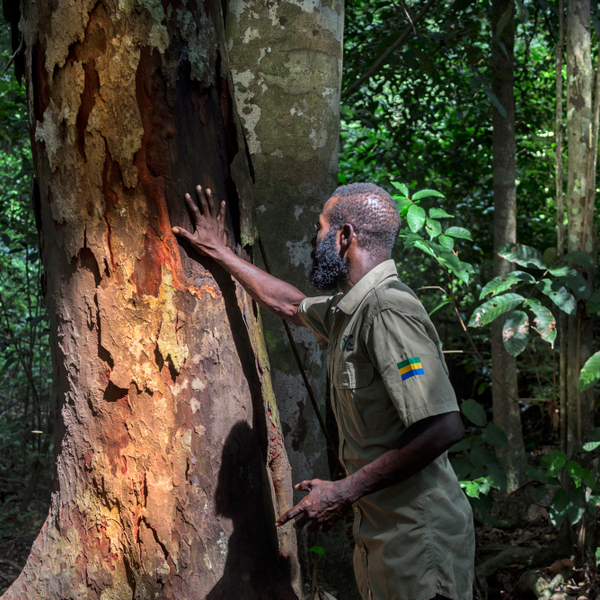
safeguarding gabon's gorillas
In 2005, the Loango Gorilla Project was established by the Max Planck Institute of Evolutionary Anthropology to focus on the long-term studies into the park’s western lowland gorillas’ ecology and behaviour. Along with conducting ongoing field research, the aim of the project was to also develop eco-tourism and community initiatives in collaboration with The National Agency for National Parks [ANPN].
In 2011, the Institute began habituating a small family of gorillas known as the Atananga troop. Their habituation involved daily and neutral interactions with researchers and the gorillas from a distance. The painstakingly slow but progressive approach not only helped eliminate potential aggression but also allowed the gorillas to accept humans as part of their natural environment. Following the success of the program, researchers began habituating another family of gorillas in Loango National Park in 2018.
In the same way, field researchers studied other gorilla populations and their movements across Loango National Park by using camera traps, local trackers and collating genetic analysis of scat piles. As a result of their lengthy studies, they found that the different troops across all park populations varied in social behaviours, primarily due to close-set social interactions and their unique environments.
An important and engaging educational activity featured in our Loango National Park safari program, ANPN now hires over 18 pygmy trackers to locate the Atananga troop; a direction that injects vital revenue into communities that once relied on bushmeat for their survival.
Since the introduction of the Loango Gorilla Project , there has been a significant reduction in illegal poaching, habitat loss and the spreading of disease. Today, more than 1,500 western lowland gorillas now live in the park.
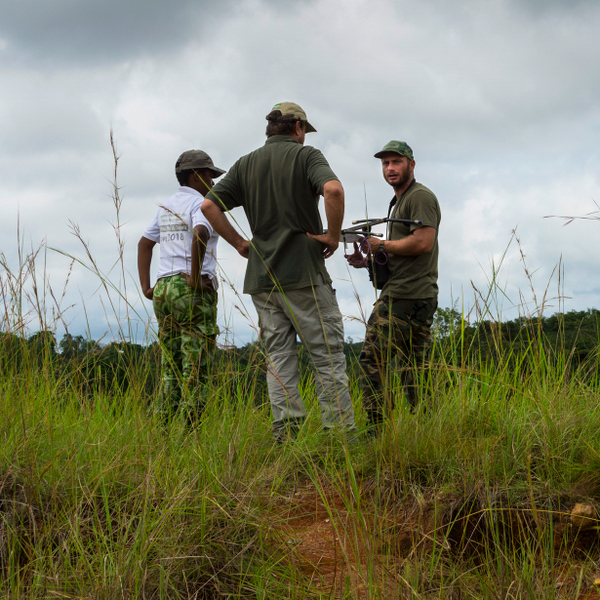
[Above Top Row]: Tracking collared mandrills with a field scientist in Lopé National Park . [Middle and Bottom Row]: Scientists and trackers discuss the day’s gorilla and chimpanzee sightings at the Max Planck Institute of Evolutionary Anthropology research centre in Loango National Park .
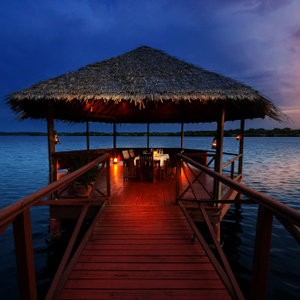
start your gabon adventure online
Receive our seasonal safari news.

GABON'S POLITICS - UPDATE!
The situation on the ground in Gabon is very calm, there is no violence and people seem very happy
Tourism is operating as normal
International flights resumed on the 3rd of September
We will update this website and our sister website: Loango Tourism if any changes occur
Gabon , a tiny country packed with diverse wildlife and conservation strategies implemented by its own President straddles the Equator on the west coast of Central Africa, nestled between Equitorial Guinea, Cameroon and Congo.
A magical land, home to a plethora of wildlife. Including gorillas, chimpanzees, mandrills, pangolins and elephants. Tropical rainforests cover over 80% of this beautifully preserved raw paradise, with a population so small that you can become completely lost within its remote beauty, unearthing the feeling that you have gone back in time to a world before humans existed

Outstanding Park Protection
Since 2003 10% of the country has been proudly protected under the order of the late President, Omar Bongo Ondimba, who created the 13 National Parks and a Park's agency to manage it: Agence Nationale des Parcs Nationaux (ANPN) One the largest proportions of nature parkland in the world.
Spread throughout the land interrupting the rainforests are coastal plains, coastal forests, mountains, savannas, mangroves, and swamps. All containing various highly-sought-after wildlife viewing, much of which is protected by local law, and the focus of conservation and research initiatives such as Gabon Bleu, Gabon Green, Wildlife Conservation Society, World Wildlife Fund, WildAid, and many more.
Mellow Western Lowland Gorillas gently amble the forests, naturally elusive they can be difficult to observe
unless you are in Loango National Park. Here you can catch a glimpse into the life of Gabon's gorillas by going on a gorilla trekking experience. In Ivindo there is an idyllic setting with a high watch platform overlooking a large bai, often visited by gorillas, chimpanzees, elephants, buffalo, and much more.
Trekking highly animated, robust, and inquisitive chimpanzees should be possible in Loango in the future.
Forest elephants, the savanna species smaller cousins can be found dominating the rainforests, awkwardly navigating swamps and mangroves, and even strolling along Gabon's beaches.
Many monkey species bring the forest canopies alive, not just the canopies but also the forest floor is frequented by more terrestrial species such as the distinct and brightly coloured Mandrills. Roaming the forests in groups of 200+. In Lopé you can go Mandrill trekking in search of their habituated group.
Anywhere in Gabon, you will never be far from its wide array wildlife, also including equatorial bird species, at seasonal migratory birds. Nor the multitude of other wildlife roaming its diverse habitats: duikers, sitatunga, crocodiles, pangolins, snakes, creepy-crawlies, and, not forgetting it's marine life.

Gabon boasts 50-60% of the world's remaining 45,000 forest elephants, largely due to a tiny human population coupled with a strong conservation presence. But, this majestic species still needs high protection to survive because, across west Africa, more than two-thirds of the forest elephants have been killed in the last decade, ranging from 95% in the Democratic Republic of Congo to 30% in Gabon
Gabon has recently committed itself to having one of Africa’s largest marine protected areas, protecting more than 20 species of whales and dolphins, including humpback whales and Atlantic humpback dolphins, and four species of marine turtles, among them the world’s largest breeding leatherback turtle population and the Atlantic Ocean’s largest breeding olive ridley turtle population.
This new network consists of nine new national marine parks and 11 new aquatic reserves, means that combined with the country’s three existing marine zones some 53,000 square kilometres of ocean will be protected. Gabon Bleu was ordered by the coutnrys current president, Ali Bongo, son of late president Omar Bongo Ondimba.

Pongara expertly opens up the cherished marine life to the world, where you can witness turtles nesting on the beaches, hatchlings instinctively waddling into the ocean, Humpback whales majestically breaching in playful displays, and bottlenose dolphin schools sauntering through the Atlantic ocean. Loango also highlights these seasonal visitors.
See Wild Travels offers 2 expertly run wild accommodations in Gabon all year round: Loango Camps in Loango National park & Pongara Lodge in Pongara National Park. In addition, we offer La Lopé Hotel as a seasonal add-on from June to August each year when Mandrill trekking open to tourists. Making it possible to embark on an incredible journey to see Gabon's main attractions under the care & guidance of expert staff, highly experienced in proven tourism success within this wonderland that is Gabon
Destinations in Gabon
From dreamy beaches to deep forest jungles, Gabon has it all.
Lop é
_edited.jpg)
WANT TO KNOW MORE?
Your details were sent successfully!

Wildlife Parks & Zoos
Not all of Idaho’s wildlife exists in the deep woods. Many bird and animal species can be seen in Idaho’s zoos, and in wildlife parks, preserves and management areas. The fastest animal in the world, the Peregrine Falcon, can be seen at the World Center for Birds of Prey, along with raptors from around the globe. See grizzlies and black bears up close at Yellowstone Bear World and experience another side of Idaho’s wildlife.
Featured Travel Tips

Let the Kids Explore: History and Adventure Around Boise
Did you know.
Get an up-close view of free-roaming wildlife at Yellowstone Bear World, a drive-thru wildlife park.
Zoo Boise is home to over 300 animals from 100 various species.
The Aquarium of Boise houses over 35,000 gallons of saltwater and over 250 species of animals and marine life.
The Wolf Education & Research Center of Winchester, Idaho started in 1996 caring for the wolves of the Nez Perce aka the Sawtooth Pack.
Featured Adventures
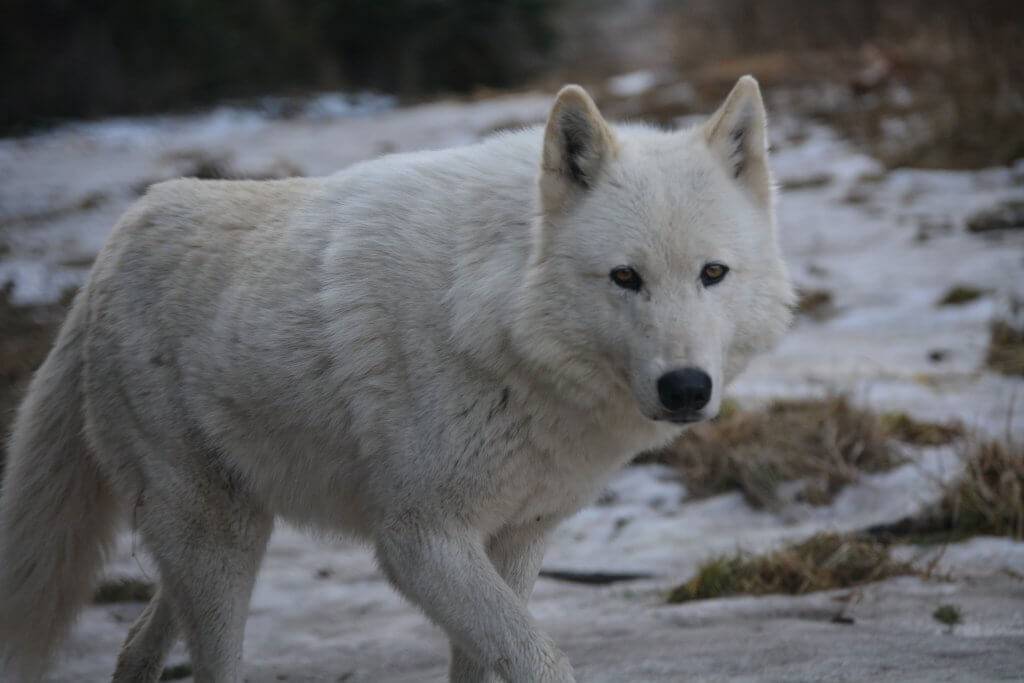
The Wolf Education and Research Center

Yellowstone Bear World
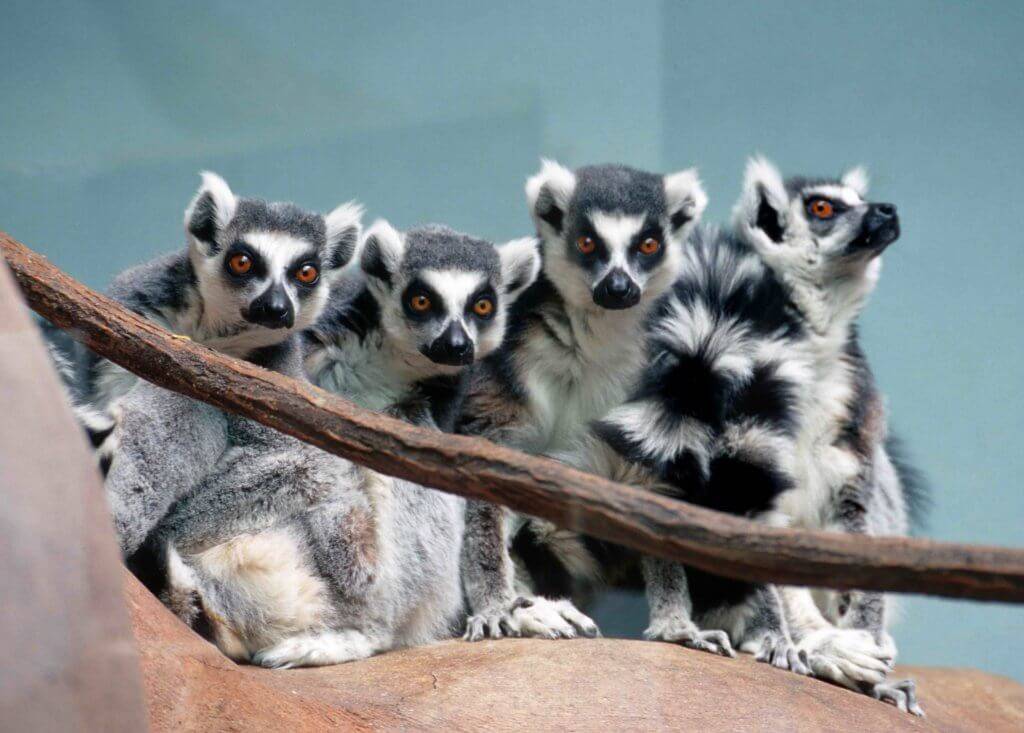
Aquarium of Boise
All non-member Zoo tickets must be pre-purchased online or at the onsite kiosks.
Today’s Hours: 8:00am – 5:00pm
Today’s Hours: 8:00am - 5:00pm
Rhino Encounter
Giraffe feeding.
- Private Safari Tours
African Safari
- Australian Adventures
- Wild Americas
- Nature & Hiking Trails
- Desert Tortoise
- Mongolian Deserts
Black Mambas Anti-Poaching Unit
- BCCS Workshops & Training
- Orocopia Mountain Restoration
- Pronghorn Projects
- Urban Habitat Restoration
African Painted Dog
- Sustainable Fishing & Vaquita
- Torres Martinez Youth Environment Project
- Wild Nature Institute
- Sustainability
- Desert Pupfish Refuge
- Animal Care & Wellbeing
- Publications
- Latest Happenings
Conservation
- Community Outreach
Upcoming Events
- Events Calendar
- Zoo Schedule
- Camps and Family Programs
- Travel Club
- Field Trips & School Groups
- Educator Resources
- Downloadable Resources
Become a Member
- Ways to Give
- Adoption Programs
- Capital Campaign
- Our Mission
- Our Leaders
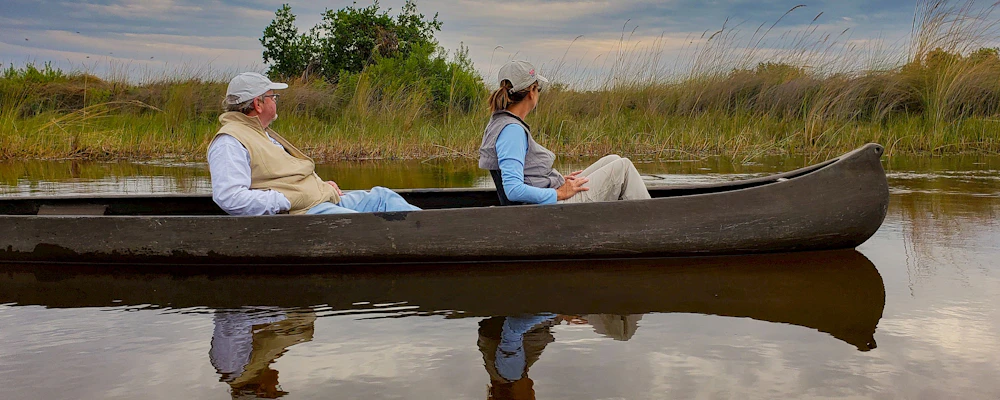
Virtual Travel Night
See Dates & Tickets
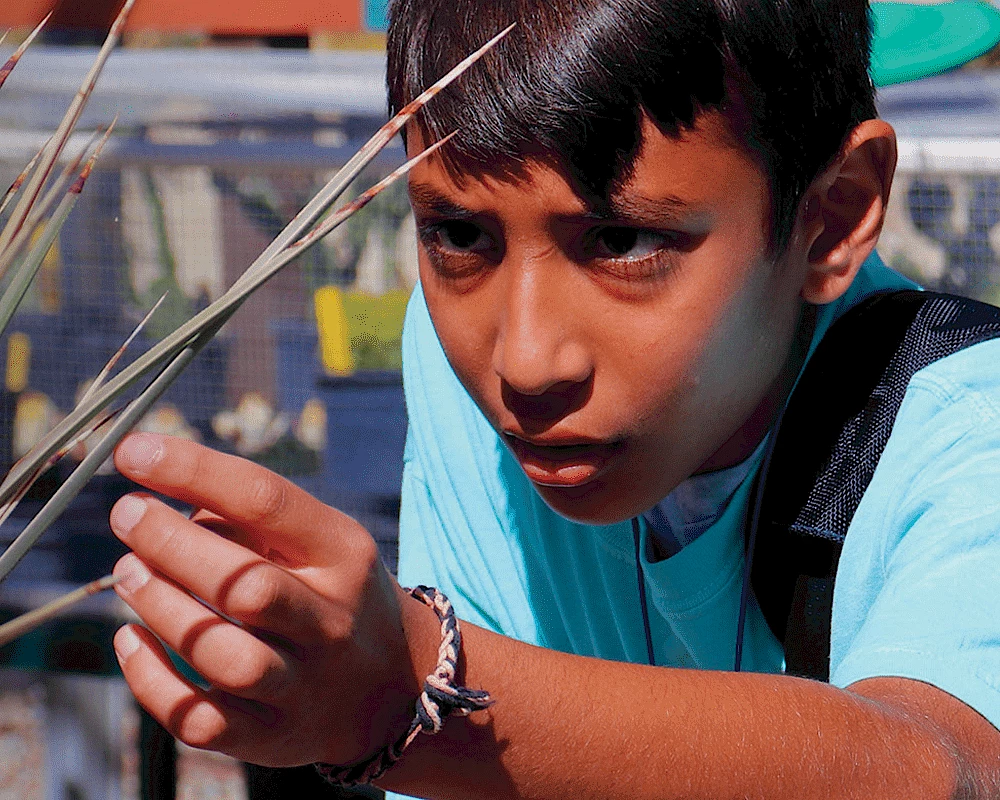
Summer ZooCamp
- Trail Overview
Attractions & Dining
- Animals & Gardens
Accessibility
- Latest News
Visitor Information
Get ready to embark on your journey to the African savanna… No passport required!
Here, you will come up-close to Africa’s native flora and fauna as you meander through gardens and discover the continent’s diversity of wildlife, from the swift cheetah to the tiny meerkat. Come explore the sprawling, multi-species Rhino Savanna habitat, where black rhinos roam alongside waterbuck and springbok. Then, marvel at the panoramic mountain views as you visit the giraffe, ostrich, and greater kudu in their expansive habitat.
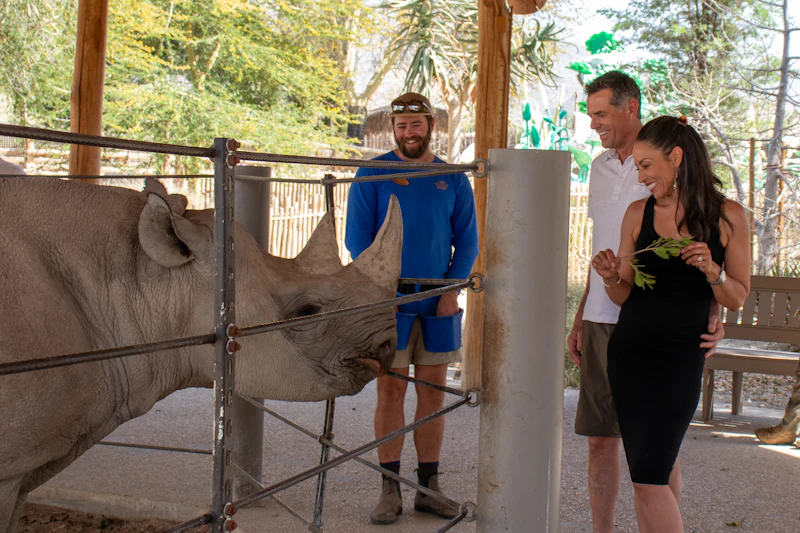
Come face-to-face with an iconic, and critically endangered species, the black rhino. During this up-close experience, you’ll be able to participate in the rhino’s feeding routine and hear fascinating stories directly from the team who cares for them!

Feed your sense of adventure — and a giraffe — in this unforgettable, encounter with the world’s tallest mammal at the giraffe habitat! *Reservations not required

Petting Kraal
Come meet some of the Zoo’s friendly domestic residents up-close! Guests of all ages are welcome to groom or pet the Nigerian dwarf goats.
The Petting Kraal is open daily and is located in Village WaTuTu.

Thorn Tree Grill
Animals you might see.
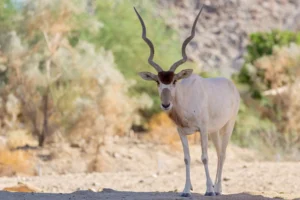
Species Name: Addax nasomaculatus
Heavily built with short legs and long spiraled horns on both sexes. Coat color is white in summer, darkening gradually in winter. On the forehead is a tuft of dense black…
Conservation status
Sahara desert.
The sandy and stony regions of the Sahara Desert, particularly dune regions. They have adapted to life in hyper arid areas.
To protect themselves from strong winds and the glaring sun during the day, addax dig ‘beds’ into the sand with their forefeet in which they rest, often in the shade of boulders or bushes.
Heavily built with short legs and long spiraled horns on both sexes. Coat color is white in summer, darkening gradually in winter. On the forehead is a tuft of dense black hair which resembles a toupe’. A band of white hair forms an “X” across the nose.
They are most active from dusk until dawn. Superbly adapted to desert conditions and can go most of their lives without drinking water. They get moisture from plants and the dew which collects on them during evening and early morning. Their light color helps to deflect heat from sun; their broad, flat hooves facilitate travel on desert sands. Daily variation in body temperature reduces the need for evaporative cooling, thus conserving water.
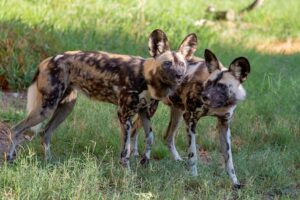
Species Name: Lycaon pictus
African wild dogs are pack animals. Females leave the pack when mature and males typically stay with their pack. Their unique coat patterns, specialize pack communication and teamwork have made them…
Canidae, the dog family.
Endangered.
Southern Africa, East Africa, and scattered throughout the Sahel.
Desert, grassland, savannah, and sometimes arid forests.
African painted dogs’ large, round ears allow for excellent hearing that is vital to the pack hunt, but they also serve as radiators of heat in a hot climate.
African painted dogs are pack animals. Females leave the pack when mature and males typically stay with their pack.
Their unique coat patterns, specialize pack communication and teamwork have made them one of the most successful hunters in all of Africa, with a 70%-90% rate of success.
African painted dogs are threatened mainly by habitat loss, which has led to human-wildlife conflict. Painted dogs are also susceptible to diseases carried by domestic dogs, such as distemper and parvovirus. The Living Desert actively supports African painted dog conservation efforts through the Painted Dog Conservation organization.
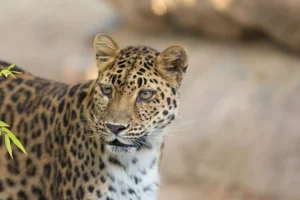
Amur Leopard
Species Name: Panthera pardus orientalis
The Amur leopard is the most northerly subspecies of the leopard species that occurs over most of Africa and southern Asia. It has a tawny-gold coat patterned with the distinctive black…
Felidae, the cat family.
Critically endangered, IUCN. One of the most endangered cats in the world.
Northern Korea and northern China.
Boreal forest.
The Amur leopard is one of many species of animal that zoos are conserving through captive breeding.
The Amur leopard is the most northerly subspecies of the leopard species that occurs over most of Africa and southern Asia. It has a tawny-gold coat patterned with the distinctive black rosettes common in all leopards. The head, lower limbs and belly are covered with these solid black rosettes. Leopards eat just about any animal they can catch, including birds, hares, beetles, baboons or deer. Their principal predator is man, who hunts them for sport and their spotted pelts.
Leopards are solitary except during the mating season. Only females raise the young, litters of two to four cubs born after a gestation is approximately 96 days. Cubs remain with their mother for 18 to 24 months, when they become independent.
Hunting mainly at night, they stalk and ambush their prey by waiting in a tree until their quarry is within striking distance, then attack with a short burst of speed, grabbing their victim and strangling it. They are very strong and will often drag their kill up into a tree . This allows them to eat their meal at leisure, away from other large predators. Leopards have also been known to eat carrion.
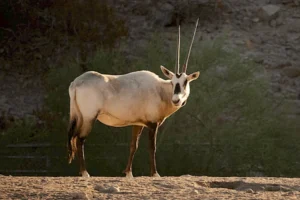
Arabian Oryx
Species Name: Oryx leucoryx
One of the grazing antelopes, this smallest oryx has a white body with black markings on the face and legs. Their horns, which measure up to 2 1/2 feet long, are…
Bovidae, the cow and gazelle family
Vulnerable, IUCN
The Arabian and Sinai Peninsulas, parts of Jordan, Syria and Iraq.
Stony or sandy deserts.
They are often called the “unicorn of the desert”, because, when you look at them from the side, they appear to have only one horn.
One of the grazing antelopes, this smallest oryx has a white body with black markings on the face and legs. Their horns, which measure up to 2 1/2 feet long, are nearly straight and their hooves are splayed and shovel-like.
They eat whatever vegetation is available, feeding mainly at night when it is most succulent. They do not need to drink free water, getting their moisture from plants and occasionally digging hollows under rocks and bushes with horns and hooves for shade. Before becoming extinct in the wild, they were preyed upon by Striped Hyenas, Arabian Wolves, Lions, and Bedouins. Herds usually consist of 10 to 20 animals, with one dominant male mating with the females.
As true desert specialists, they survive through several adaptations, such as remaining in the shade during the daytime; excavating scrapes in shady ground and lying down to offload body heat to the cooler sand and reduce body surface exposed to drying winds. Their temperatures can rise to 113F without ill effects and no valuable water is wasted by sweating or panting. Oryx may travel 10 to 20 miles at night to new feeding areas.
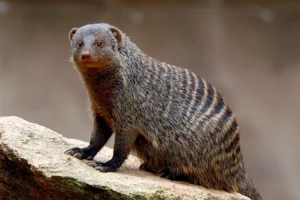
Banded Mongoose
Species Name: Mungos mungo
Although dwarf and banded mongoose are cousins with similar traits, these African animals have unique characteristics all their own.
Herpestidae
Least Concern
South of Sahara
Grasslands, brush lands, woodlands and rocky country
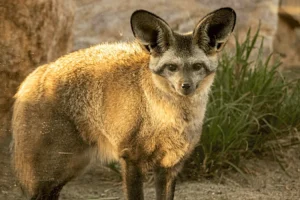
Bat-Eared Fox
Species Name: Otocyon megalotis
Their coats are yellowish-brown with brown feet and ear tips and blackish brown faces. Their legs are relatively short, and tails bushy, darkening in color towards the tip and their ears…
Not threatened.
East and South Africa.
Savannas and open plains with tall grass, thick brush and burrows for hiding. Found in close proximity to ungulates
The bat-eared fox is possibly named after the Egyptian slit-faced fruit bat, which also has ears that are large in proportion to its head.
Their coats are yellowish-brown with brown feet and ear tips and blackish brown faces. Their legs are relatively short, and tails bushy, darkening in color towards the tip and their ears are approximately 5 inches long.
They are the only canids that prefer insects to mammalian prey. Eighty percent of their diet consists of insects, particularly harvester termites and dung beetles, as well as fruits, scorpions and an occasional small mammal or bird. They are hunted by native peoples for their pelts and meat and also by carnivores such as the black-backed jackal, slender mongoose and brown hyena.
Bat-eared foxes usually breed in pairs, giving birth in self-dug dens. But single males may breed with two females and two or three breeding dens may be clustered within a few hundred meters, where soil and vegetation are suitable. After a 60-70 day gestation period, two to five pups are born. Juveniles achieve adult size at 4 months, when they begin to accompany adults on foraging trips. Groups can include up to 12 foxes.
Plants You Might See
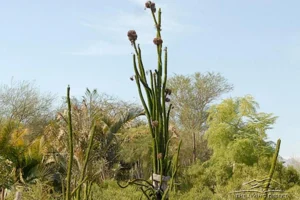
African Ocotillo
Species Name: Alluaudia procera
Clusters of tiny white flowers are borne at the tip of the spine-covered stems on separate male and female plants.
Didiereaceae
Southwest Madagascar
Semi-arid spiny desert
Stem succulent to 30 feet tall
Species Name: Adansonia digitata
Living up to 2,000 years old, this iconic tree is considered one of the largest succulent plant species in the world. It rarely reaches 75 feet tall, but its trunk can…
Conservation Status
Living up to 2,000 years old, this iconic tree is considered one of the largest succulent plant species in the world. It rarely reaches 75 feet tall, but its trunk can reach up to 80 feet in circumference where it specializes in water storage. Sometime considered grotesque, when its leaves have dropped the tree’s branches resemble a giant root system, giving the appearance that the tree is growing upside-down. Baobab trees are an important resource for people and animals. Hollow trunked trees have provided people with shelter for centuries. The spongy wood, leaves, flowers, and fruit provide food for many animal species including elephants and baboons.
Candelabra Tree
Species Name: Euphorbia ingens
The Candelabra tree is a succulent tree-like euphorbia species native from northern South Africa to Kenya where it inhabits dry areas and grasslands. It grows up to 20 feet tall or…
The Candelabra tree is a succulent tree-like euphorbia species native from northern South Africa to Kenya where it inhabits dry areas and grasslands. It grows up to 20 feet tall or more and produces many branches giving it a candelabra-like structure. Its inconspicuous flowers provide nectar for butterflies and bees and its seeds are eaten by birds. It produces highly toxic milky latex sap that can cause blindness, skin irritation, and poisoning if ingested. Its stems have been used as fish poison, but the candelabra tree also has purported medical uses and its light wood has been used for doors, planks, and boat construction.
Gum Arabic Tree
Species Name: Vachellia nilotica
A widespread African tree, its hardened sap is widely used in the food, pharmaceutical, art, cosmetic, and textile industries.

Kokerboom, Quiver Tree
Species Name: Aloidendrion dichotomum
Quiver tree is a distinctive tree aloe with a thick, smooth light-brown colored trunk and blue-green leaves at the tips of its forked branches. Quiver trees live up to 80 years…
Asphodelaceae, Aloe Family
Southwestern Africa
Arid, rocky areas
Tree, succulent
In habitat the copious nectar of the blossoms draws birds and insects as well as baboons that can strip a tree of its flowers in a short time.
Quiver tree is a distinctive tree aloe with a thick, smooth light-brown colored trunk and blue-green leaves at the tips of its forked branches. Quiver trees live up to 80 years and can reach heights up to 21 feet. Its tubular canary-yellow flowers appear in the winter months and provide food for nectar feeding sugarbirds. Weaverbirds often build nests in the branches of Quiver trees where young are afforded protection from predators. Quiver trees’ natural habitat lies in arid, rocky areas in northwest South Africa and Namibia. The indigenous San people would hollow out the tubular branches to form quivers for their arrows.
Madagascar Ocotillo
Though not closely related to the Sonoran Desert’s ocotillo, its similarly commanding and towering stems covered in small dark green leaves make it a popular vertical element in desert landscape...
Though not closely related to the Sonoran Desert’s ocotillo, its similarly commanding and towering stems covered in small dark green leaves make it a popular vertical element in desert landscape design.
On the day of your visit, please feel free to discuss any needs you have at our Guest Services office, adjacent to the front entrance. If you have needs or questions prior to your visit, please call us at (760) 346-5694 , or email us at [email protected] .

Mobility Information
- Rhino Savanna: Paved paths, with even terrain.
- Village WaTuTu: Accessible via potentially uneven, rustic dirt paths.
- Pathway from Cheetah Habitat to African Painted Dog Habitat: Mixture of paved and unpaved pathways.
- Benches are available throughout this section of the Zoo.
Sensory and Additional Information
- Rhino Savanna: May have heightened noise levels.
- Petting Krall: May have strong odors; service animals are NOT permitted.
- Camel Habitat: May have strong odors.
- Rhino Savanna: Restroom available with adult changing table.
Latest News from African Safari
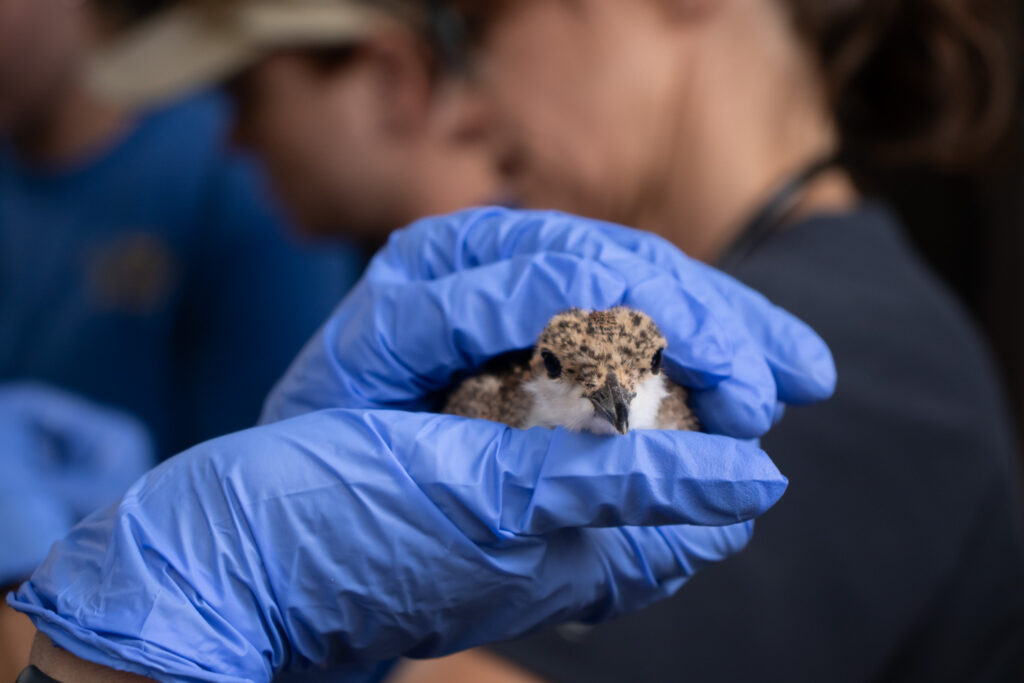
Spur-winged Lapwing Chicks
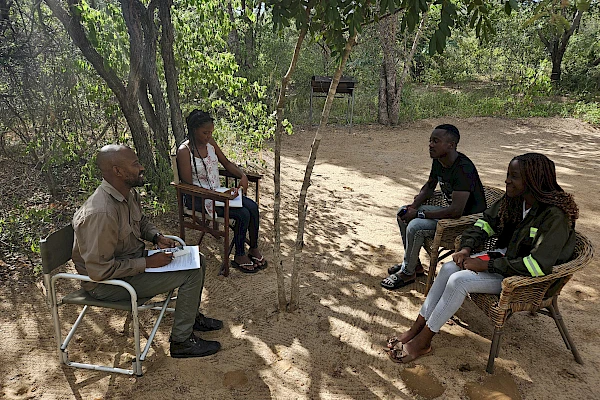
A Bold New Experiment in Social Science Training
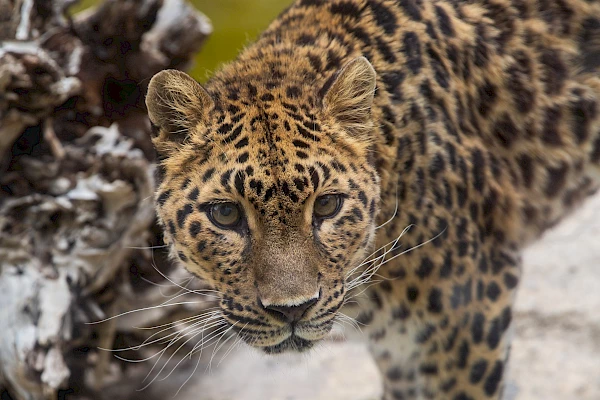
Celebrating Our Golden Girls

Building Community Conservation Success in Zimbabwe: Imvelo Safari...
Preserving African deserts is crucial, ensuring the survival of unique species and ecosystems. The Living Desert supports initiatives that protect wildlife, promote coexistence, and establish vital conservation projects through Zoo-lead programs and partnerships with organizations like African Painted Dog Conservation, the Black Mambas Anti-Poaching Unit, and the Cheetah Conservation Fund.
African Painted Dog Conservation
With fewer than 7,000 painted dogs left across the entire African continent, The Living Desert has been a dedicated supporter of Painted Dog Conservation since 2018. They help protect these unique African wild dogs and promote coexistence, enabling the establishment of a new field station.
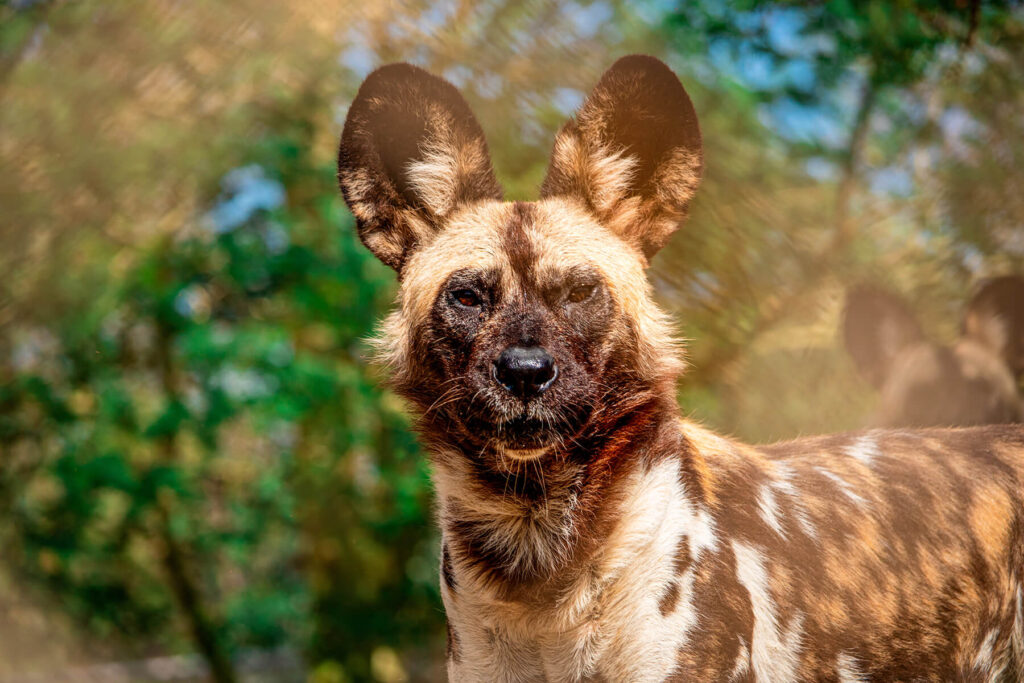
The Black Mambas are an all-female, unarmed unit who patrol and protect the most critically affected areas within Balule Nature Reserve, part of the Greater Kruger National Park. The Living Desert works directly with the Black Mambas, and their sister organization, The Bush Babies Environmental Education Program, and conducts in-the-field research to inform and improve future community-based efforts in the area.
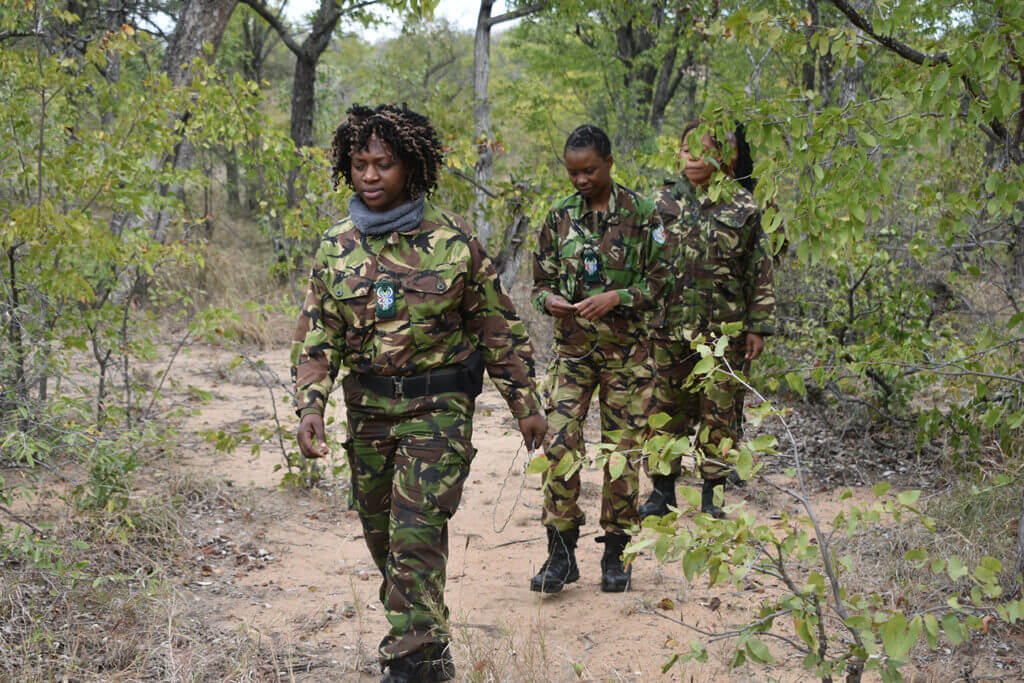
Building Community Conservation Success Globally (BCCS)
The Living Desert’s BCCS social science training workshops are transforming how conservation is being done around the world. These week-long workshops introduce conservation biologists to what they must know to successfully learn from their communities, understand the efficacy of their programs, and determine the best ways to structure their conservation activities to ensure communities, species, ecosystems, and economies can all succeed together.
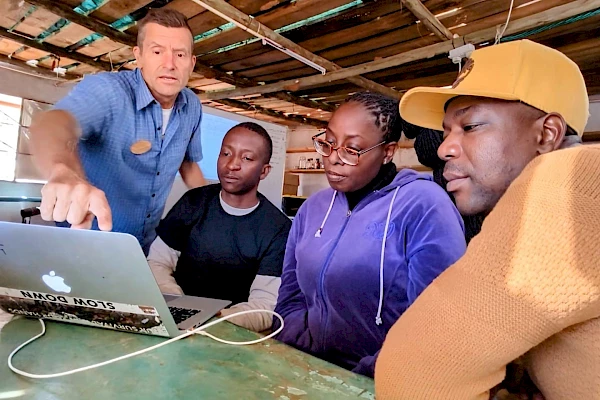
Cheetah Conservation Fund
The Living Desert provides ongoing financial support to CCF’s Livestock Guarding Dog Program in Namibia, aiding in protecting cheetahs by placing Anatolian shepherd and Kangal dogs with local farmers.

Join us in our mission to protect African Deserts.

THE 5 BEST Moscow Safaris
Safaris in moscow.
- Adrenaline & Extreme Tours
- Gear Rentals
- Nature & Wildlife Tours
- 5.0 of 5 bubbles
- District Central (TsAO)
- 3rd Transport Ring (TTK)
- District North-Eastern (SVAO)
- District Eastern (VAO)
- District South-Western (YuZAO)
- Lomonosovskiy
- Ostankinskiy
- Meshchanskiy
- Krasnoselskiy
- Maryina Roshcha (Jewish Quarter)
- Good for Couples
- Good for Kids
- Good for Big Groups
- Adventurous
- Budget-friendly
- Good for a Rainy Day
- Hidden Gems
- Honeymoon spot
- Good for Adrenaline Seekers
- Things to do ranked using Tripadvisor data including reviews, ratings, photos, and popularity.

1. Rybokhotsoyuz

2. Easy Russia Tour Guide
3. UTS GROUP

4. 365AltaiMongolia

5. #1 Russia -Tanzania | Zanzibar, Serengeti Safari & Kilimanjaro Agency | BURIGI CHATO SAFARIS CO LTD

6. Aviashop.Ru

7. Transsib Moscow

8. BASK TOUR
- Middle East
26 Interesting Facts About Gabon
The most interesting facts about Gabon, from “the land of the surfing hippos” and “Africa’s Last Eden” to 400,000 years of history.

Official name: Gabonese Republic Population: 2,284,912 Area: 267,667 sq km Capital city: Libreville Major languages: French, Fang, Myene, Nzebi, Bapounou/Eschira, Bandjabi Major religions: Roman Catholic 42.3%, Protestant 12.3%, other Christian 27.4%, Muslim 9.8% Time zone: UTC+1 (West Africa Time)
Interesting facts about Gabon
1. Gabon is located on the west coast of Africa and is bordered by Equatorial Guinea, Cameroon and the Republic of Congo.
2. Archaeological evidence suggests Gabon has been inhabited for over 400,000 years from the Palaeolithic, through the Neolithic and Iron Age, to the present day Bantu and Pygmy peoples.
3. The name Gabon comes from the Portuguese word “gabao” meaning “cloak”. Early explorers thought the estuary of the Komo River by the capital of Libreville was the shape of a cloak.

4. Gabon’s first contact with Europeans began with the arrival of the Portuguese in 1472. The British, Dutch and French all followed and trafficked slaves as well as ivory and tropical wood.
5. Libreville, the capital city, was originally settled by freed slaves in 1849. Libreville means “free town” in French which imitates Freetown, the capital of Sierra Leone.
6. Gabon has a horizontally striped green, yellow and blue flag. The yellow represents the Equator, the green symbolizes the extensive forested area, and the blue reflects the Atlantic coast.
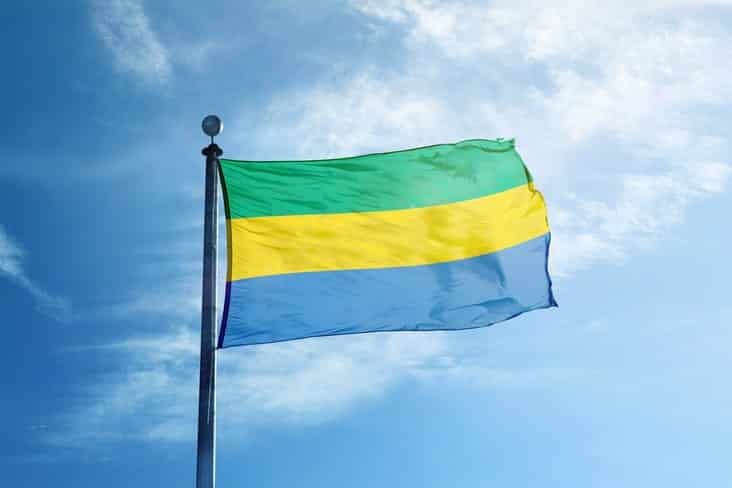
7. Gabon was a French colony from 1839 and then part of French Equatorial Africa from 1910.
8. After becoming an autonomous republic in the French Community in 1958, Gabon gained full independence in 1960.
9. Gabon is one of 13 countries that the Equator passes through. Traditionally, countries closer to the equator tend to struggle more economically due to the drawbacks caused by a hot climate which is often more unstable than more moderate-climate nations.
10. However, Gabon is one of the region’s more stable countries and is considered to be a “high” level of human development in the latest Human Development Index (HDI), albeit the lowest-ranked of the subcategory.

11. 11.25% of Gabon’s territory is protected by national parkland.
12. Loango National Park in Gabon is known as “Africa’s Last Eden” and is considered one of the world’s best wildlife-watching destinations with animals such as elephants, gorillas, crocodiles and sitatunga antelopes found on its savannahs, lagoons and beaches.
13. In a 2004 National Geographic article, Gabon was described as “the land of the surfing hippos” when a photographer captured hippos playing in the ocean just off the beach in Loango National Park.

14. Gabon has two UNESCO World Heritage Site, the Ecosystem and Relict Cultural Landscape of Lopé-Okanda and Ivindo National Park. These sites contain a mix of well-conserved tropical rainforest and relict savannah landscapes which are home to a wide diversity of species, including endangered large mammals, and habitats.
15. The site features Lopé National Park has some of the highest concentration of elephants ever recorded with an estimated three per square kilometre.
16. Lopé National Park is also home to the biggest troupes of mandrill in the world.

17. The site is also home to 1,800 petroglyphs (rock carvings) as well as well-preserved remains of habitation around hilltops, caves and shelters from the Stone and Iron Ages. Together, they demonstrate 400,000 years of almost continuous history.
18. Gabon is home to a significant population of gorillas, the world’s largest primate.
19. However, the Ebola virus wiped out 90% of western lowland gorillas in Gabon and the Republic of Congo during outbreaks in the 1990s and 2000s.

20. Having led the country since 1967, Gabon’s second president, Omar Bongo, was Africa’s longest-serving head of state at the time of his death in 2009. Additionally, Bongo was the world’s second-longest-serving non-royal leader after Cuba’s Fidel Castro, at the time of his death.
21. Pygmies settled on Gabon during the late Stone Age. The Bantu-speaking migrants came later during the Iron Age.
22. Pygmies are known for their short stature as they typically only grow to less than 1.5m (59 inches) high. Today they represent just 0.3% of the population of Gabon.
23. 81% of Gabon is covered in forest.

24. Frenchman Albert Schweitzer won the 1952 Nobel Peace Prize for his humanitarian work in Gabon. In 1924, Schweitzer founded a hospital to treat leprosy in Lambaréné in what was then French Equatorial Africa. The hospital is still operational today.
25. Gabon is home to the world’s largest species of sea turtle, the leatherback. Leatherbacks can grow up to 7ft (2.1m) in length and weigh as much as 2,000lbs (900kg).
26. Gabon’s Mayumba National Park is a marine park that sees 550 leatherback turtles – 30% of the world’s total population – lay their eggs there between November and April. The park is also a mating ground for humpback whales and large groups of dolphins, including the rare humpback dolphin.
Every effort has been made to verify these facts about Gabon. However, if you find an error or have any questions, please contact us .
You cannot copy content of this page

Choose The Best African Safari Location With These Tips From Travelers Who Have Been There
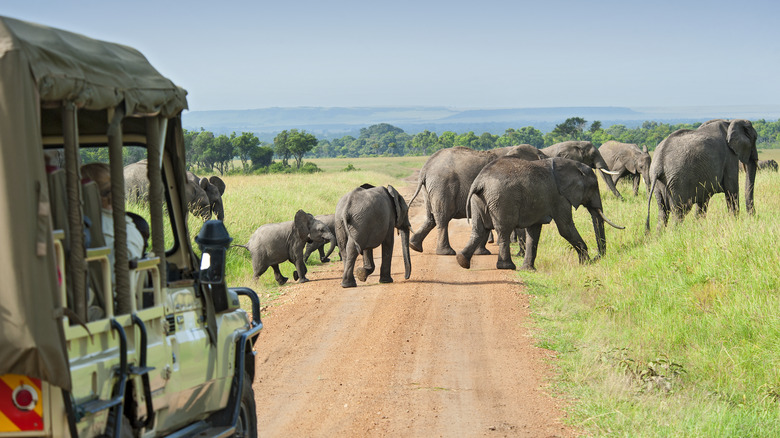
When we speak about African safaris, we tend to fall into the pit of discussing them the way we speak about the entire continent of Africa: lumping the continent's rich diversity into one pot. But, much like there are dozens of countries in Africa, each teeming with their own cultures, foods, and traditions, there are multiple safari locations that each offer their own set of wildlife, landscapes, and attractions. Each location has its own unique experience, making selecting the perfect safari spot a daunting task.
To help you plan your safari of a lifetime, we've gathered insights and recommendations from seasoned travelers who have explored the diverse landscapes and abundant wildlife of Africa's most iconic safari destinations. Whether you're in it just to see the Big Five, seeking a culturally-enriching experience, or limited by budget, these insider tips will guide you in choosing the best African safari location for your next adventure.
When envisioning an African safari, most people undoubtedly think of Kenya — and for good reason. Kenya is home to all of The Big Five: lion, leopard, elephant, buffalo, and rhino. Across Kenya's multiple game reserves, you have incredible chances of spotting these beasts. Of these reserves, the Maasai Mara is famed for the Great Migration every July to October. During this period, over 1.5 million wildebeests and hundreds of thousands of zebras and gazelles migrate from the Serengeti in Tanzania in search of fresh graze. This migration offers a truly spectacular sight, often regarded as one of the Seven Natural Wonders of Africa.
After witnessing the safari powerhouses, you can travel to Lake Nakuru National Park, where majestic fuchsia-pink flamingos scatter over the lake's surface. But beyond the incredible wildlife viewing opportunities, Kenya also offers stunning landscapes. Amboseli National Park is known for its large elephant herds that amble against the breathtaking backdrop of Mount Kilamanjaro, a mountain you can climb for some ethereal views from above the clouds.
Despite its fame and well-developed tourism infrastructure, Kenya's safaris have maintained their "timeless" feel. According to Audley Travel , Kenya is the location for you if you want to experience nature in its raw form. Moreover, you can experience Kenya's natural beauty without breaking the bank, as per Haydar Experiences . In this regard, Kenya's popularity may actually be a boon, since there are so many tour operators available to work with. However, if crowds seriously irk you, you're better off choosing another location from this list.
In terms of major attractions, northern Tanzania is pretty on par with Kenya, with opportunities to witness the Big Five at Ngorongoro Crater, which, according to Hayard Experiences, lucky travelers could see "all in one day." Tanzania also offers sight of the beginning of the Great Migration through Serengeti National Park. However, for safari-goers who'd like to avoid peak season, there is another unparalleled experience in the Serengeti during the winter months, from January to March. This is calving season, when visitors can witness the miracle of life as thousands of young animals are born. From Tanzania, you can also gape at Mount Kilimanjaro, albeit, not from the same angle as in Kenya.
Traveling south, Tanzania offers several lesser-known parks and reserves, including Ruaha National Park and the Selous Game Reserve. Selous (now known as Nyerere National Park) stands as one of the largest protected areas in Africa. Here, safari-goers can hop out of their vans and ATVs wan walk along the park or boat through the waterways, offering a refreshing perspective on the ecosystem.
Rich cultural experiences are also a hallmark of Tanzanian safaris. Visitors can engage with the Maasai people or visit the Hadzabe tribe, one of the last hunter-gatherer groups in Africa. Like Kenya, Tanzania offers a wide range of accommodations, as well as a diverse range of tour packages. But, Tanzania's road infrastructure makes travel within the country super easy. This combination of convenience and unique wonder is why Hayard Experiences lists Tanzania as the top choice for first-time safari-goers.
Though Zimbabwe is a lesser-travelled location for safari due to myths and misconceptions of political instability, it actually offers some of the best chances of witnessing The Big Five. Zimbabwe's Hwange National Park, the largest game reserve in the country, is renowned for its large elephant herds, lions, leopards, buffalo, and rhinos, so you can see these large beasts with less crowds around you. This factor is quite appealing for those seeking a more adventurous experience, since Zimbabwe's Mana Pools National Park offers walking safaris and canoeing experiences, which can become dangerous if there is too much foot traffic. This park, situated along the Zambezi River, lets visitors get up closed and personal with wildlife so they witness water species such as hippos and crocodiles which are hard to come by on land-based safari locations.
In addition to its rich wildlife, Zimbabwe is home to one of the world's largest and most spectacular waterfalls, Victoria Falls. The falls are most impressive during the wet seasons, from April to May, when the Zambezi River is at its fullest, creating a breathtaking display of water and mist.
If you're looking for a more rugged experience, and are open to traveling through a country whose tourism sector is still developing, then Zambia is the location for you, according to Elite Voyage . Though the infrastructure is not as developed as Kenya's or Tanzania's, Zambia's unique walking and canoe safaris, and lesser crowds make for intimate and special nature expeditions.
South Africa
South Africa's high season for safari is a little earlier in the year, from May to September, which lines up well with summer vacations for those planning to travel with families. This time of year is when it is slightly cooler, making for a comfortable experience, and when game viewing is at its best. The country's most popular game reserve is Kruger National Park, offers diverse landscapes ranging from savannas to woodlands to riverine forests. Adjacent to Kruger is the Sabi Sands Game Reserve, known for its luxury lodges and high chances of leopard sightings. If you're keen on seeing majestic elephants, Addo Elephant National Park is famous for its elephant conservation efforts, and home to one of the densest African elephant populations on the continent.
One of the unique aspects of a South African safari is the ability to self-drive, allowing you to take control of your own safari experience. This gives you the freedom to explore at your own pace, which is a draw for those who don't like to be rushed or feel that they are being controlled by a tour operator's itinerary. Of course, if you are by yourself, make sure you know what to do if you encounter dangerous animals, like snakes up close.
Another drawing factor about South Africa is that it is home to bustling cities like Johannesburg and Cape Town. If you're someone who'd like a well-rounded trip that doesn't limit you only to the wilderness, then South Africa may be the location for you, per Elite Voyage.
Last but not least on our comparison list is Botswana, a destination renowned for its unspoiled wilderness and commitment to conservation. Botswana is home to the Okavango Delta, a unique inland delta that floods annually, creating a lush, water-rich habitat teeming with wildlife from the renowned giraffe and antelope, to lesser-known unusual animals like the lechwe and topi. The best time to visit the Okavango Delta is from June to October, during the flood season, when wildlife congregates around the water and the scenery is at its most spectacular. Outside of the Delta, Botswana also boasts large elephant populations, particularly at Chobe National Park, where you can see four of the Big Five (the rhinoceros is hard to come by here due to poaching in the past).
If you're conscious about leaving no trace and want to participate in low-impact tourism, Botswana is the location for you. Though it will cost you a pretty penny, Botswana's safari expeditions are committed to ensuring their pristine environments are preserved now. The trade-off for these higher prices is that tourists are fewer in this part of the continent, allowing for a more exclusive, intimate experience at the lodges and camps, which for Audley Travel creates a truly immersive wilderness experience unlike any other.
Recommended

"Until one has loved an animal, a part of one's soul remains unawakened."
~Anatole France
Palouse Wildlife Rescue & Rehabilitation
We believe that all animals deserve their best chance at a long, fulfilling life, and promise to do everything we are able to give them that opportunity.
Palouse Wildlife Rescue & Rehabilitation began in 2006, founded by Idaho resident, Ryan Law. Palouse Wildlife serves animals in the greater Palouse region of north Idaho, in conjunction with veterinary partners at Washington State University and PAWS veterinary clinic.
Like all wildlife rehabilitators, Palouse Wildlife does not receive any state or federal funding—we are purely a result of the volunteered love, time, and gifts given by our kind-hearted community!
Meet The Team

Founder &
Lead Rehabilitator

Tiamae Dulany
Digital Communications & Education Development
Denah Johnston
Advertising

Lindsey Marshal
Squirrel Specialist
Tera Carrell
Turtle Specialist
Leah Evans-Janke
Art & Education
Bobbi Kelly
Illustration
Zoe Skiadopoulou

Alyssa Dulany
Youth Ambassador
Kathy Hernandez
General Operations & Turtle Specialist

Amy Kingston
Education Coordinator & Grant Writer

Aleta Sonnenberg
Illustrator

Eliana Dulany

Bernadette Johnson
Clinic Operations

Nate Kingston

Fred Sonnenberg

The Frog Ark | WILD HOPE
Many of the world’s most beloved frogs and amphibians are headed for extinction, but inside “The Ark” in Panama, some of those threatened species are given a fighting chance. Using innovative technology and breakthrough genetics, researchers have ignited a cadre of solutions to save these rare and cherished species.

- Nature Season 42
- Nature Season 41
- Nature Season 40
- Nature Season 39
- Nature Season 38
- Nature Season 37
- Nature Season 36
- Nature Season 35
- Nature Season 34
- Nature Season 33
- Nature Season 32
- Nature Season 31
- Nature Season 30
- Nature Season 29
- Nature Season 28
- Nature Season 27
- Nature Season 26
- Nature Season 25
- Nature Season 24
- Nature Season 23
- Nature Season 22
- Nature Season 21
- Nature Season 20
- Nature Season 18
- Nature Season 17
- Nature Season 15
- Nature Season 14
- Nature Season 13
- Nature Season 12
- Nature Season 10
- Nature Season 9
- Nature Season 8
- Nature Season 7
- Nature Season 6
- Nature Season 5
- Nature Season 4
- Nature Season 2


StarsInsider
How to have an ethical wildlife experience
Posted: 29 March 2024 | Last updated: 29 March 2024
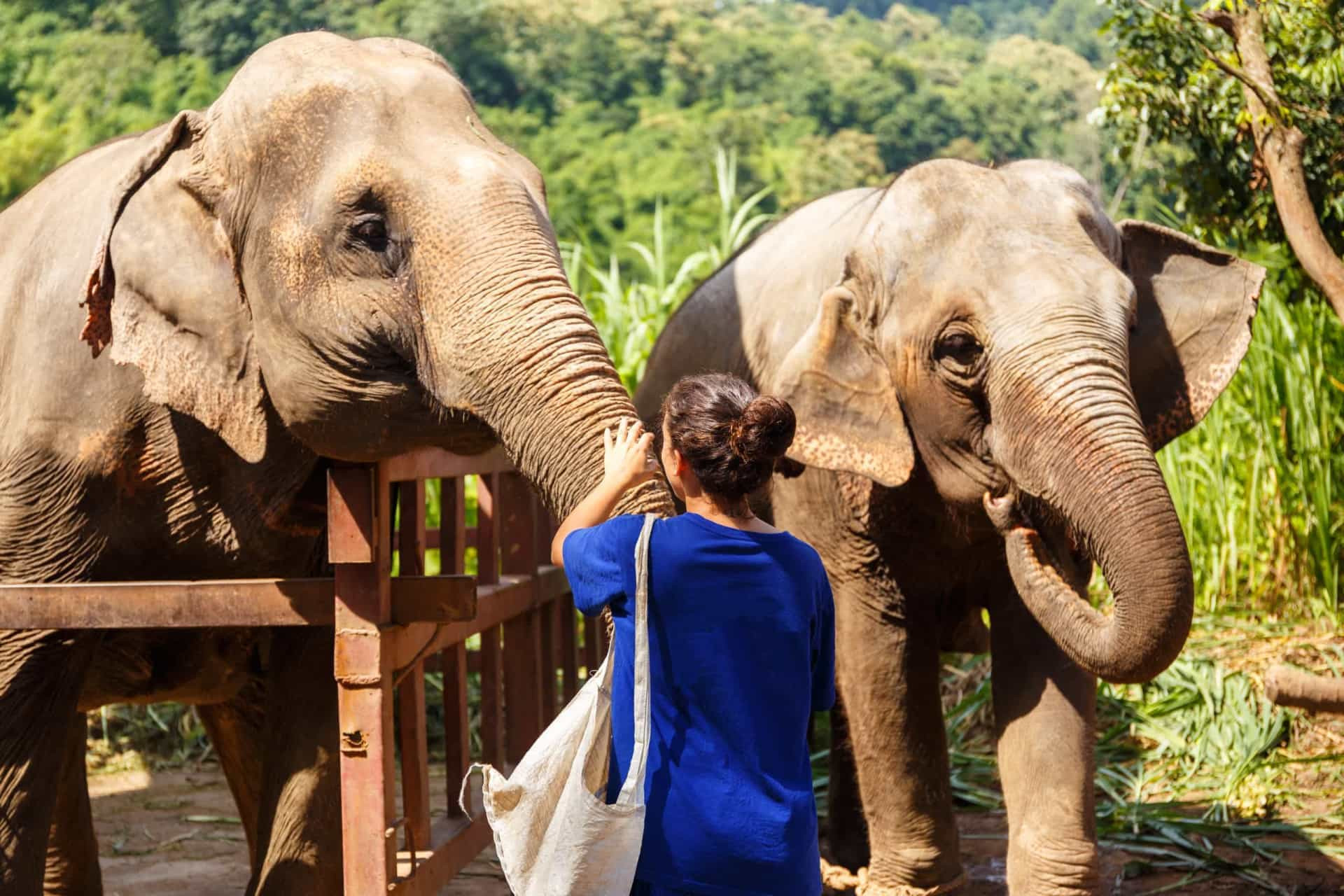
It’s an incredible and primordial experience to encounter wildlife, one that is essential to existing in the ecosystem of the world, teaching us about our place in it and inspiring us to take better care of its majestic nature. But it’s an experience that is at risk. With animal extinction on the rise and with many experiences catering to human comfort over animal welfare, there are unfortunately many problems with animal tourism today, ranging from zoos to the animals' natural habitats.
But that doesn’t mean there isn’t a right way to do it! Click through to see how to have ethical animal encounters and enjoy wildlife responsibly, so that we can protect these creatures and continue to allow future generations this magical experience.
You may also like: The 30 strangest superstitions in the world

The problem of centering human entertainment
Far too many wildlife facilities around the world exist purely for human entertainment at the cost of animals. That’s how zoos began in the first place, also partly as a way to boast about one’s access to the world.
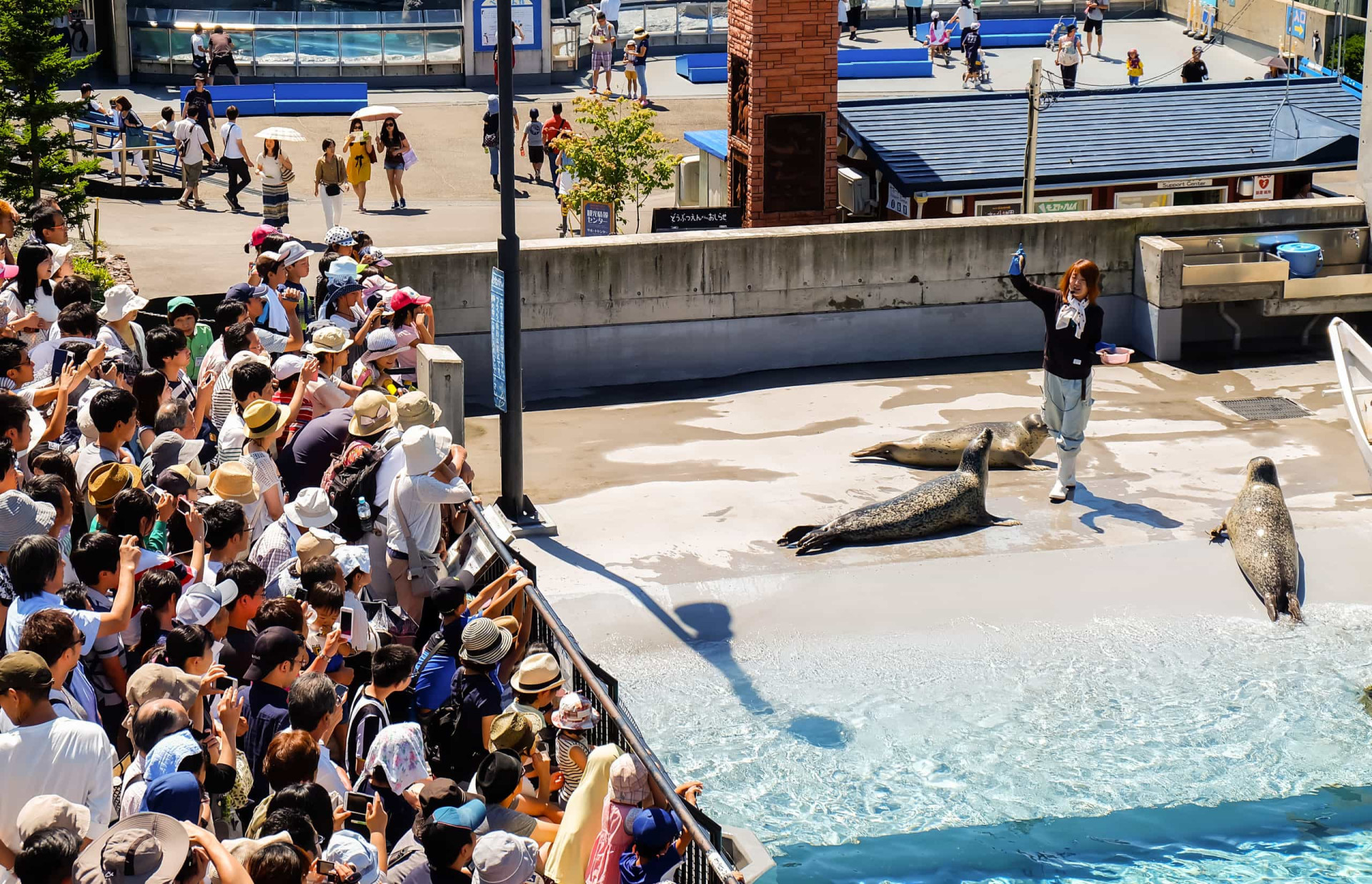
Animal performances have a dark underbelly
Most of us have enjoyed a show that involved a cute animal, and while they might be entertaining to watch and draw in huge crowds of adoring fans, the truth is that forcing animals to perform often involves physical or emotional torture.
You may also like: How do photographers capture those priceless shots?

Canned hunting is obviously the worst
One of the worst forms of animal encounters is obviously that which involves killing them, but canned hunting experiences—which involves breeding animals to be shot by tourists in a confined space—remains a popular activity.
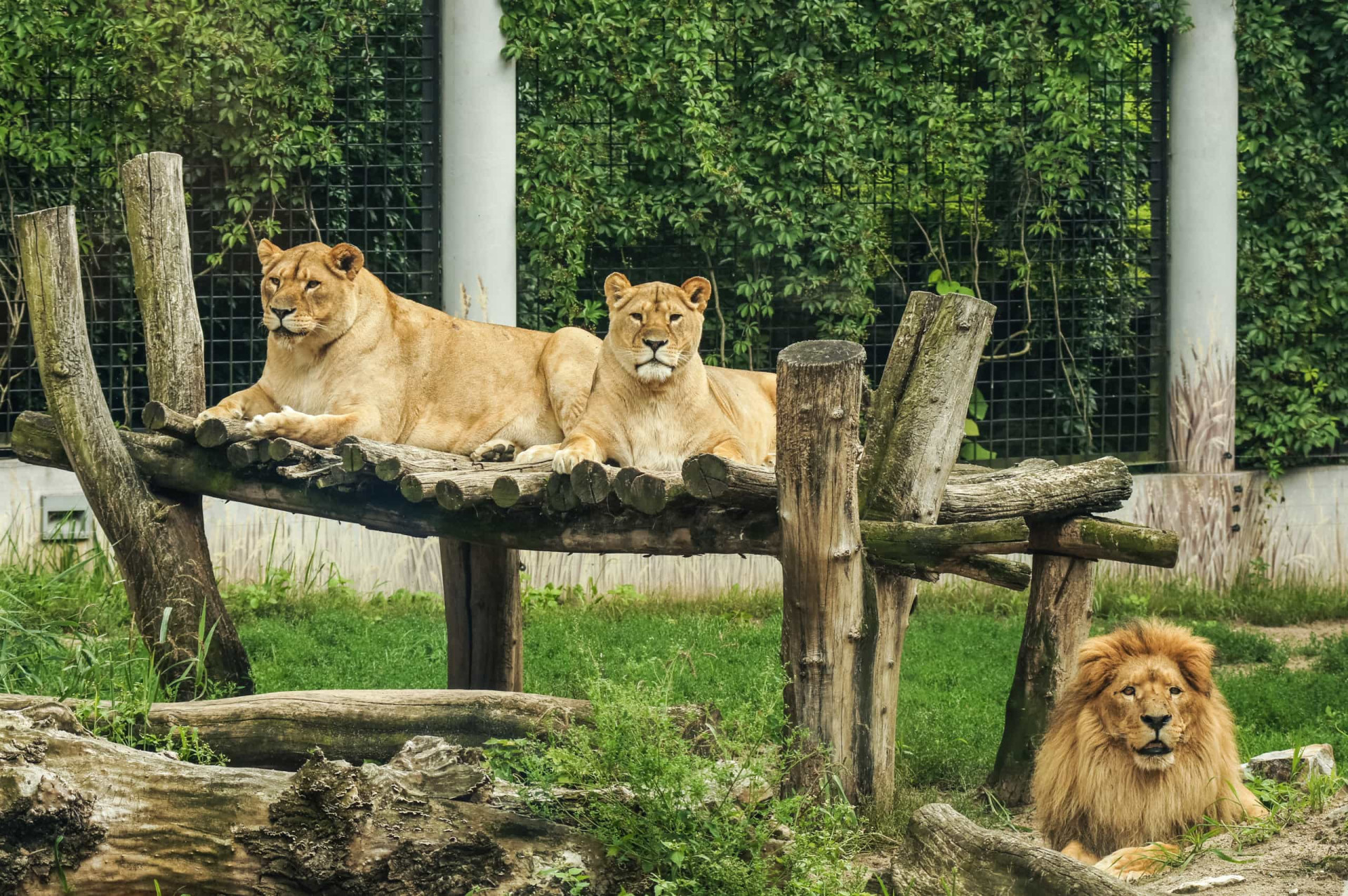
And what about zoos?
Some people will reject zoos full stop for holding animals in captivity and thus diminishing their quality of life. They believe that animals have a right to their own freedom. But equally troubling is that millions of animals are already captive around the world right now, so what can be done?
You may also like: Canadian foods that are insanely weird to other countries
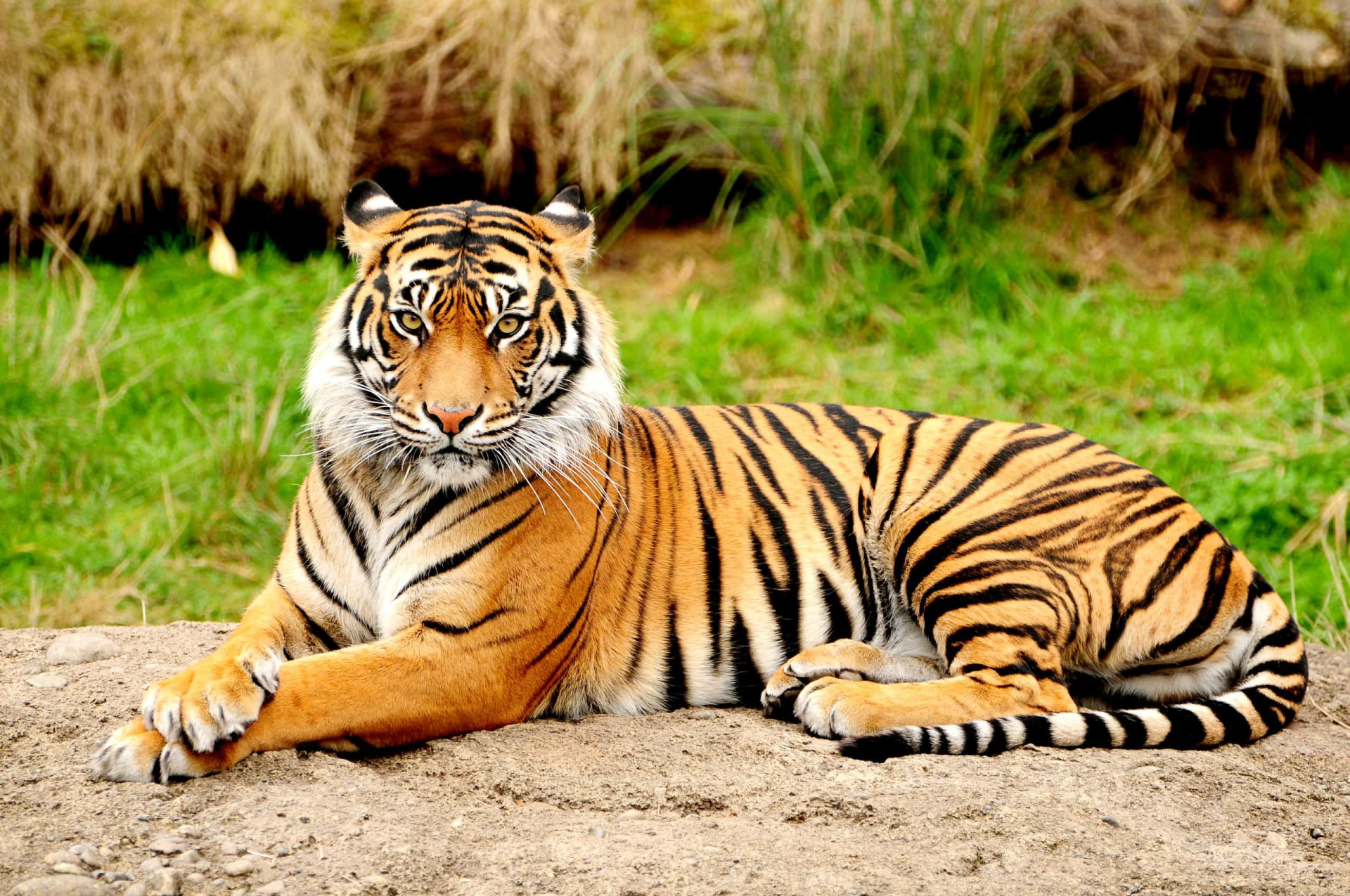
Captive breeding is harmful
Scientists and animal professionals now agree that it's unethical to take animals from the wild and into captivity, and it's a direct threat to conservation. But captive breeding is also harmful, even if zoos will try to convince you that they're helping conservation because they're breeding endangered species—that does nothing for the animal's existence in the wild.
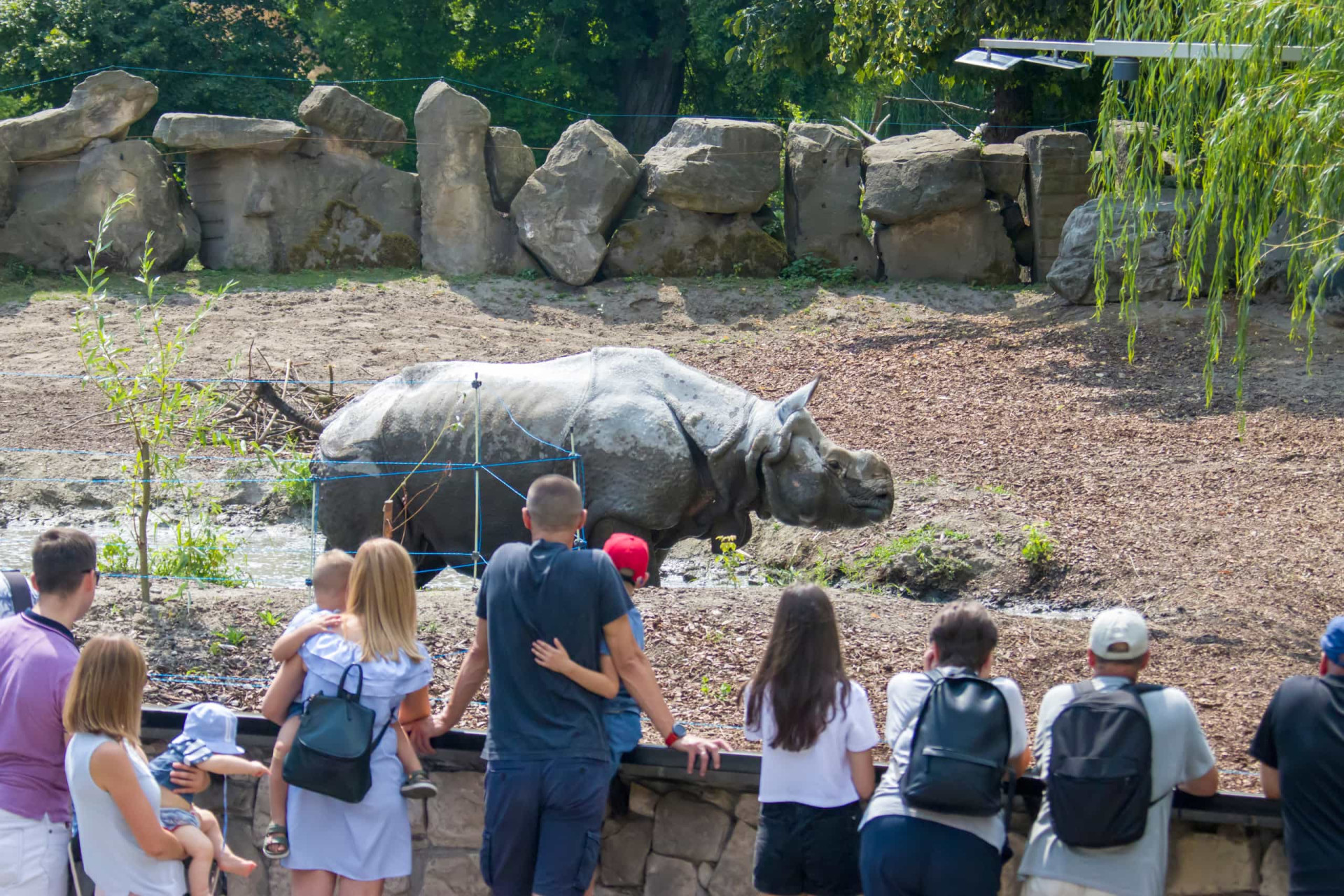
The one exception
The one exception to captive breeding's harmfulness is when a species' population is so small that the animals need to be protected in captivity to breed for a reintroduction program. But this must be done with the utmost care, and scientists and vets help choose specific animals to mate with one another based on their history and genetics to increase genetic diversity and thus also the odds that the animal will survive when reintroduced into the wild.
You may also like: The world's scariest animals
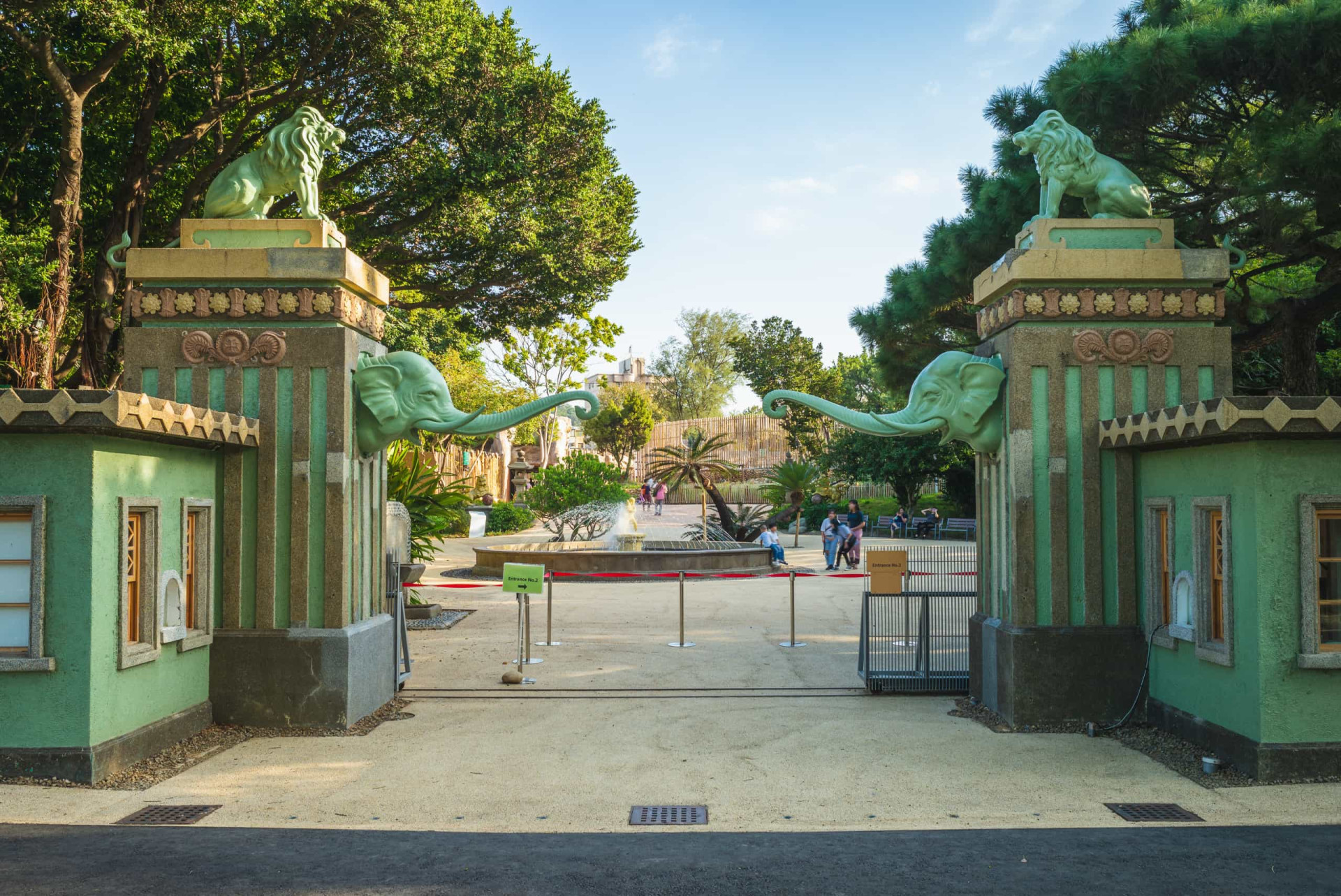
Benefits of zoos
The primary benefits that zoos provide are education and conservation of species and habitats, says Dr. Michael Hutchins, director of the Department of Conservation and Science for the American Zoo and Aquarium Association (AZA), which is an independent accrediting organization that ensures zoos and aquariums are meeting conservation, scientific, and education standards.
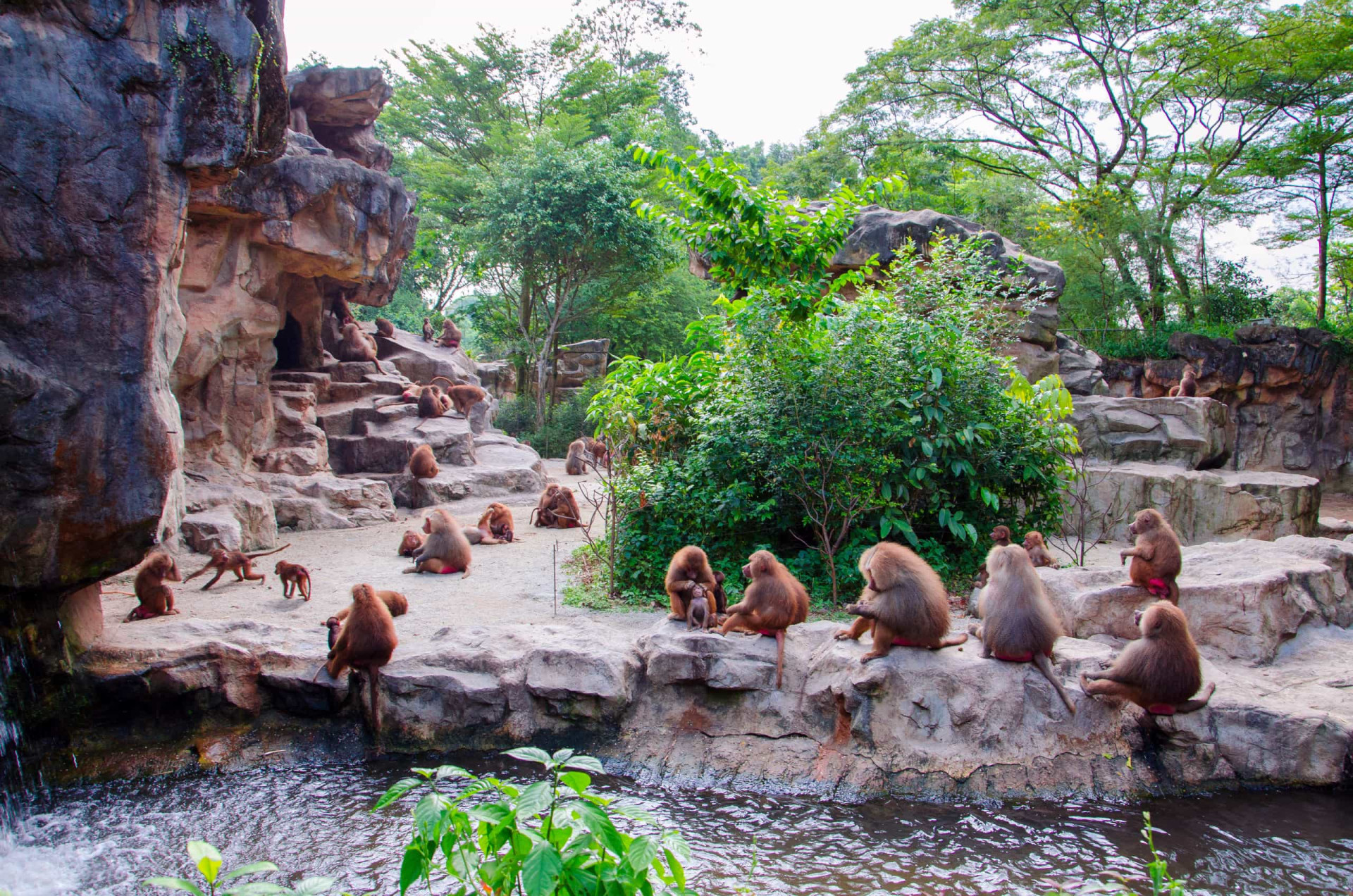
Ethical zoos play a role in conservation
Zoos support conservation by educating the public, raising money for conservation programs, developing technology to track wild populations, conducting scientific research, advancing veterinary medicine, and developing animal handling techniques, the American Veterinary Medical Association reports. Captivity offers the chance to learn much more about animals than if they were in the wild.
You may also like: Hill of Crosses: the ghosts, legends, and wonders
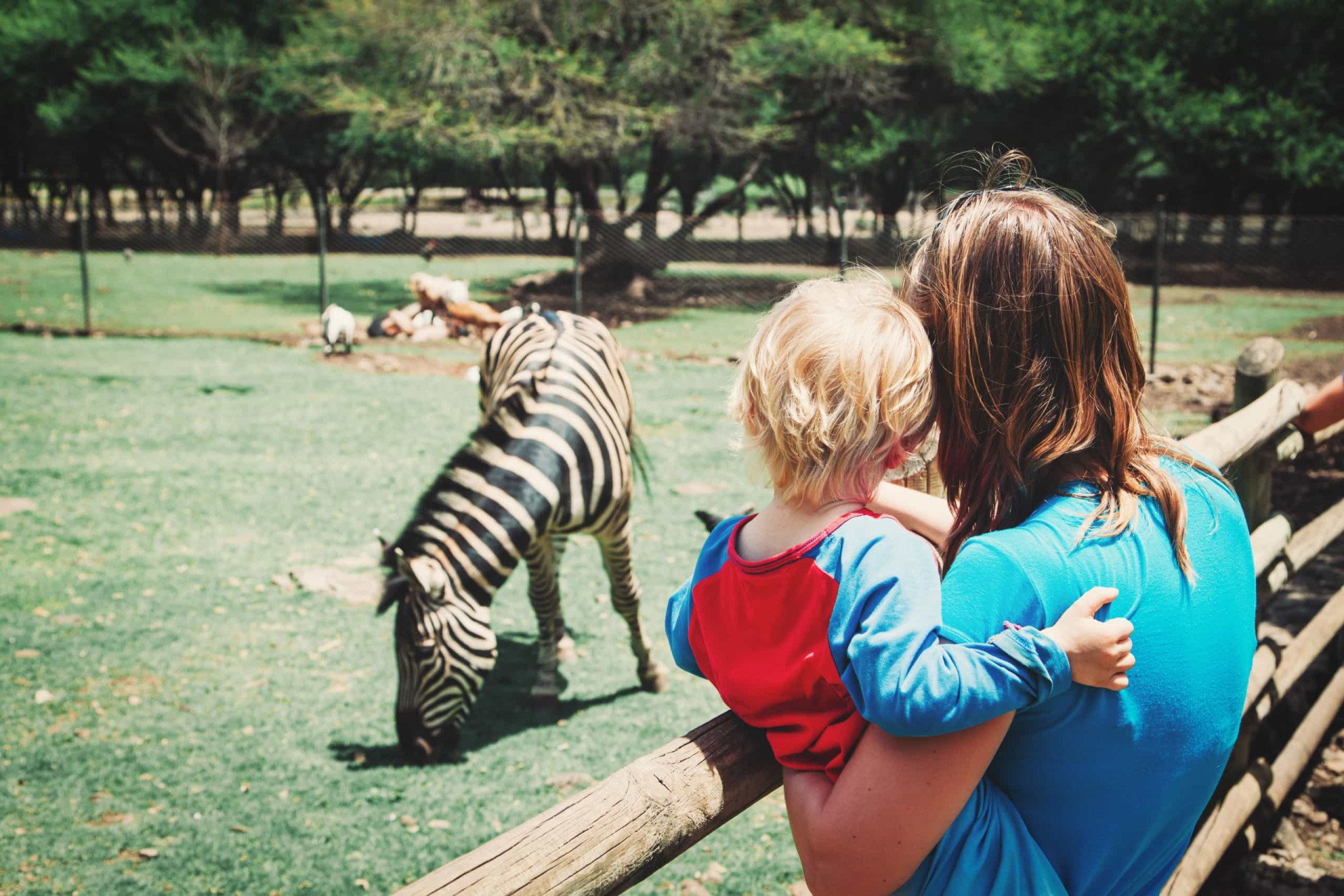
Conservation by connection and education
Zoos also encourage conservation by getting people to connect with animals and care about them, because when people have real and personal connections with nature, they are more likely to have pro-conservation attitudes and behaviors. Seeing the animals and reading about harmful practices putting their lives at risk is much more motivating to change those practices or make a donation.
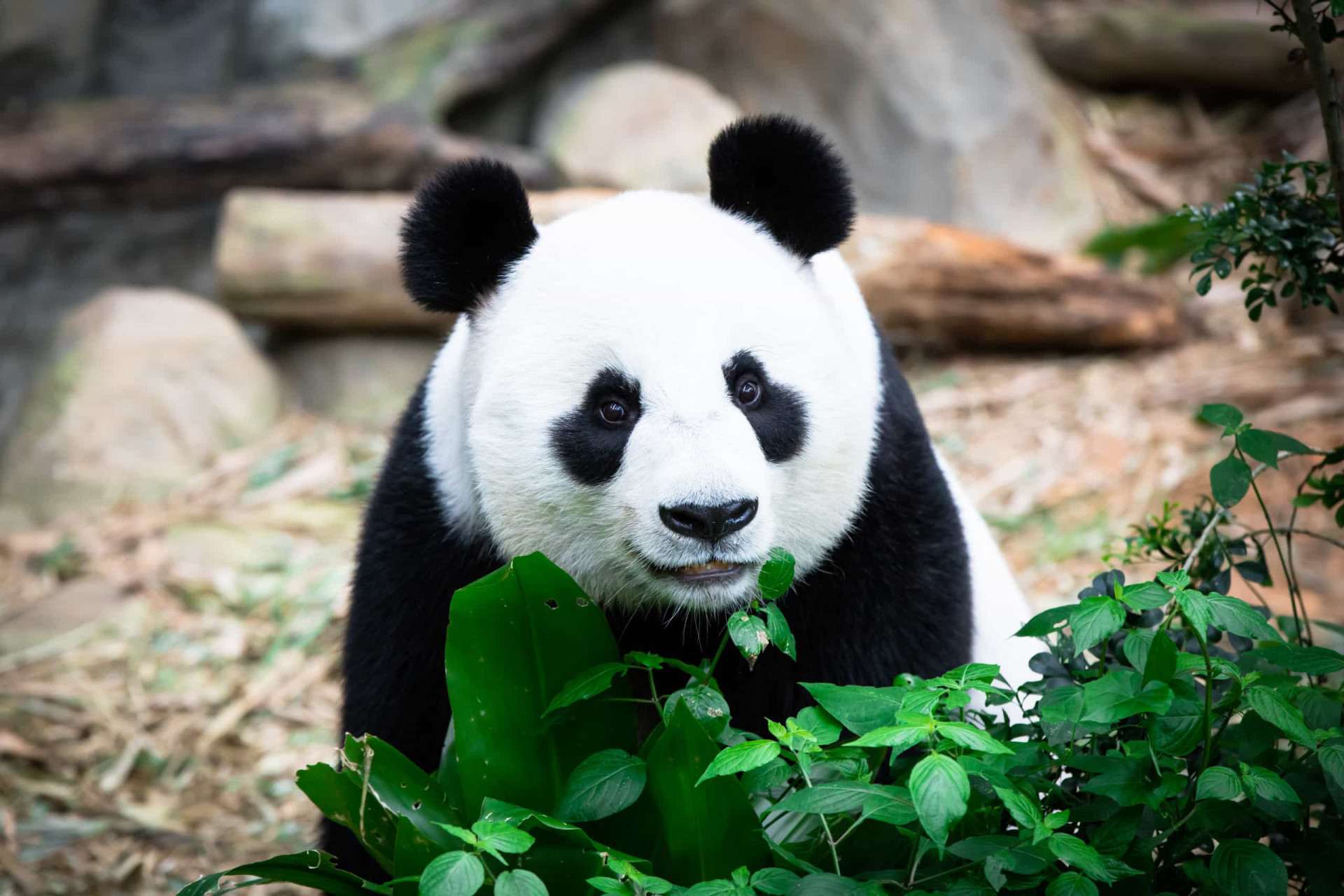
Animal welfare must be a top focus
Equally as important to conservation efforts is individual animal welfare. Zoos and aquariums must be taking good care to make sure their animals are happy, which involves promoting natural behaviors and environments.
You may also like: Aussie actors with other talents (beside acting)
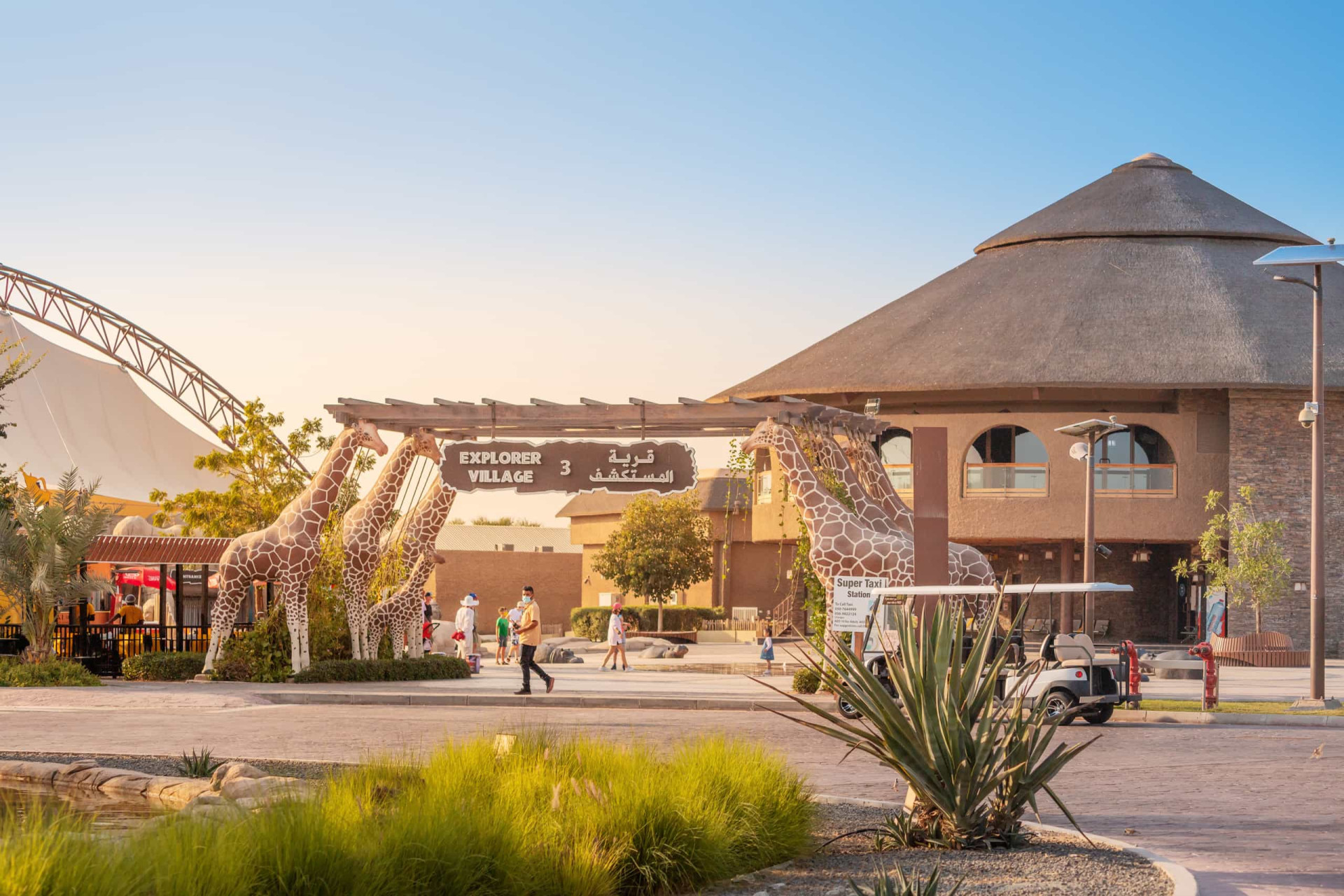
Check who runs the zoo
One simple way to see if a zoo is ethical is to look at who owns/runs it. Zoos owned by organizations often have a board of directors and multiple parties responsible, and government and non-profits will be transparent about their funds. Certifications from organizations like AZA or the European Association of Zoos and Aquaria mean that zoos or aquariums have suitable standards and contribute to global biodiversity conservation goals.
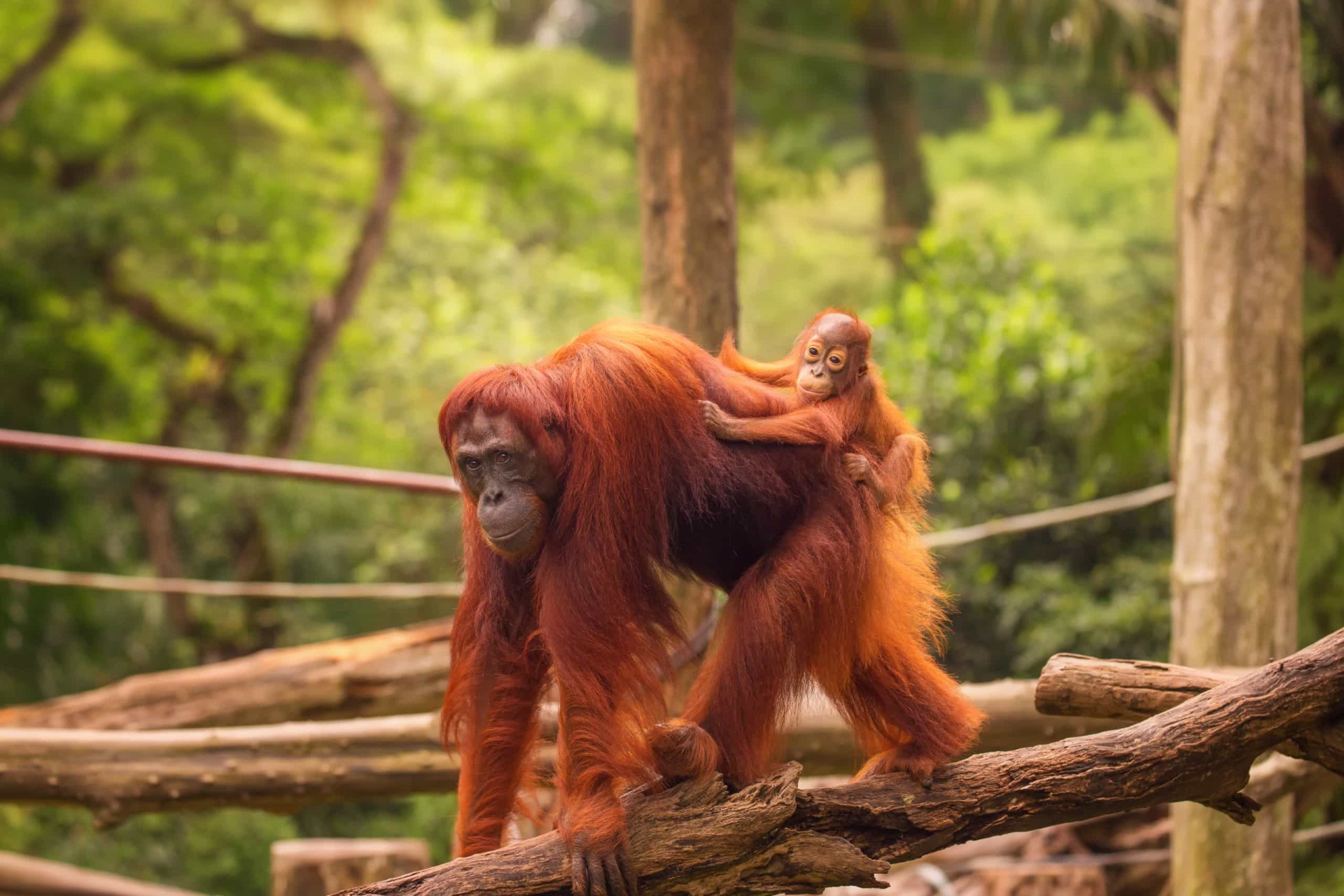
Signs of an ethical zoo include realistic-looking enclosures that mimic natural habitats and are spacious, babies are a rare occurrence and they are with their mothers, there are no shows or opportunities to touch the animals, and there are plenty of placards with educational information about the animals in the wild.
You may also like: The world's most powerful passports for 2023
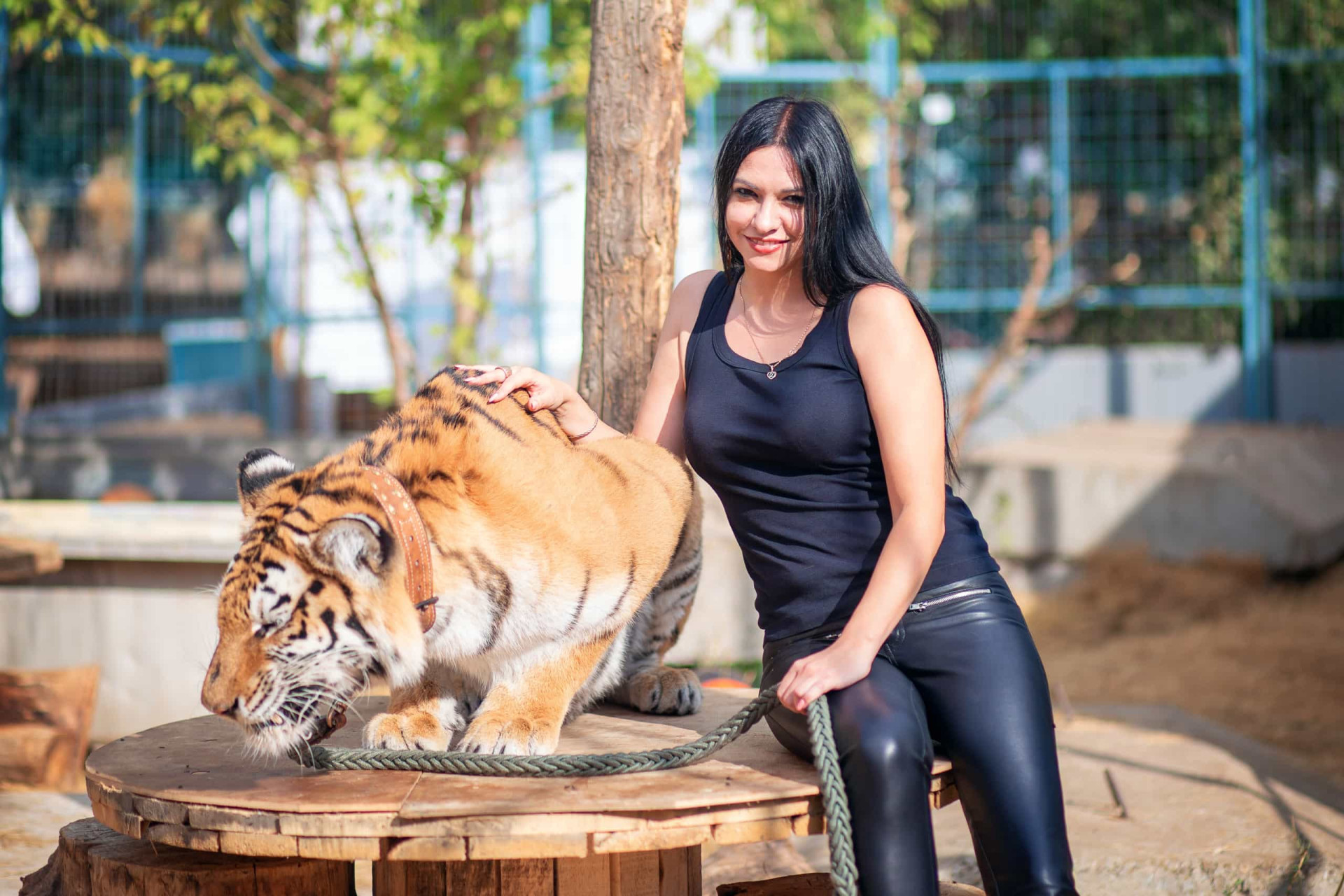
Signs of an unethical animal tourism experience are the focus on photo opportunities, constant baby animals, little educational information available, small enclosures, lack of barriers, no research practices, and private ownership. These are often the characteristics of roadside zoos.
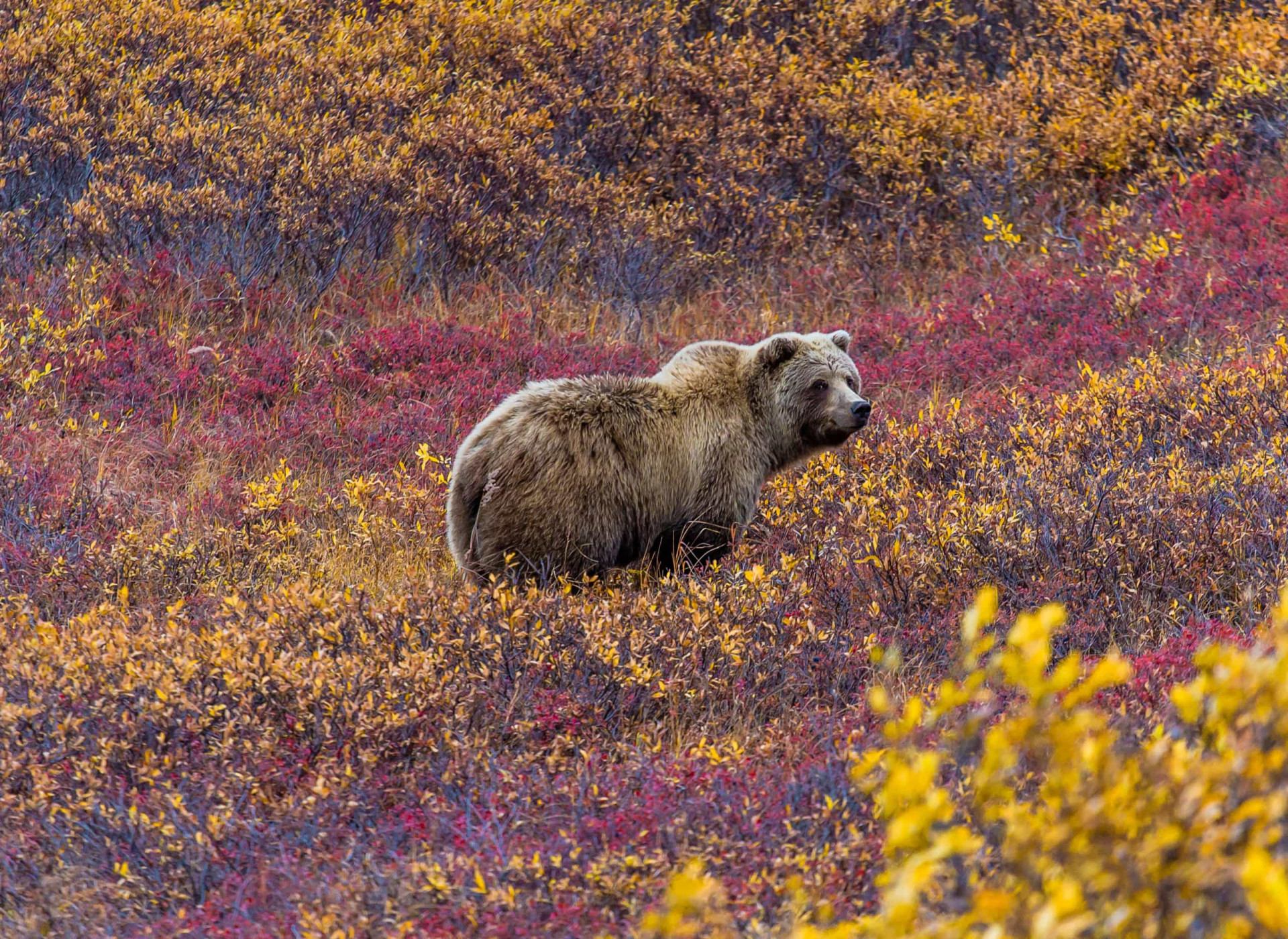
Outside of zoos and aquariums
According to Sustainable Jungle, national parks are the best way to enjoy an ethical wildlife experience. They typically boast wide open expanses that have been preserved in their natural state, but usually still offer a few roadways and hiking paths.
You may also like: You won't believe the age gap between these celebrity couples!
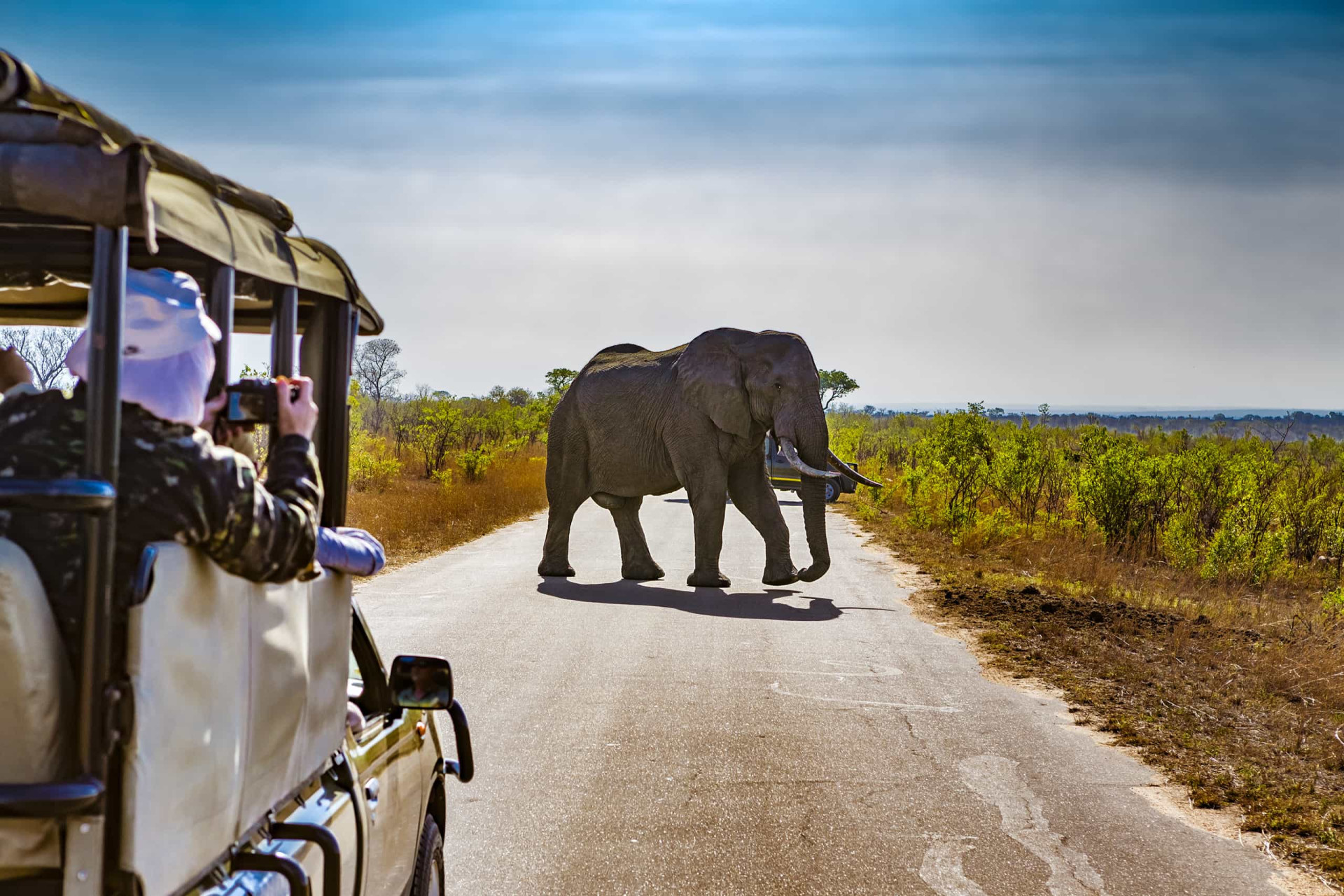
National parks
National parks are exciting on the one hand because you don't know when you'll encounter a wild animal, but on the other hand it may also mean you won't see the animal you were hoping to see.
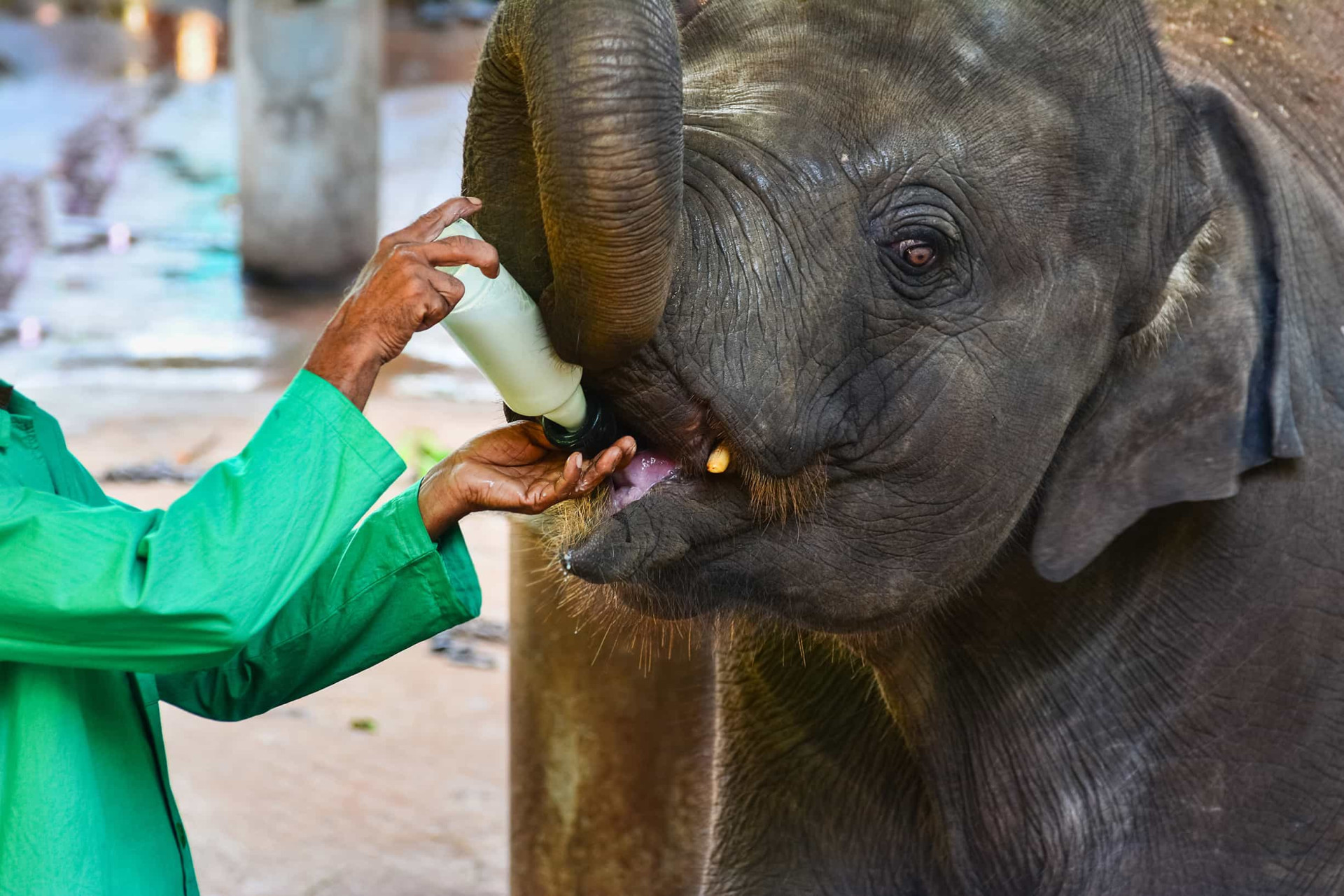
Rehabilitation and conservation centers
Oftentimes when traveling, people wanting a controlled but ethical wildlife experience will visit animal rehabilitation and conservation centers. They can be a great way to learn about various animal species up close, and you can feel good about giving them your money.
You may also like: Bizarre original names of famous bands
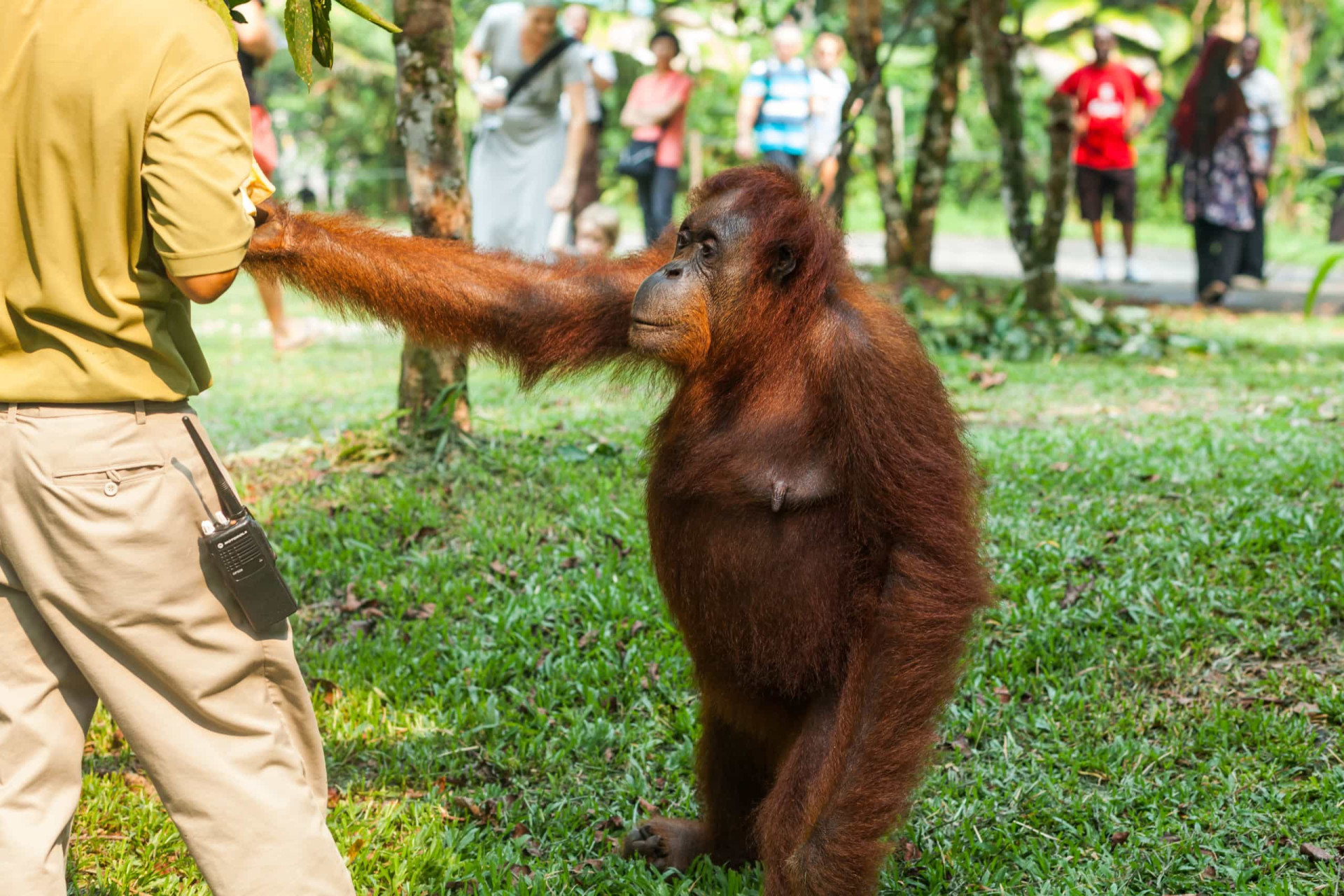
But be careful
Sometimes places will market a “sanctuary” experience but actually offer little to no rehabilitation for animals. Instead, they can be captive wildlife viewing centers that breed animals on site, so it's best to do your research and look for any real wildlife release programs they should be a part of.
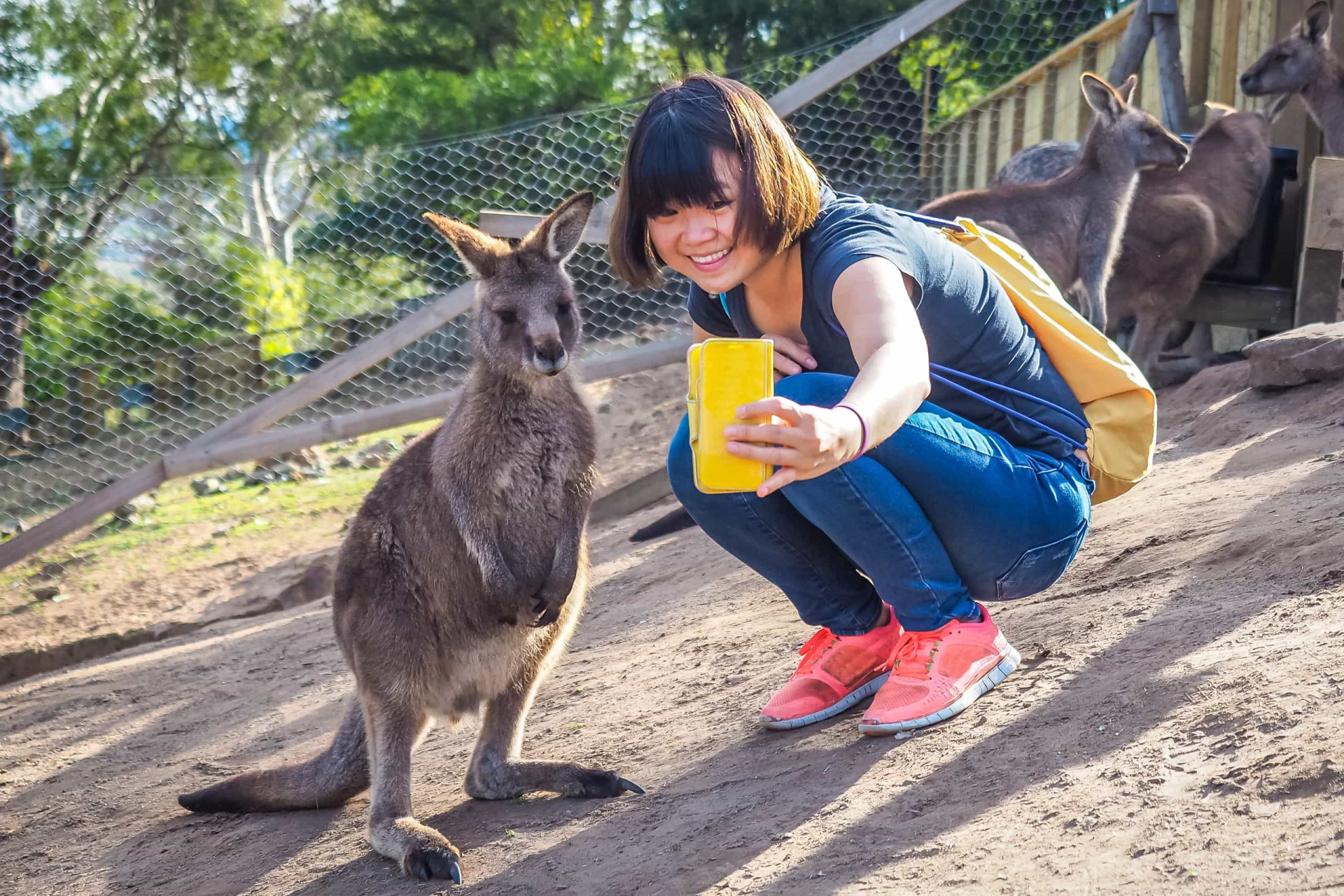
If you're taking a selfie, it's probably not ethical
As a rule of thumb, experts advise staying away from any captive facilities that offer the chance to take a selfie with an animal as that level of domestication almost always involves physical or emotional torture. If the animals are carnivores, they're also usually heavily drugged.
You may also like: How to kill germs in your car during the pandemic and beyond

Use helpful sources
Aaron 'Bertie' Gekoski, an award-winning environmental photojournalist, built a platform called Raise the Red Flag for reporting facilities that have concerning wildlife practices to help you avoid unethical tourist destinations. Places associated with the World Wildlife Fund are usually a good indicator of ethical practices, as they have strict requirements.
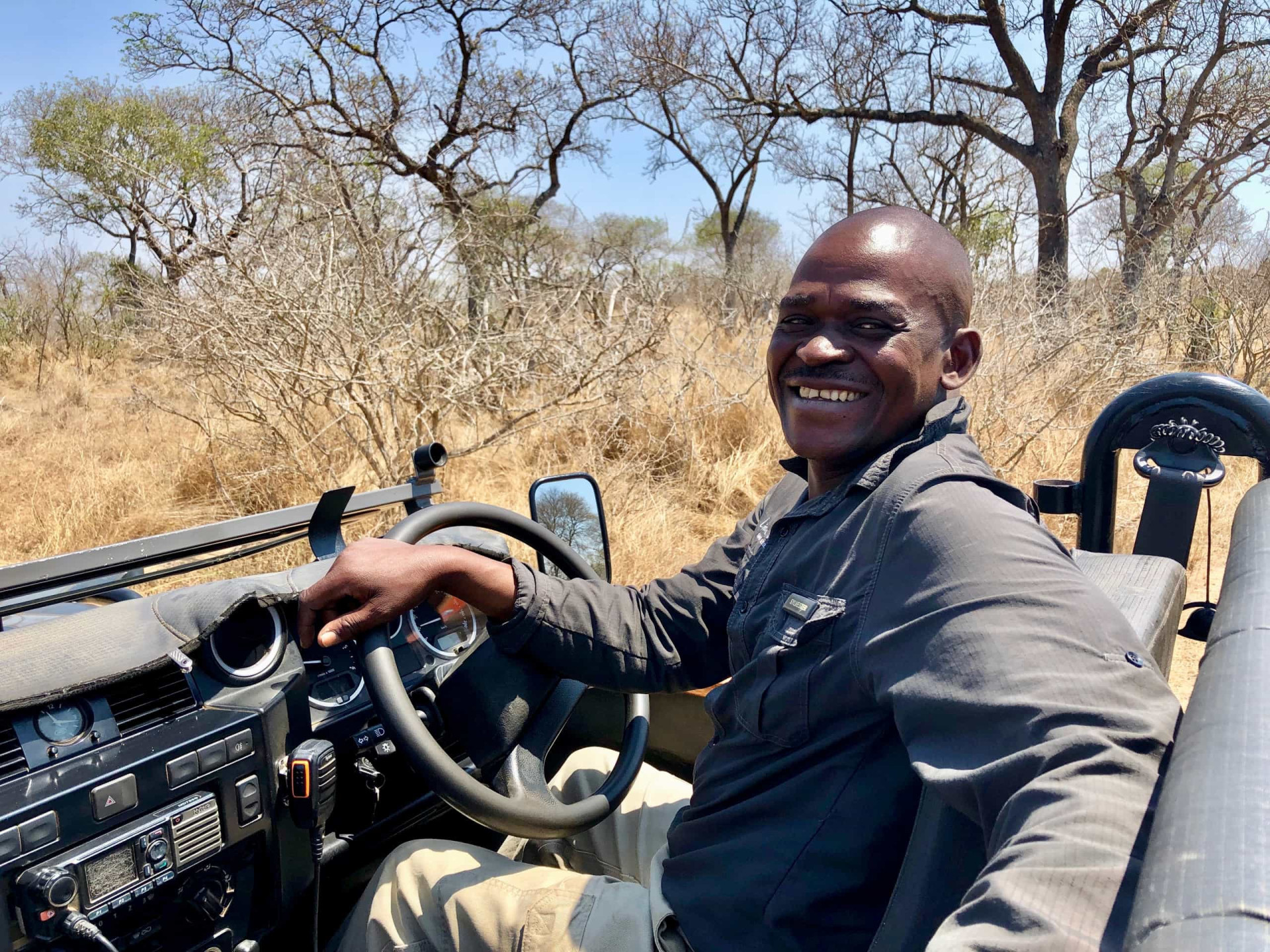
Pick the right guide
Having a guide through wildlife encounters is almost always essential if you don't have enough knowledge, and the right guide can make a world of difference. Do your research and find a reputable and ethical provider that really cares about the environment they're operating in, and hopefully one that is native to the area. Look for guides who have scientific backgrounds or are passionate about sustainability, and who aren't just offering thrills.
You may also like: Fascinating facts about Formula One racing
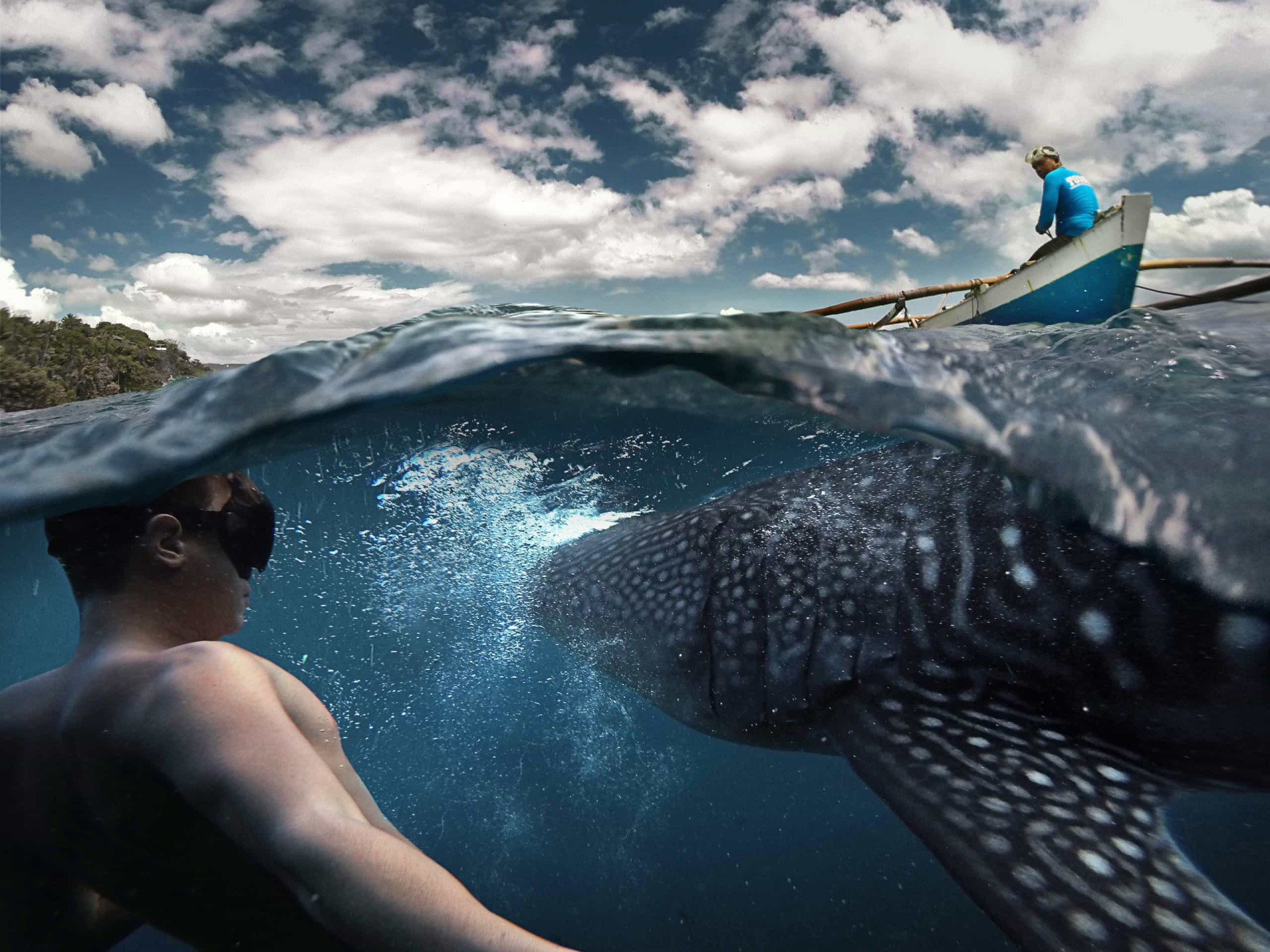
Avoid violating animals' territory
If you're taking a safari, for example, choose a guiding company that will stick to the roads and keep a fair distance. Likewise if you're on a boating trip to spot whales, seals, or dolphins, check that the captain follows necessary guidelines so as not to upset the animals' natural behavior.

Have patience
When trying to encounter animals in the wild, it takes a lot more patience than going to a zoo or aquarium where they're all collected for you. But this is an opportunity to experience the animal's real behavior, and it's ultimately much more rewarding and memorable.
You may also like: Stars and their looks of love
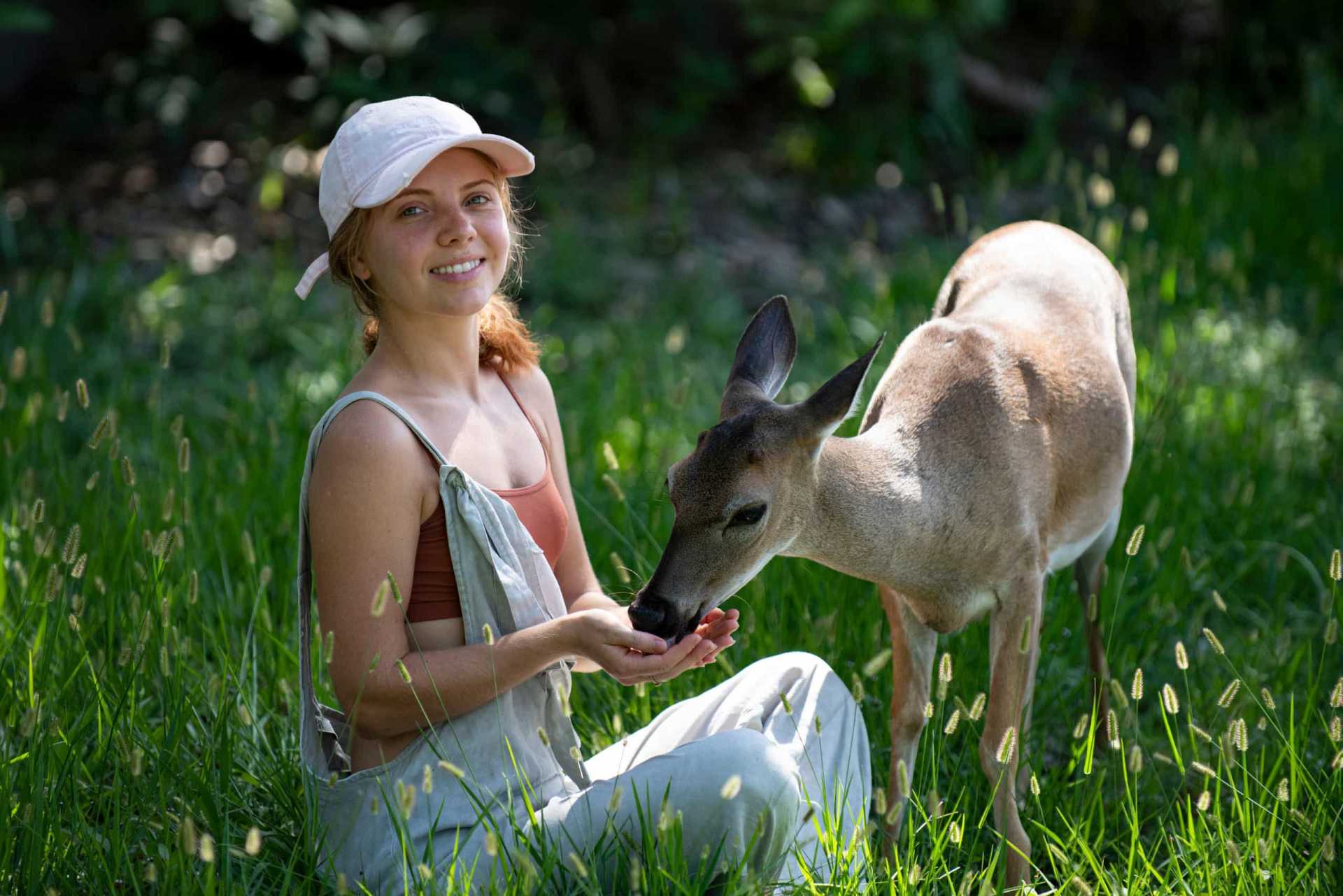
Don't feed the animals
Though it might feel like a nice thing, you should never be feeding wild animals, because not only can it make them aggressive, it's also not good for them. They need to hunt the food that's right for their bodies, and the hunting process is essential to their body and the environment's equilibrium.
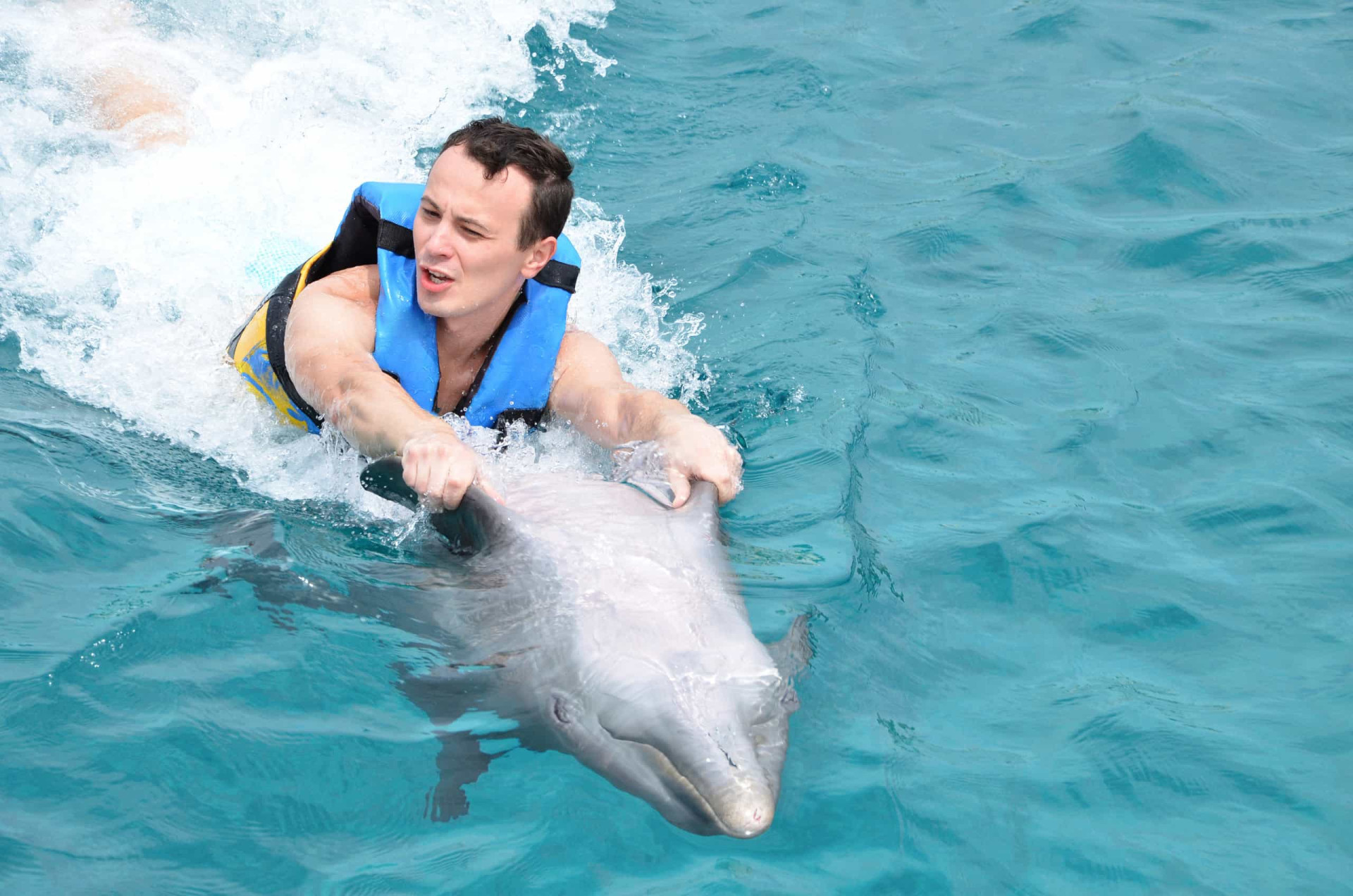
No riding animals
Riding elephants is quite common in Asia but often involves keeping the huge creatures in chains and drugging and beating them from childhood in order to domesticate them. You should try to avoid the riding of any animals, including swimming with dolphins.
You may also like: Famous people buried in unmarked graves
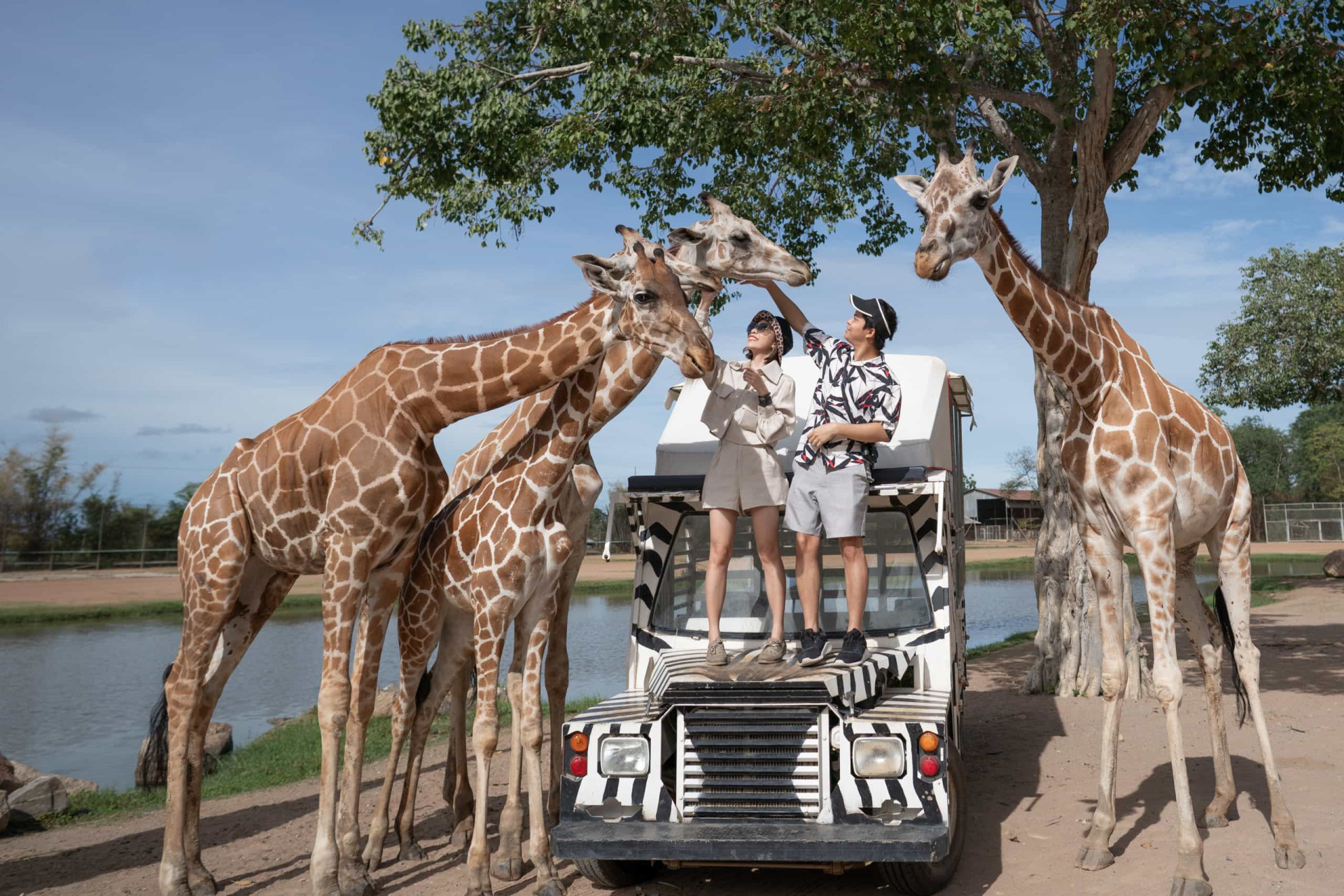
Avoid touching animals
If you think about it, you really shouldn't be able to get up close and personal with a big, dangerous animal, so if a company is offering you that experience, there's a good chance the animals have been mistreated out of their instincts.
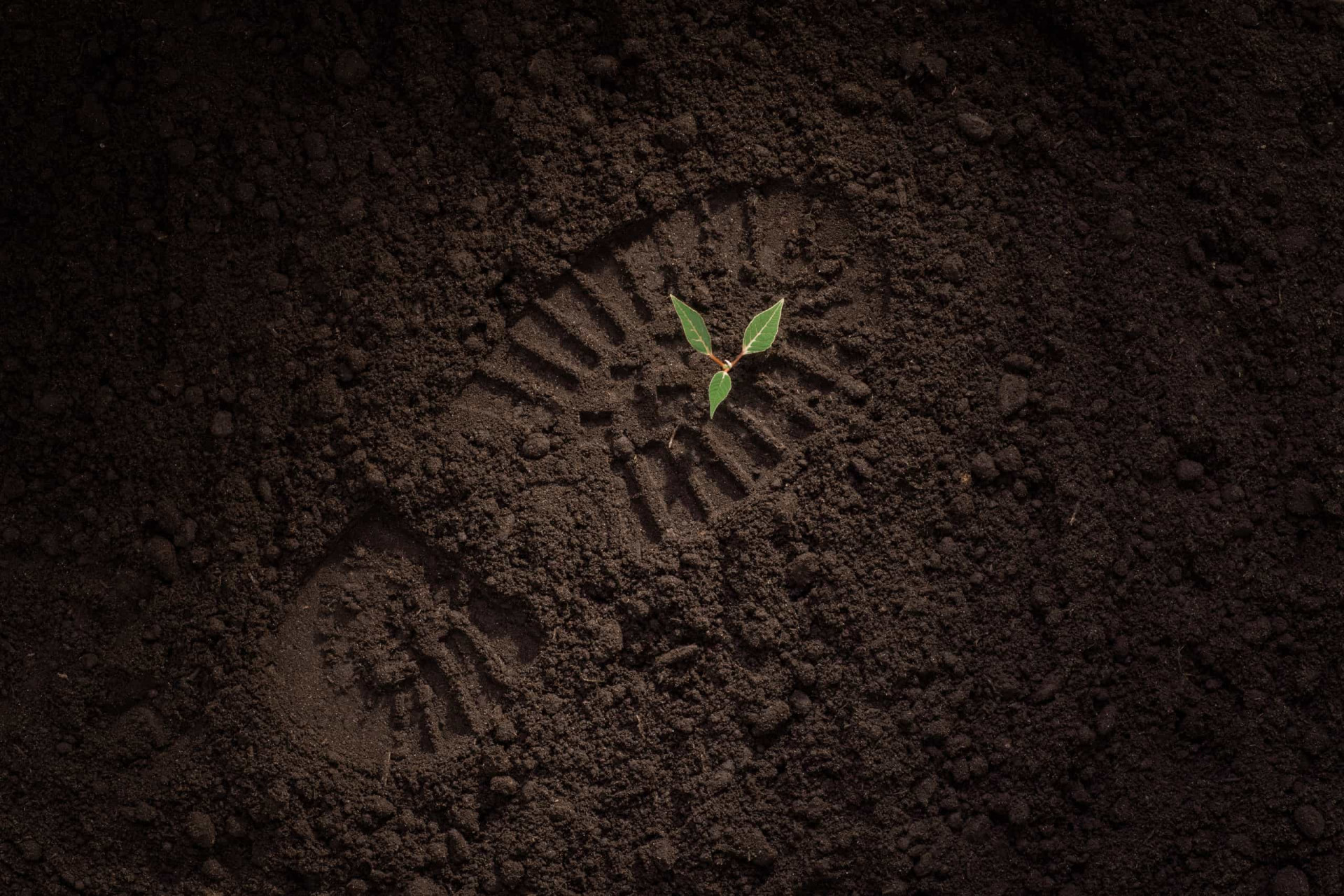
Leave only footprints
Another important part of going to see animals is to not litter in their natural habitat. Leaving things like cigarette butts on the ground is bad enough in urban environments, but in the wilderness it can be catastrophic for wild animals who often mistake trash for food. That goes for throwing things in the ocean as well!
You may also like: Following the footsteps of Jesus: Biblical sites you can still visit
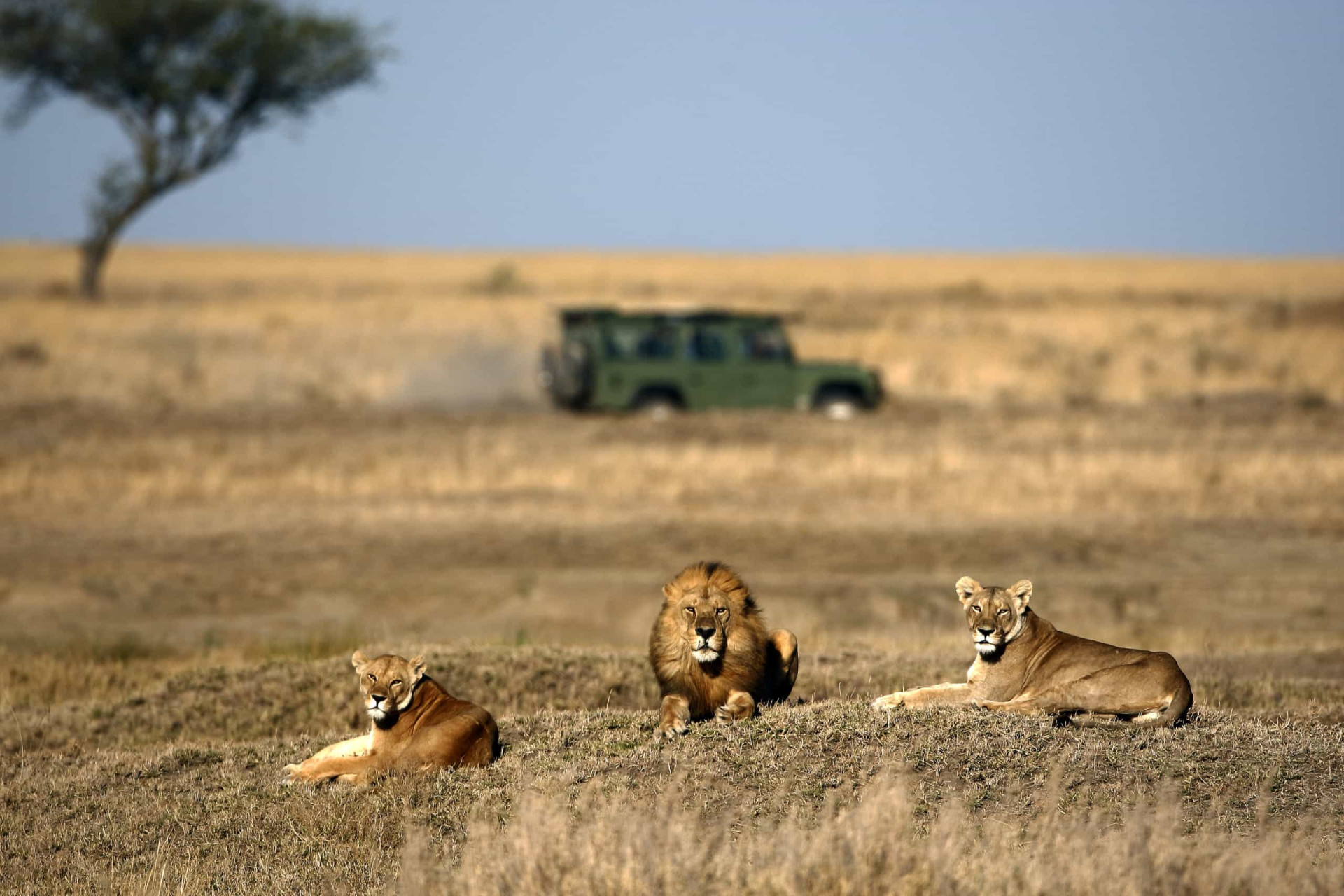
Some ethical wildlife experiences
Beyond ethical zoos and aquariums, and animal rehabilitation sanctuaries, there are great conservation parks and nature reserves where you can go on safaris with professional guides to see animals thriving in their own habitat from a safe distance.
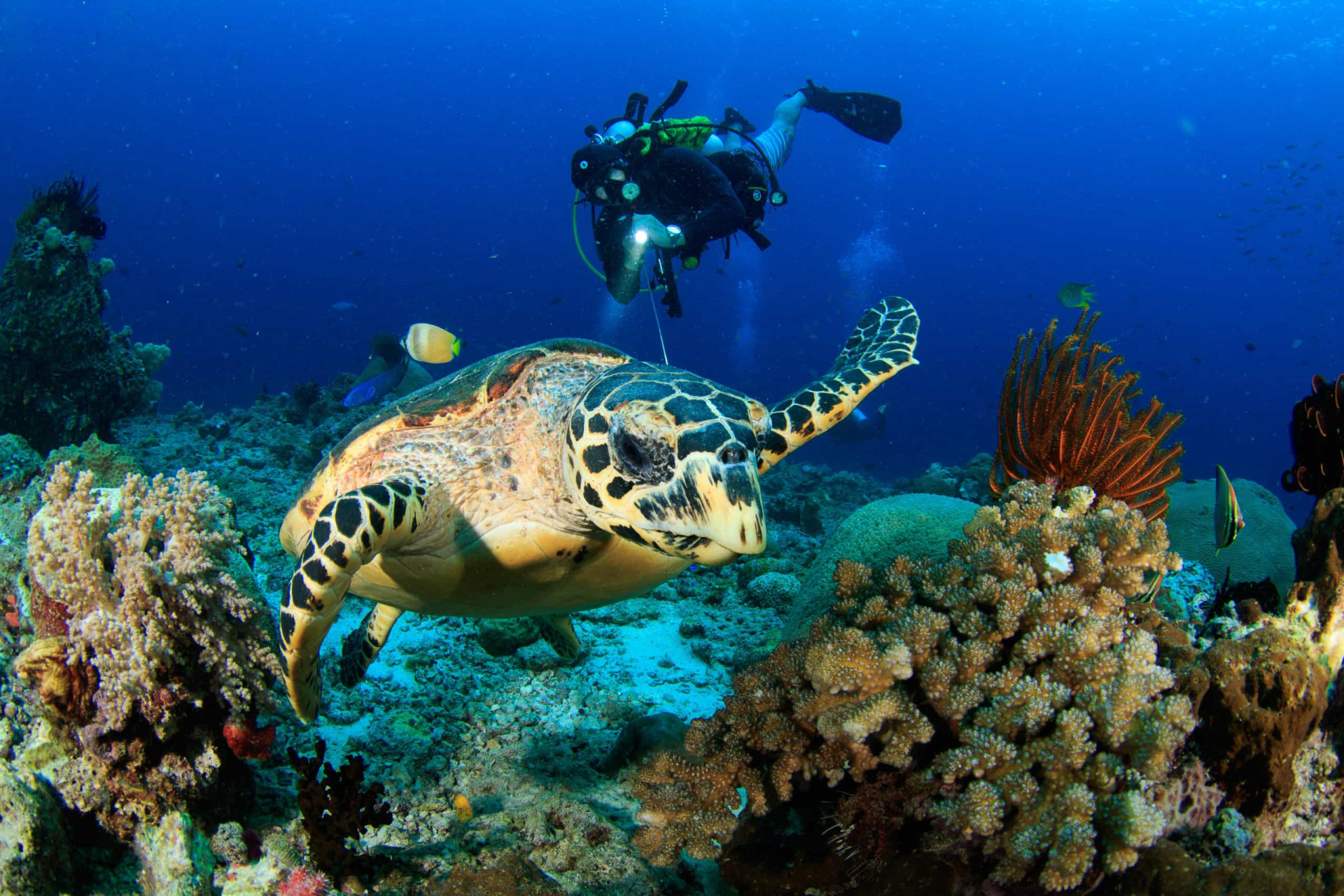
Scuba diving or snorkeling can be an ethical way to experience underwater wildlife as long as you take proper measures like not touching the reef, removing any waste you see, using reef-safe sunscreen, and choosing destinations and guides that maintain ethical and environmentally-friendly practices.
You may also like: The disturbing prophecies of English witch Mother Shipton
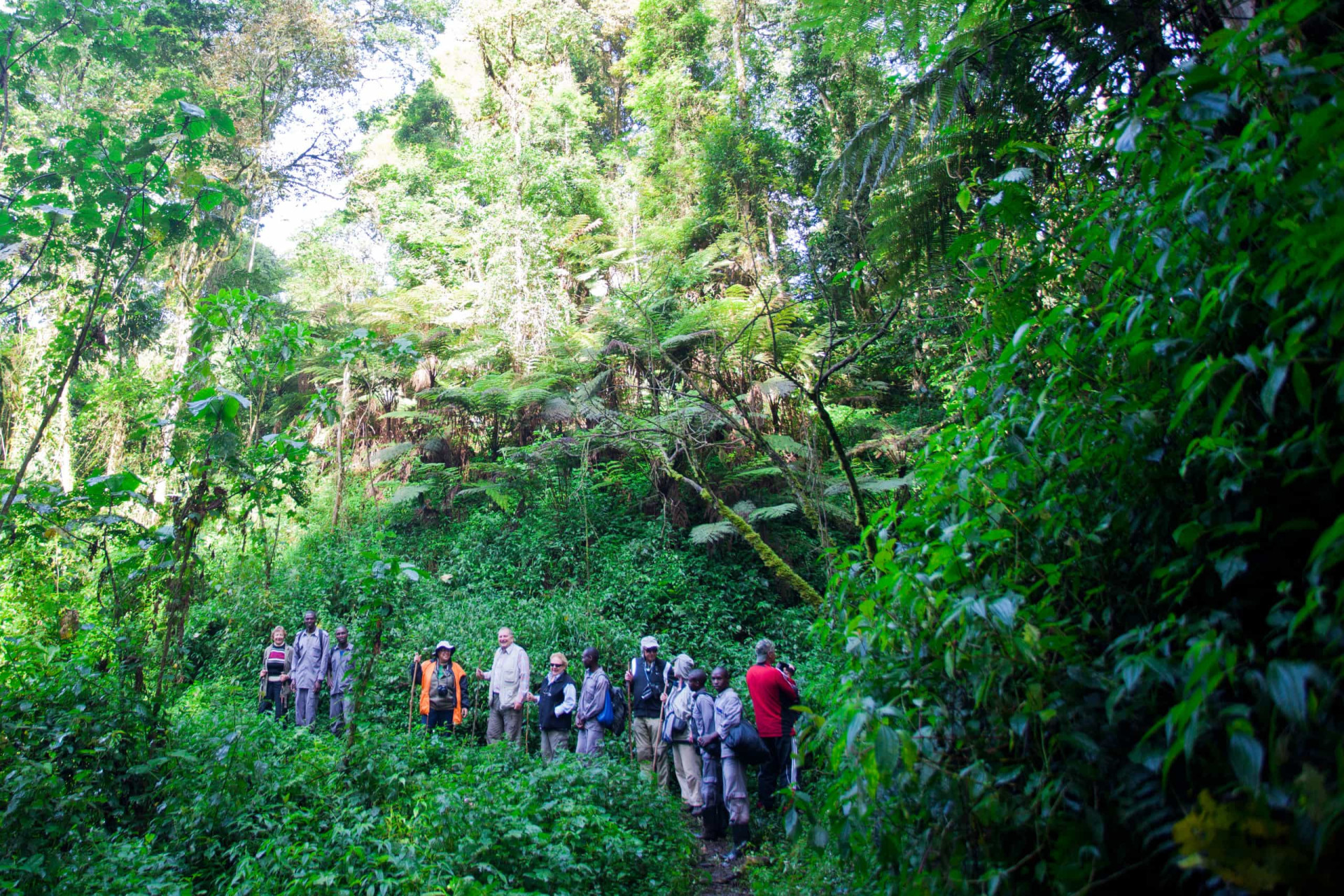
Gorilla trekking in places like Rwanda's Volcanoes National Park often involves going on a long guided hike with professional guides to spend time with mountain gorillas in their natural habitat.
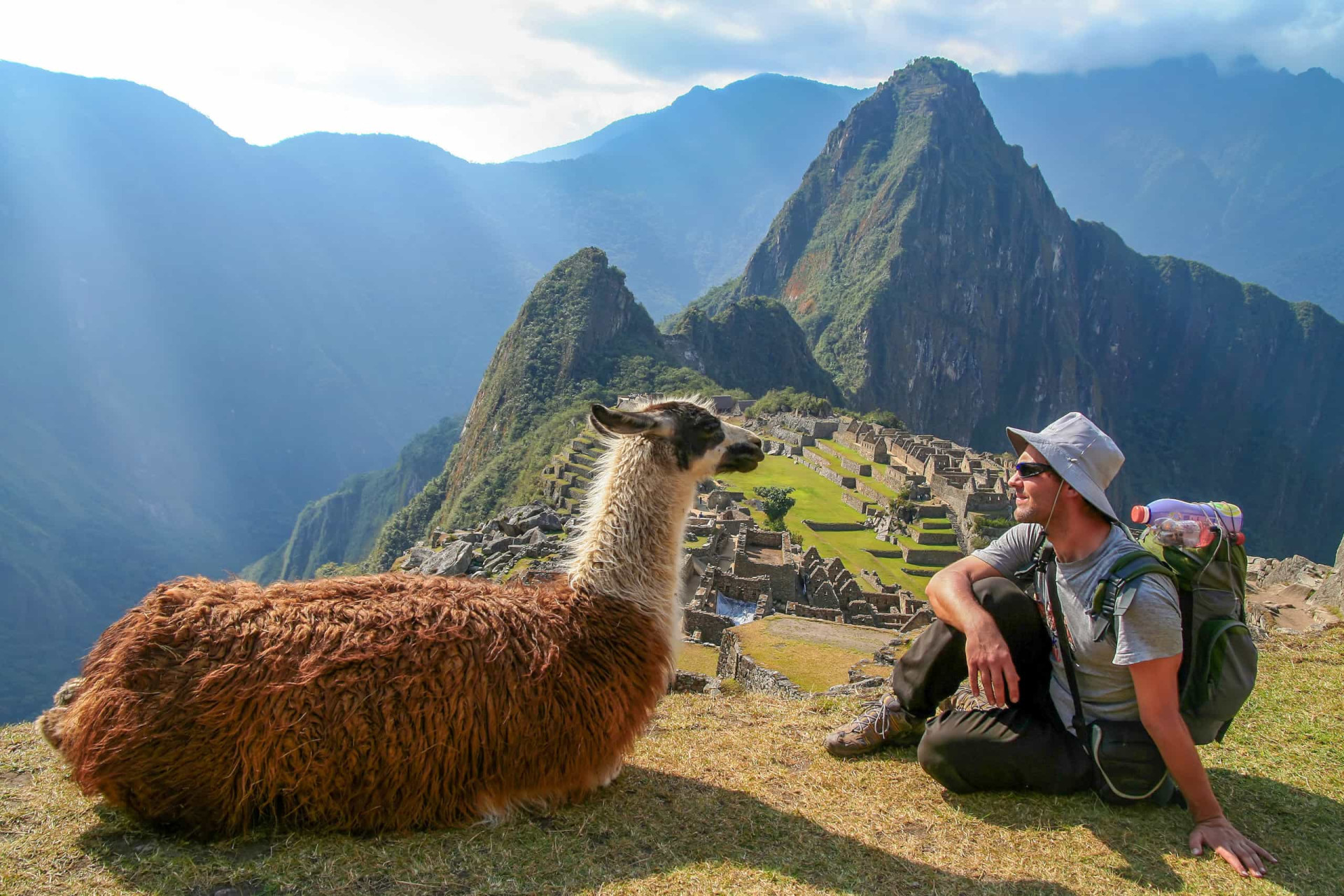
Get out of your comfort zone
The majority of the mistreatment of animals comes from the human desire for comfort, but if you really want a wildlife experience, you're going to have to venture at least a little into the wild!
Sources: (American Veterinary Medical Association) (Pebble Magazine) (The Wise Traveller) (Eco-Age)
See also: The best and worst countries for animal welfare
More for You
TG4's Máire Treasa Ní Cheallaigh 'disappointed' as she's forced to walk away from dream job
Cooper's Hill Cheese Rolling race descends into chaos
Nikki Haley sparks outrage with ‘finish them’ message on Israeli bomb
Six rare 50p coins could make you rich – including 'holy grail' piece worth £250
While My Guitar Gently Sells: John Lennon's long-lost guitar breaks world record at auction
Moscow threatens attacks on Europe as Nato leaders green-light strikes in Russia
Nvidia insiders reveal how Jensen Huang wants emails to be written
Netflix movie watched more than 28 million times in first 2 days
Cop nearly killed on Jan 6 called Trump ‘authoritian.’ Hours later, his mom was ‘swatted’
We finally know why killer whales have been attacking boats
Jennifer Lopez's $9M Las Vegas residency deal in jeopardy as tour and album flop
Parliament suspended over Palestinian flag
Rapid changes in gravitational force ‘led to 178ft altitude drop on plane’
Ukraine has a new weapon and it could prove to be devastating for Russia
Engineers find new way to make ‘wonder material’ Graphene that could change the world
BBC breaks silence over Strictly star Giovanni Pernice investigation
John Rich's Donald Trump Jail Comment Takes Off Online
Man furious as parents insist he pays for sister's wedding and honeymoon - and dub him 'selfish'
$20 billion treasure hunt begins at the ‘holy grail of shipwrecks’
Germany: Far-right AfD stumbles ahead of EU election


IMAGES
VIDEO
COMMENTS
Gabon Wildlife Camps & Safaris [GWC] is a premier destination management company, which operates and manages tourism operations in partnership with Agence National Des Parcs Nationaux Du Gabon [ANPN] in four of Gabon's network of national parks. Our commitment is to provide you with an extraordinary adventure as we work to protect and preserve Parcs Gabon's rich biodiversity, heritage and ...
View elephants in the forest and on the beach. Perhaps if you're lucky, a surfing hippo or two. A wildlife safari trip to Loango's savannah will also bring you as close to nature as possible. You can choose to stay at Loango Lodge or our satellite camps on the safari circuit [seasons apply]. Where: Loango.
Gabon is a great destination for safari enthusiasts with unique eco-friendly experiences in pristine rainforests and diverse landscapes. It offers opportunities to encounter wildlife like elephants, gorillas, and chimpanzees, explore protected national parks and coastal areas, and engage in adventurous activities.
Special packages for families in Pongara and Loango National Parks are available upon request. Our reservation hours are Monday - Friday: 8.00am - 4.00pm. See our page on Visas and Yellow Fever Certificates. See our page on What To Pack. Gabon Wildlife Camps & Safaris accepts Visa or MasterCard only at our head office in Libreville.
Gabon Wildlife. Celebrated as 'Africa's Last Living Eden', Gabon offers an unrivalled wealth of some of Africa's most spectacular biodiversity and supports an exceptional abundance of undiscovered wildlife experiences. ... Gabon Jungle & Beach Explorer Safari. Unparalleled beauty ranges across Gabon's varying landscapes, with unexplored ...
For the adventurous traveler looking to get off the well-trod safari circuit, Gabon delivers extraordinary wildlife to spot. Gorilla trekking is possible in Loango National Park (where permits, at around $900, cost less than in Rwanda or Uganda ).
Loango National Park is the jewel in the crown of Gabon's 13 parks and offers one the world's most exhilarating safari experiences: thanks to its combination of scenery and wildlife. It is indeed magical Forest Elephants can be seen on the beach during the rainy season from November to April each year.
start your gabon adventure online. Receive our seasonal safari news. We offer bespoke eco-safaris, marine excursions and exclusive wildlife encounters in four of Gabon's major national parks including whales, sea turtles, western lowland gorillas, mandrills, forest elephants, chimpanzees and other exotic primates.
Experience a variety of bespoke wildlife safaris, sports fishing, bird-watching, conservation treks and exclusive national park camp stays within Parcs Gabon's network. As a Gabon Wildlife Camps & Safaris guest, you will enjoy some of the most astonishing wildlife encounters and unspoiled locations ever experienced in Central and West Africa.
Gabon Safari Tours & Holidays. Gabon, a country along the Atlantic coast of Central Africa, has significant areas of protected parkland. The forested coastal terrain of its famed Loango National Park shelters a diversity of wildlife, from gorillas and hippos to whales. Lopé National Park consists of mostly rain forest.
Plan ahead and book an exclusive, national park experience with us. Gabon Wildlife Camps [GWC] is a destination management company, which operates and manages a diverse portfolio of safari camps and guided wildlife adventures in four major national parks in partnership with Agence Nationale Des Parcs Nationaux Du Gabon [].We tailor all-inclusive safari excursions [including transfers], treks ...
Travel to Gabon: Ivindo, Lopé, Loango & Beyond. Let your Gabon safari dreams begin here!Gabon is known as the Eden of Africa - an undiscovered wonderland not to be missed.A remote country of great rainforests, coastal lagoons, and seemingly endless beaches, it is a haven for iconic African wildlife, including forest elephants, mandrills, chimpanzees, and lowland gorillas.
About Gabon. Bordered by the forest and the sea, Gabon is a jewel of nature where elephants roam, whales swim in the ocean and hippos swim off sandy beaches. One of the most biodiverse nations on earth, and the most carbon positive, this central African state is a sanctuary for wildlife. With a coastline stretching for almost 1,000km, come and ...
Mandrils are constantly moving so people must be mobile and strong hikers. Each visit lasts anything from 4 - 6 hours, depending on the terrain and the behaviour of the mandrils. Gabon Activitites, Gabon Safaris, Gabon Gorilla Trekking, Gabon Whale Watching, Gabon Boat Safaris, Gabon Mandrill Trekking, Gabon Turtle Expidtion, Gabon Beach, Gabon ...
The country has unparalleled beauty that ranges from its varying landscapes, wildlife abundance, mountain ranges, and the rich flora all that can best be toured through Primate Safari Experiences. Most Gabon primate Safaris tend to allow the traveler to explore Loango National Park which is the famous tourist destination Gabon tour and a ...
As Gabon's national park concessioner, Gabon Wildlife Camps & Safaris' mission is to create a unified and sustainable tourism development model for the preservation and protection of Gabon's rich biodiversity. This includes working with leading conservation organisations, research institutes and local trackers who educate guests on the ...
Gabon wildlife. Gabon is an ideal location for those interested in viewing primates and one the largest populations of western lowland gorillas can be found here along with large numbers other primates such as chimpanzees and mandrills.
Gabon Wildlife Camps and Safaris, Libreville, Gabon. 1,777 likes · 7 talking about this · 3 were here. Travel Service
Gabon, a tiny country packed with diverse wildlife and conservation strategies implemented by its own President straddles the Equator on the west coast of Central Africa, nestled between Equitorial Guinea, Cameroon and Congo.. A magical land, home to a plethora of wildlife. Including gorillas, chimpanzees, mandrills, pangolins and elephants. Tropical rainforests cover over 80% of this ...
Get an up-close view of free-roaming wildlife at Yellowstone Bear World, a drive-thru wildlife park. Zoo Boise is home to over 300 animals from 100 various species. The Aquarium of Boise houses over 35,000 gallons of saltwater and over 250 species of animals and marine life. The Wolf Education & Research Center of Winchester, Idaho started in ...
On the day of your visit, please feel free to discuss any needs you have at our Guest Services office, adjacent to the front entrance. If you have needs or questions prior to your visit, please call us at (760) 346-5694, or email us at [email protected].
Safari Tour. Join one of our friendly keepers on an adventure around the large animal habitats. Riding through the habitats in a van, guests will have the opportunity to view keeper training and feeding demos. Hours of Operation. $162.50 per adult, $84.50 for ages 3-12. 2 and under are free of charge. price includes taxes & gratuity.
Nature & Wildlife Tours. Boat Tours. Safaris. Show all. Traveler rating. Neighborhoods. District Central (TsAO) 3rd Transport Ring (TTK) ... 6. #1 Russia -Tanzania | Zanzibar, Serengeti Safari & Kilimanjaro Agency | BURIGI CHATO SAFARIS CO LTD. Multi-day Tours • 4WD, ATV & Off-Road Tours. Open now. 7. Transsib Moscow.
11. 11.25% of Gabon's territory is protected by national parkland. 12. Loango National Park in Gabon is known as "Africa's Last Eden" and is considered one of the world's best wildlife-watching destinations with animals such as elephants, gorillas, crocodiles and sitatunga antelopes found on its savannahs, lagoons and beaches. 13.
In terms of major attractions, northern Tanzania is pretty on par with Kenya, with opportunities to witness the Big Five at Ngorongoro Crater, which, according to Hayard Experiences, lucky travelers could see "all in one day." Tanzania also offers sight of the beginning of the Great Migration through Serengeti National Park.
Palouse Wildlife Rescue & Rehabilitation began in 2006, founded by Idaho resident, Ryan Law. Palouse Wildlife serves animals in the greater Palouse region of north Idaho, in conjunction with veterinary partners at Washington State University and PAWS veterinary clinic. Like all wildlife rehabilitators, Palouse Wildlife does not receive any ...
Gabon (/ ɡ ə ˈ b ɒ n / gə-BON; French pronunciation: ⓘ; Sangu: Ngabu), officially the Gabonese Republic (French: République gabonaise), is a country on the Atlantic coast of Central Africa, on the equator, bordered by Equatorial Guinea to the northwest, Cameroon to the north, the Republic of the Congo on the east and south, and the Gulf of Guinea to the west.
The Frog Ark | WILD HOPE. 16m 08s. Many of the world's most beloved frogs and amphibians are headed for extinction, but inside "The Ark" in Panama, some of those threatened species are given a fighting chance. Using innovative technology and breakthrough genetics, researchers have ignited a cadre of solutions to save these rare and ...
Outside of zoos and aquariums. According to Sustainable Jungle, national parks are the best way to enjoy an ethical wildlife experience. They typically boast wide open expanses that have been ...
28 May 2024 at 2:12 am·1-min read. The transitional president of Gabon, Brice Clotaire Oligui Nguema begins his first official visit to France this Tuesday with an entourage of several ministers ...